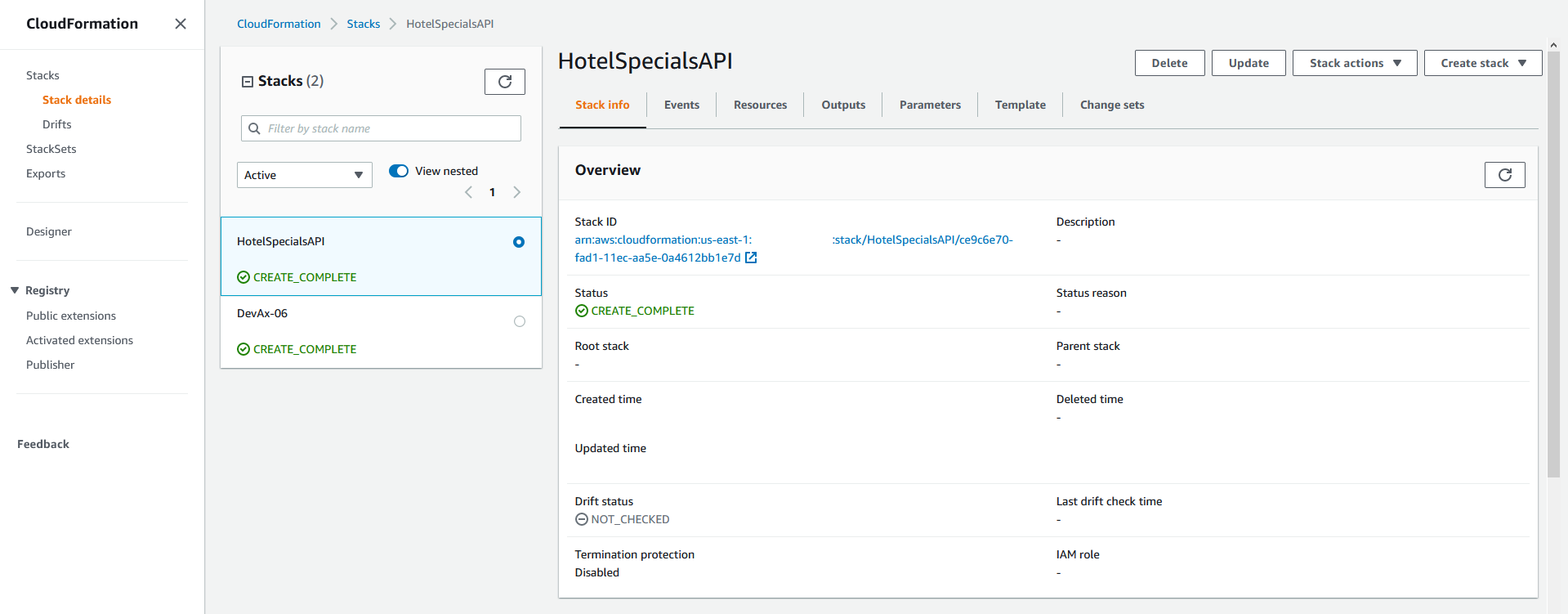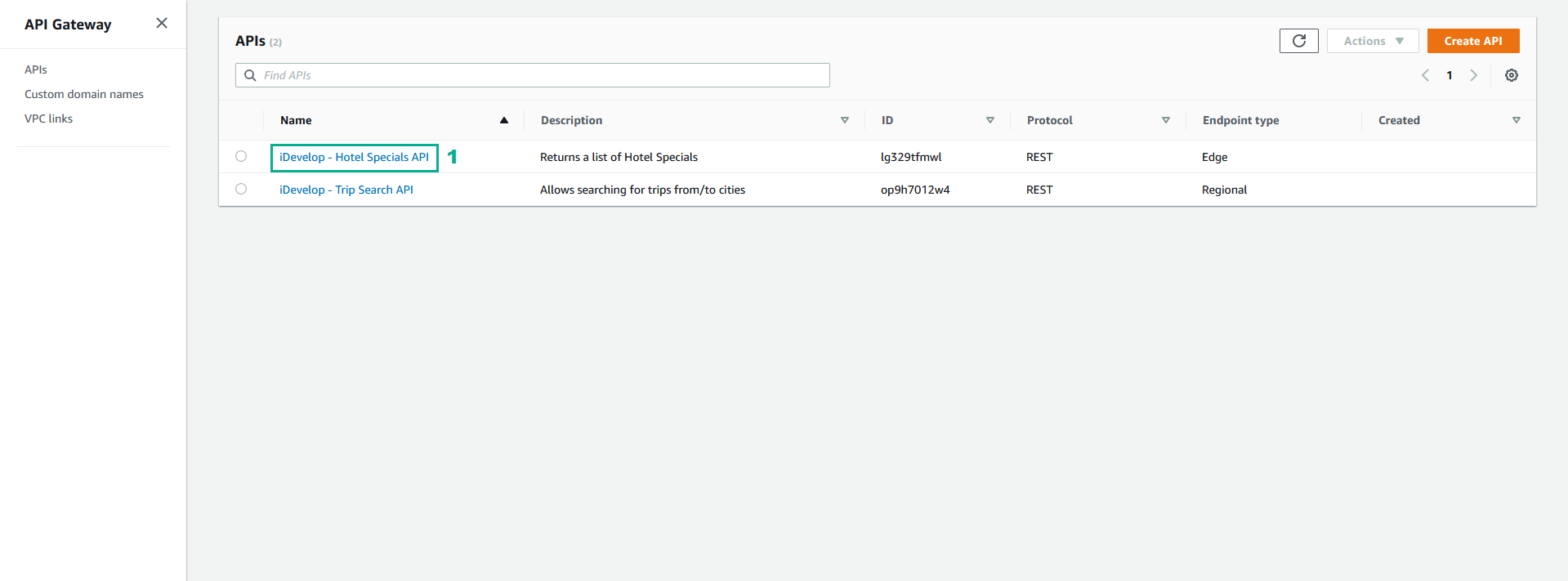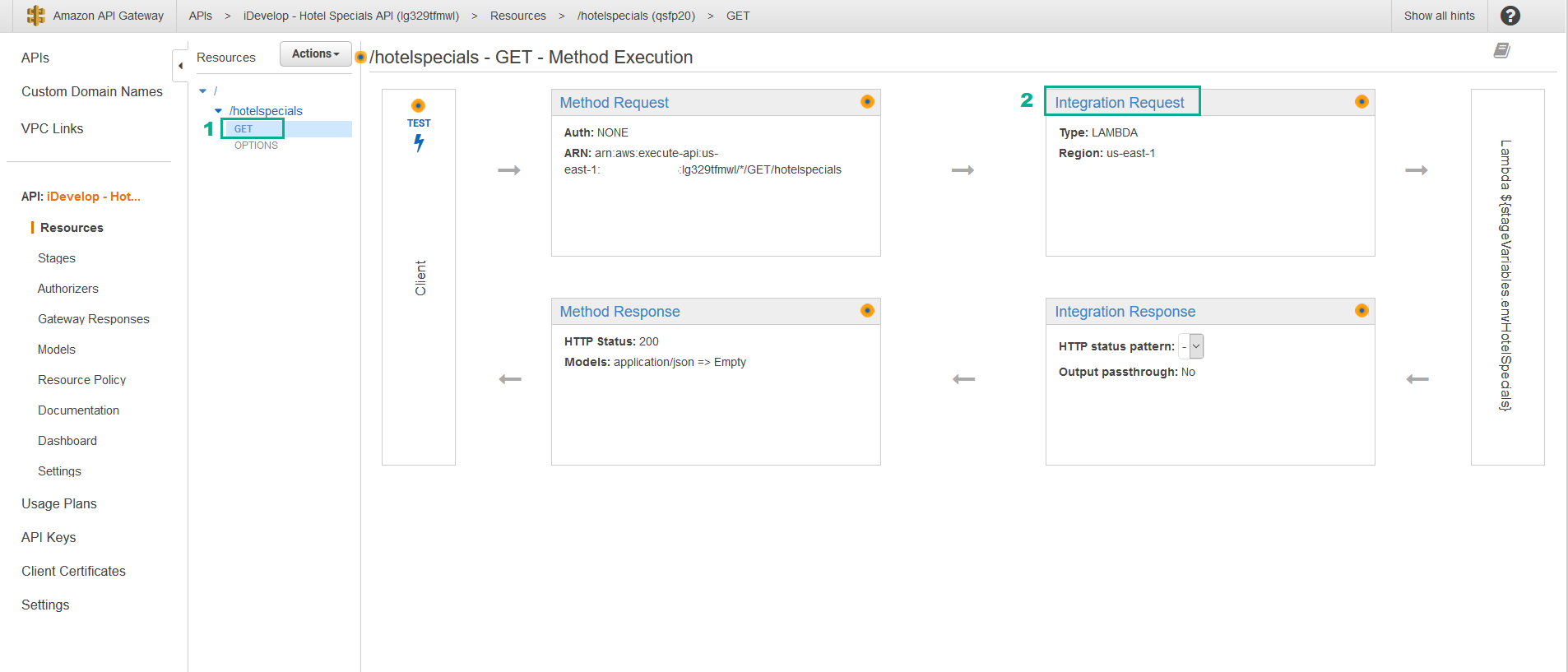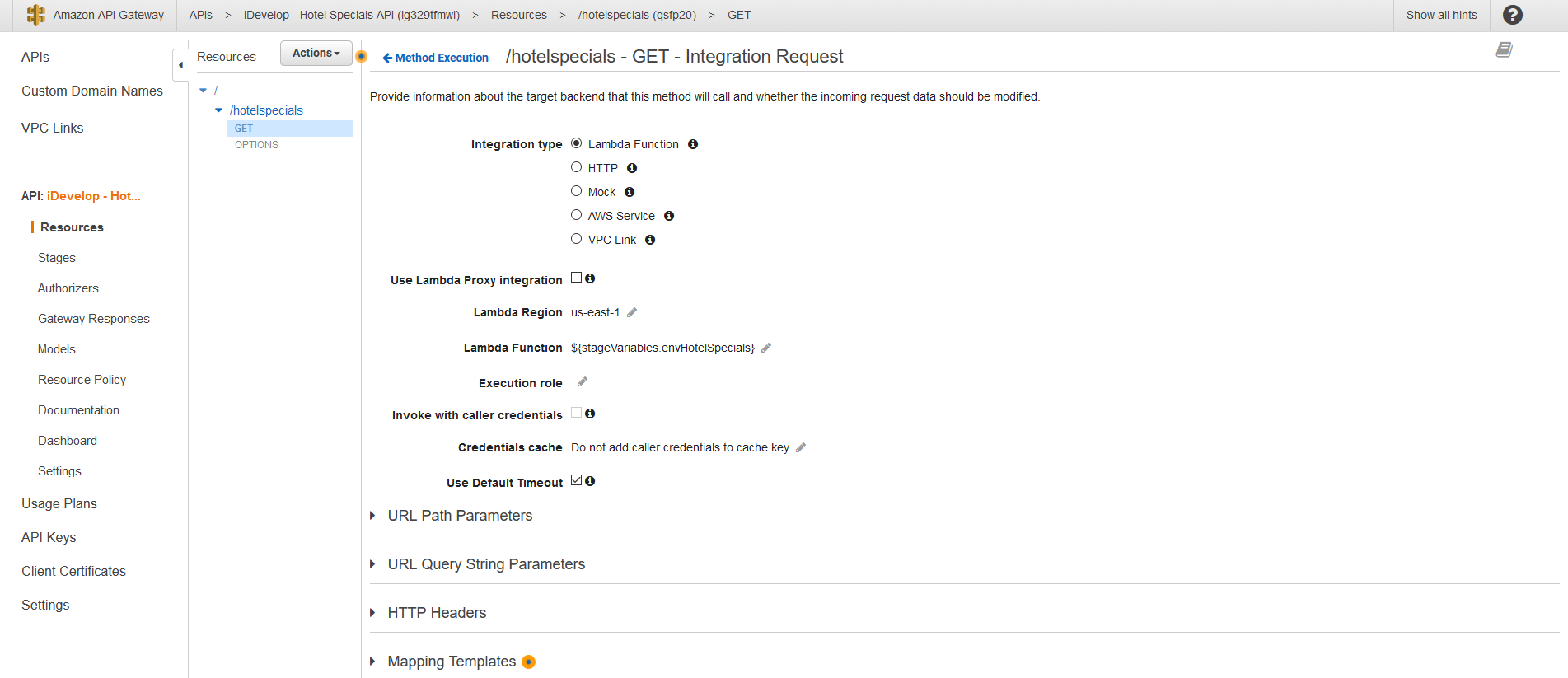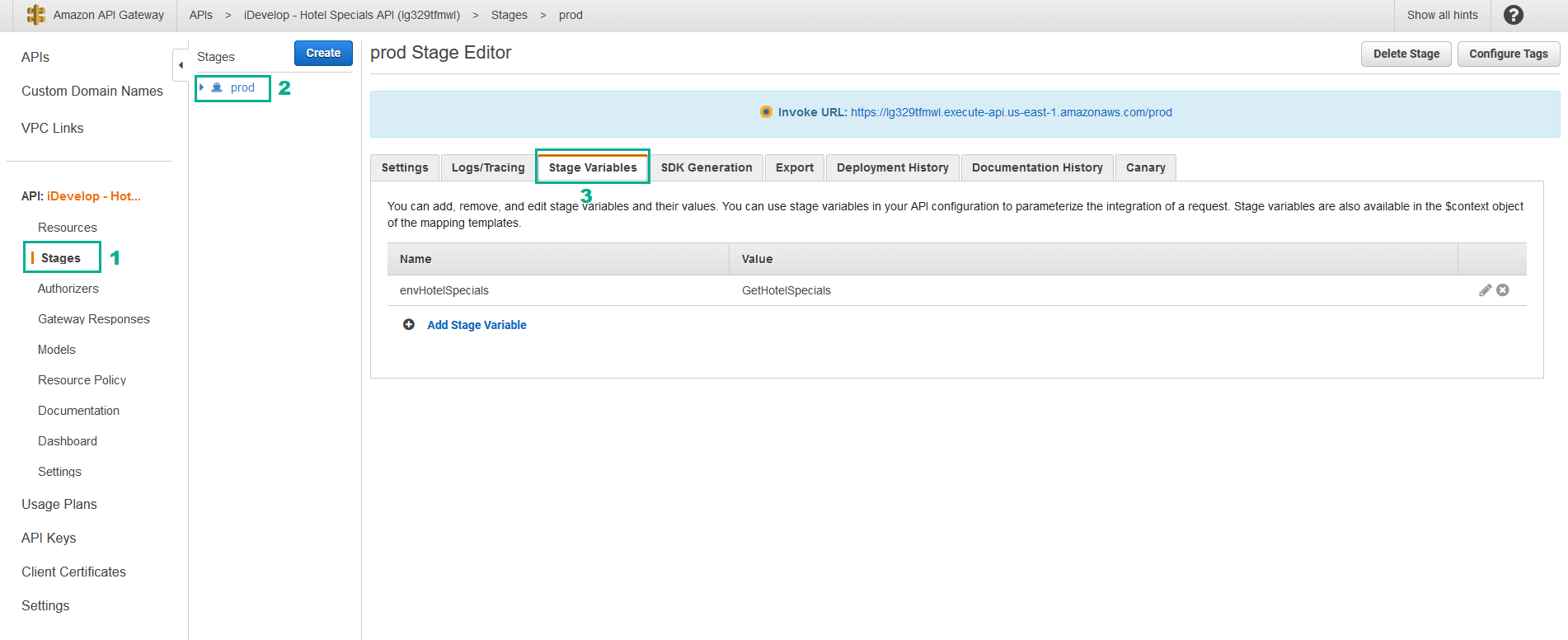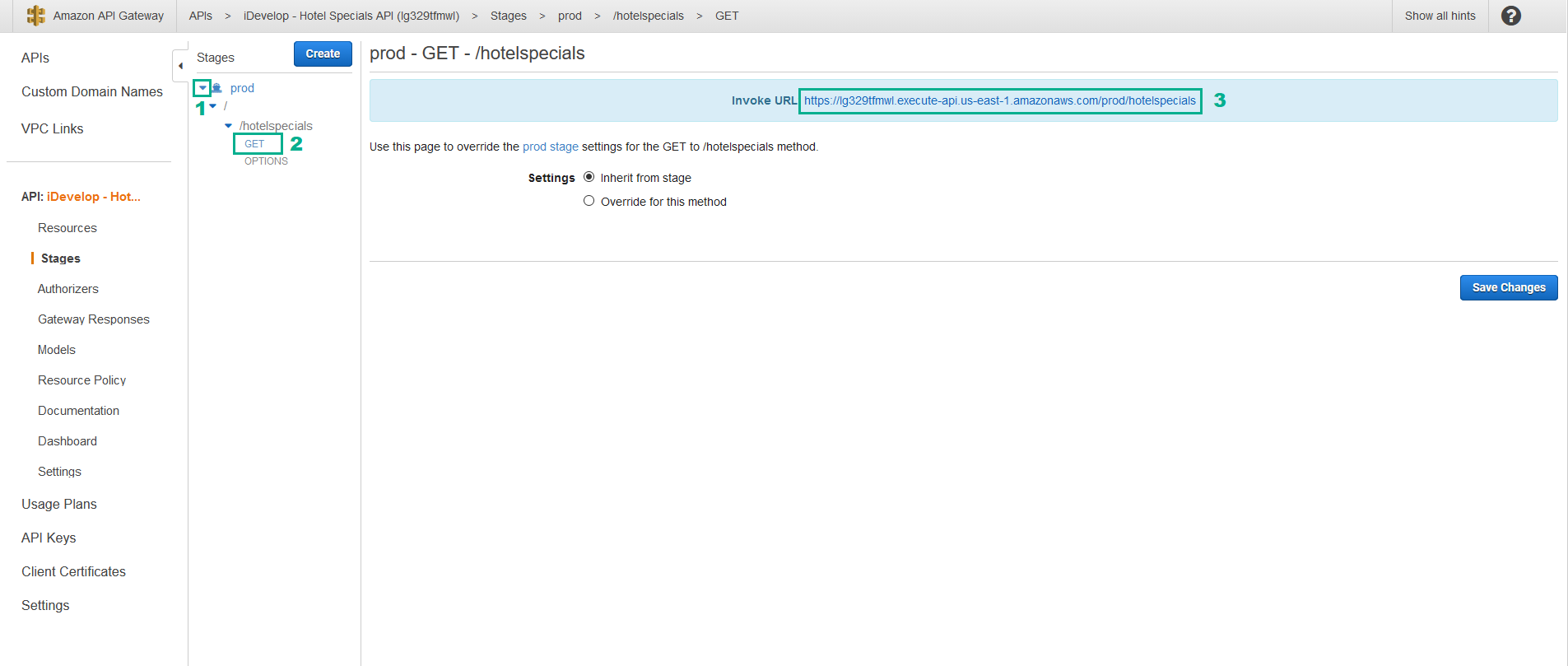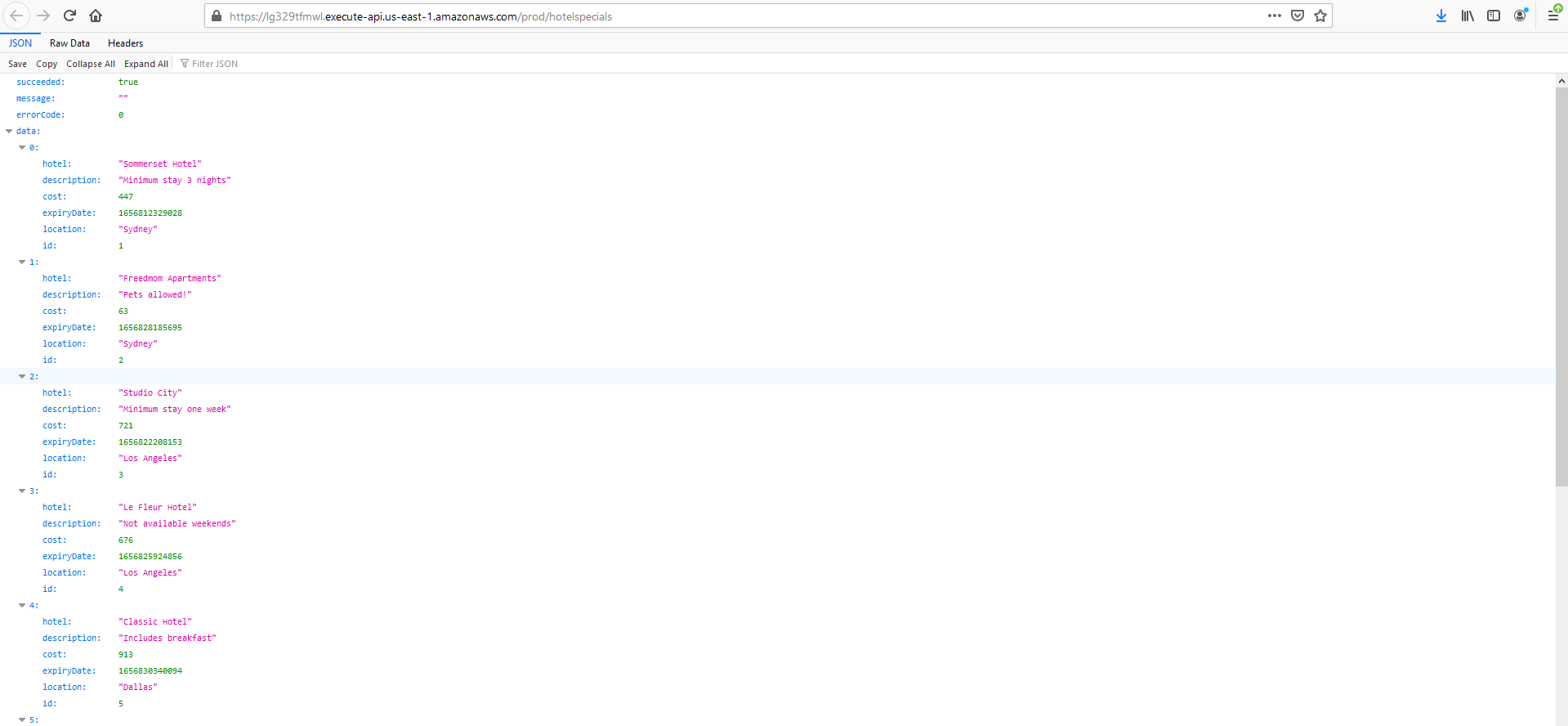Create And Expose the API with Amazon API Gateway
Create And Expose the API with Amazon API Gateway
- Go to AWS API Gateway console.
- In the Choose an API type section, find REST API - Develop a REST API where you gain complete control over the request and response along with API management capabilities.
- Click Build
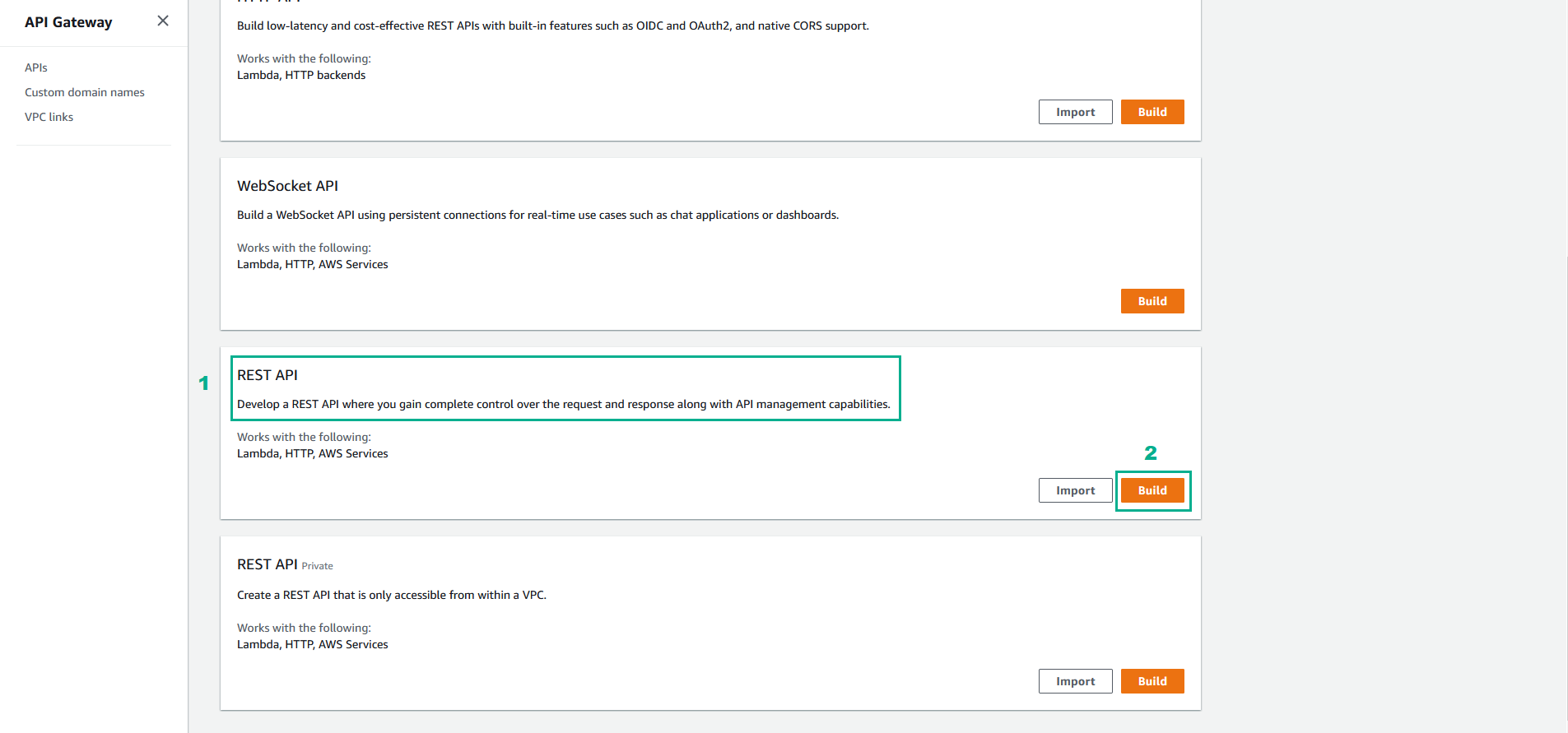
- Click OK
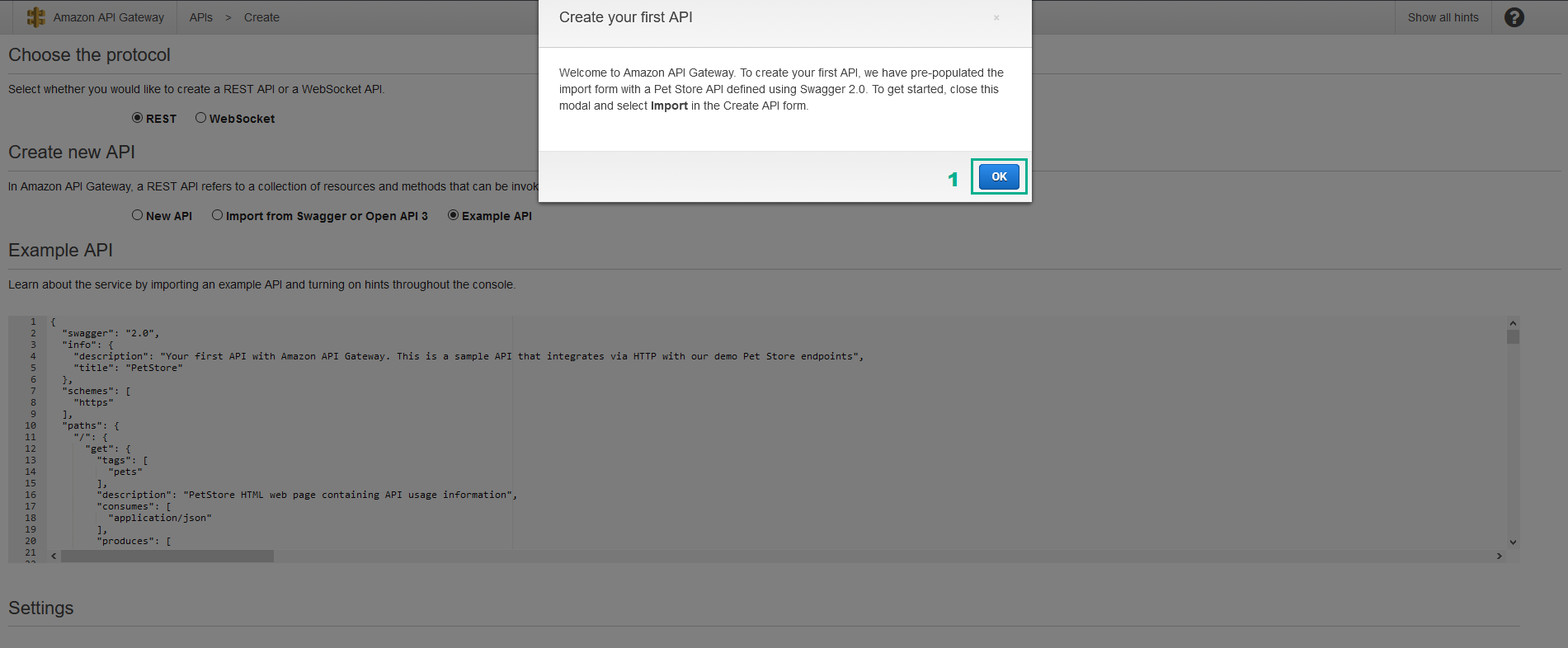
- In the Create new API section, select New API
- In the API name section, type
iDevelop - Trip Search API - In the Description section, type
Allows searching ở trips from/to cities - Click Create API
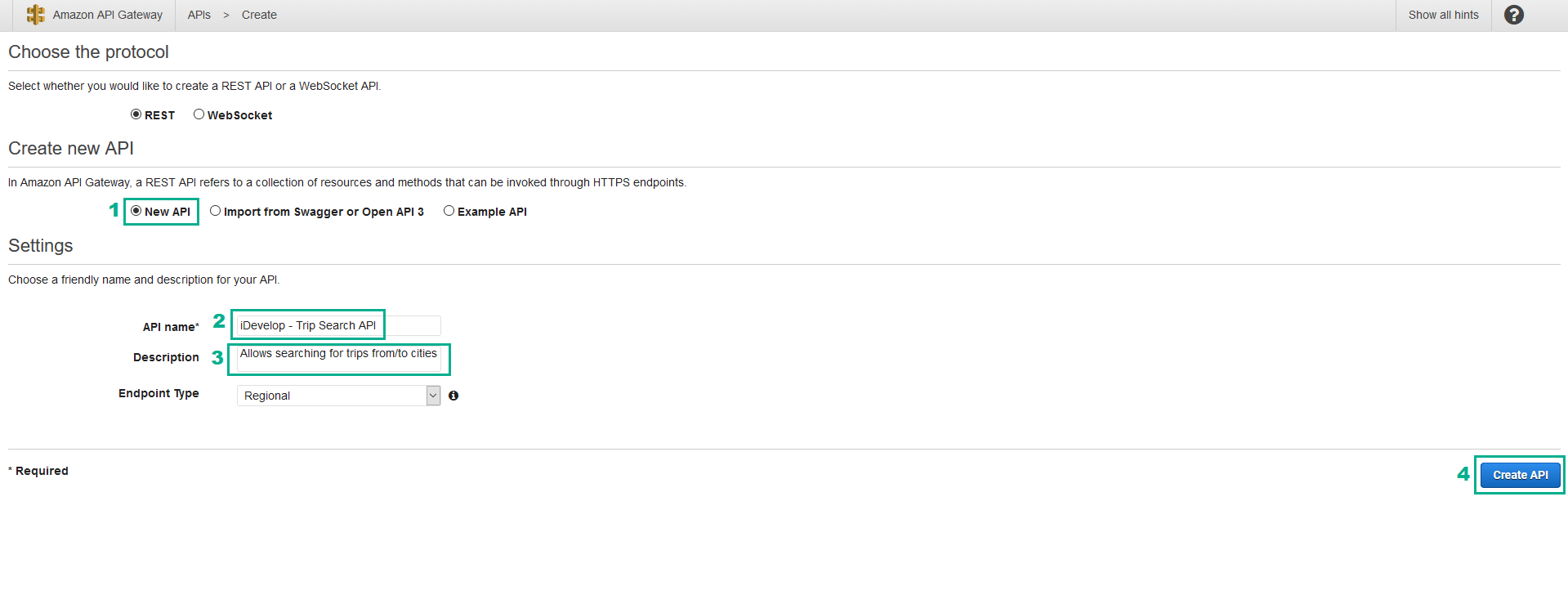
- The API will be created, and have a root path element and nothing else.
- Click Actions
- Click Create Resource
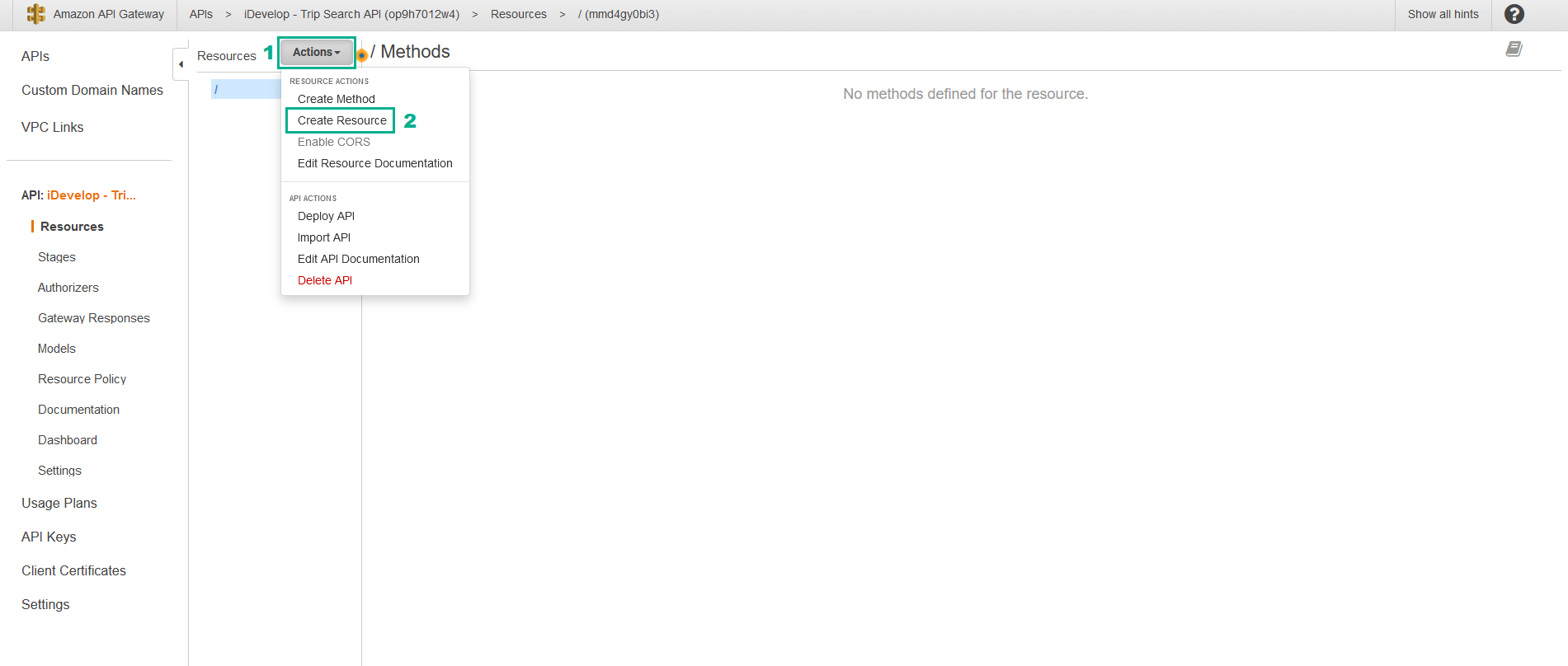
- In the New Child Resource page
- In the Resource Name section, type
trips - Check Enable API Gateway CORS
- Click Create Resource
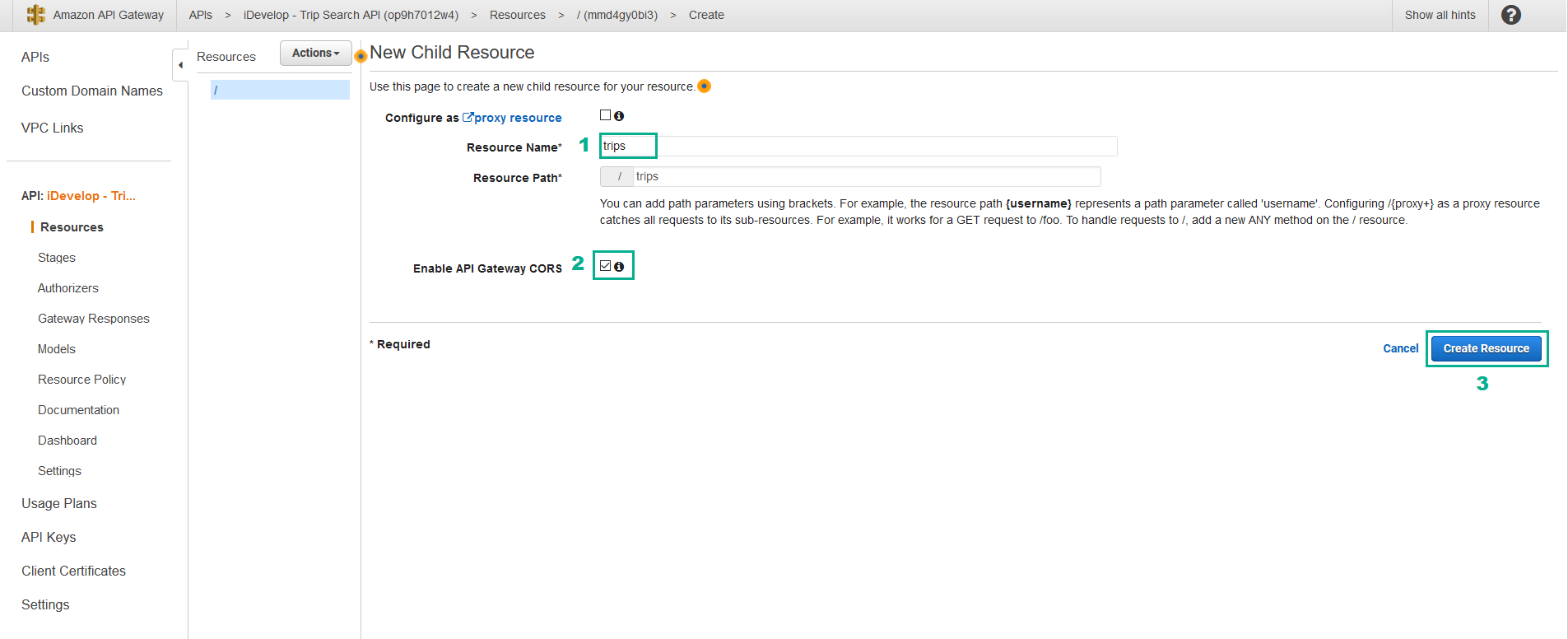
- The /trips resource will be created. Click on the /trips link
- Click Actions
- Click Create Method
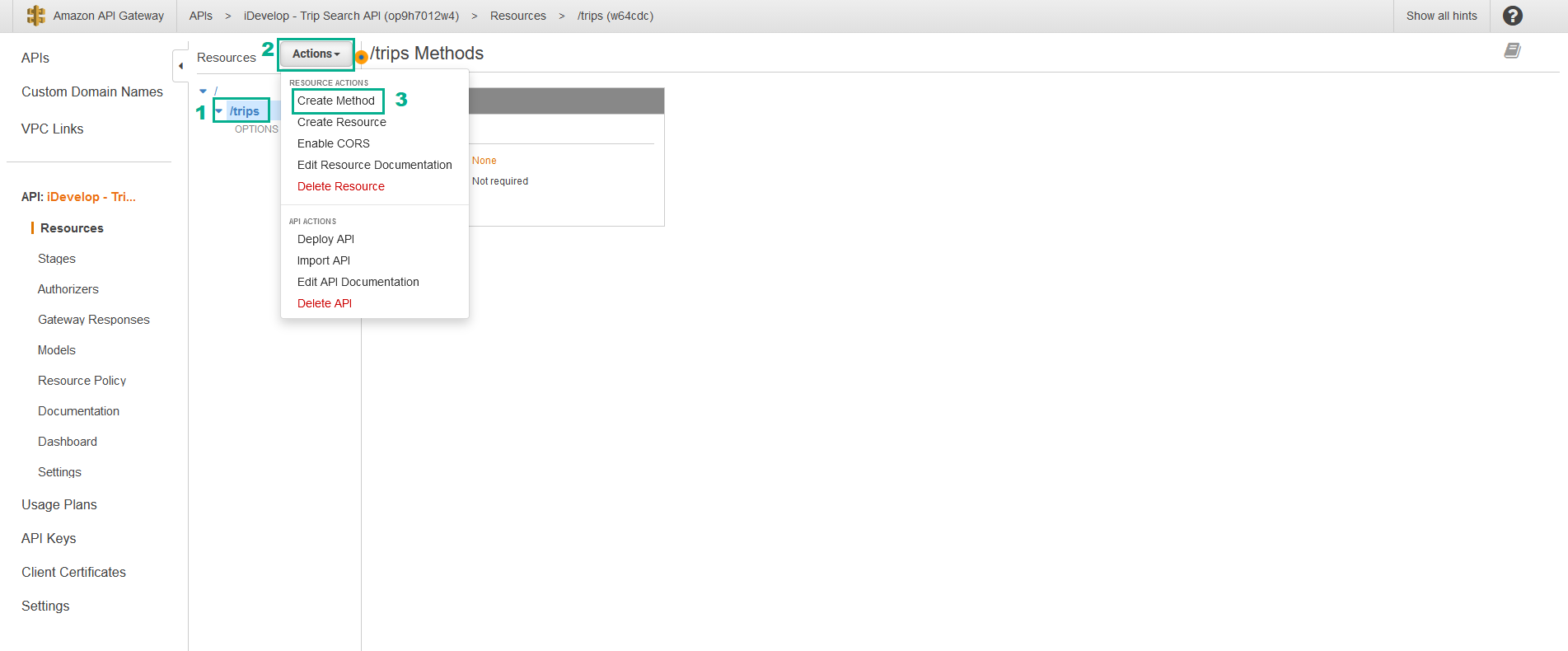
- In the dropdown list that appears, select GET
- Click the grey tick next to the dropdown list to commit the change.
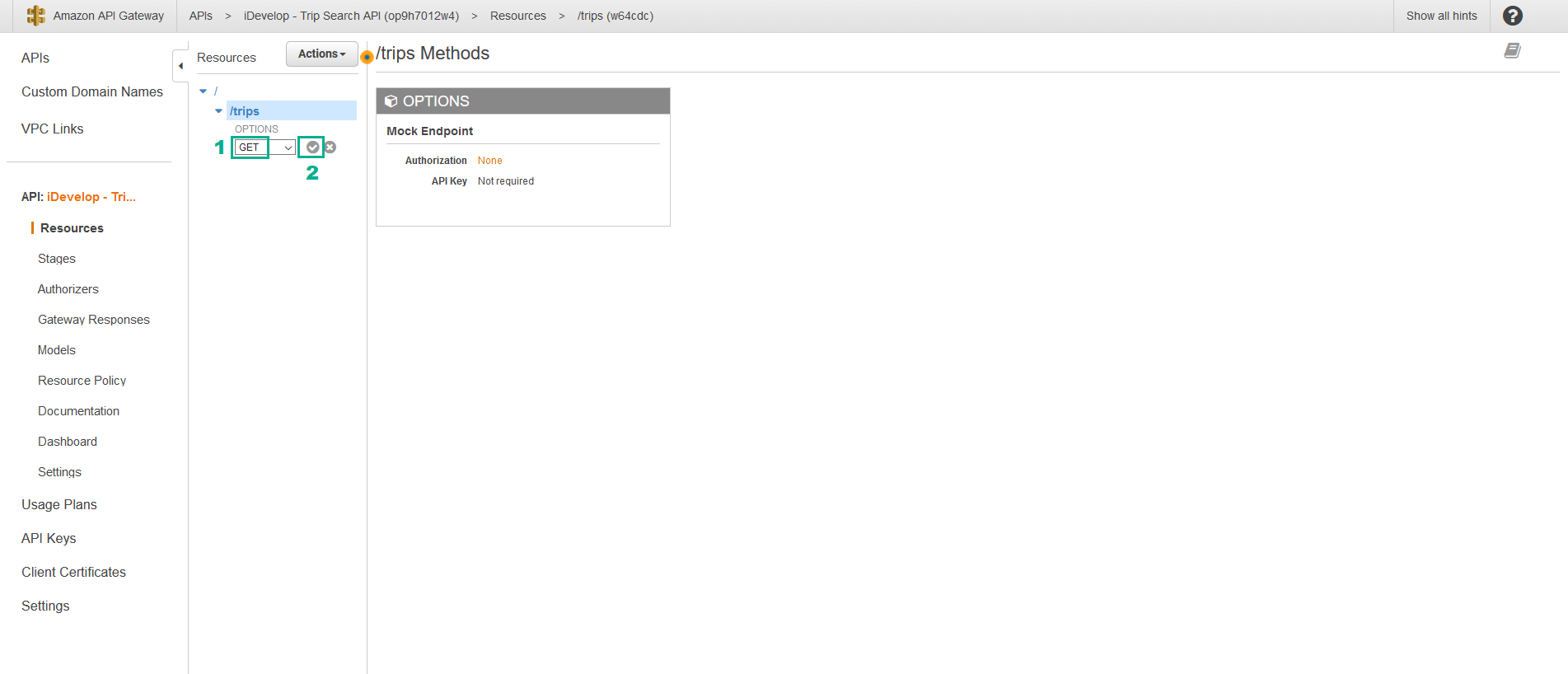
- In the Lambda Region section, select your Region
- In the Lambda Function section, type
idevelopand select idevelopTripSearchFull - Click Save
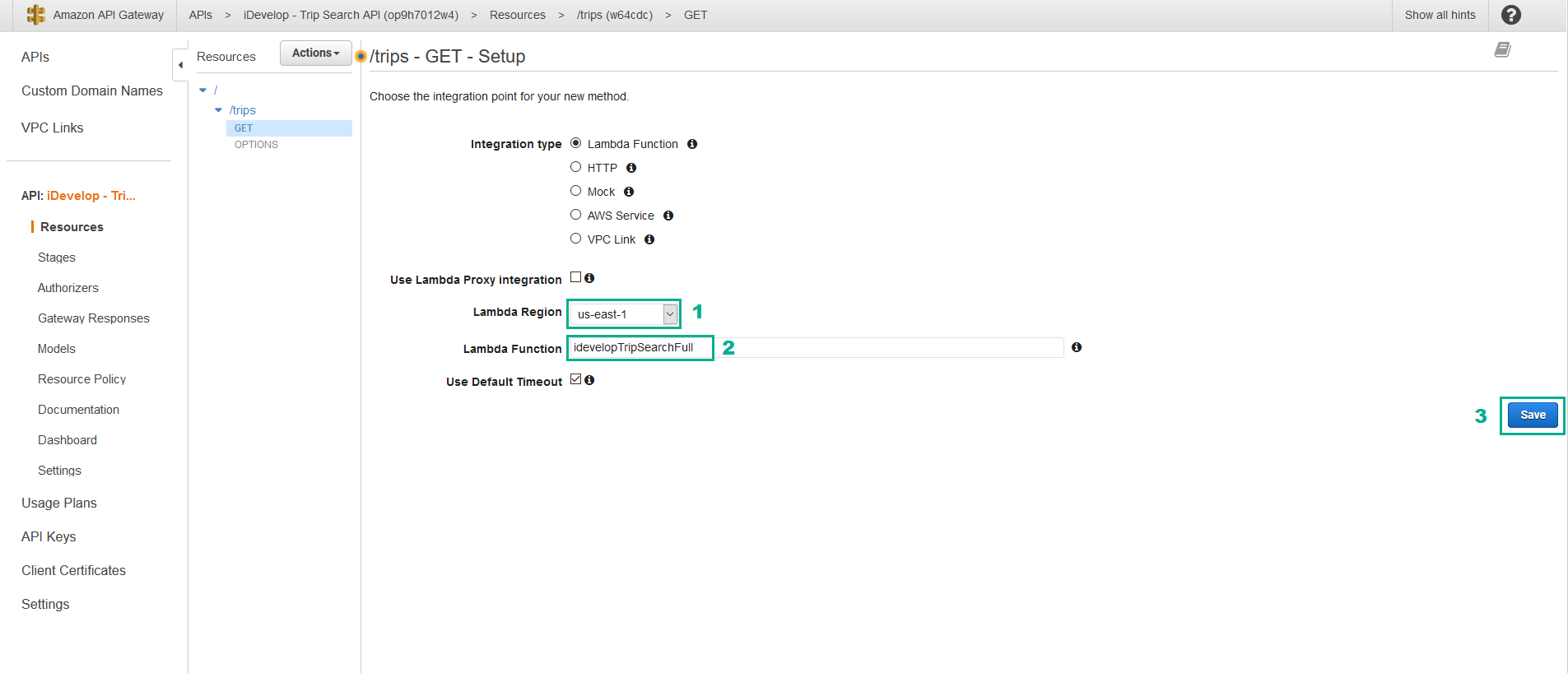
- Click OK
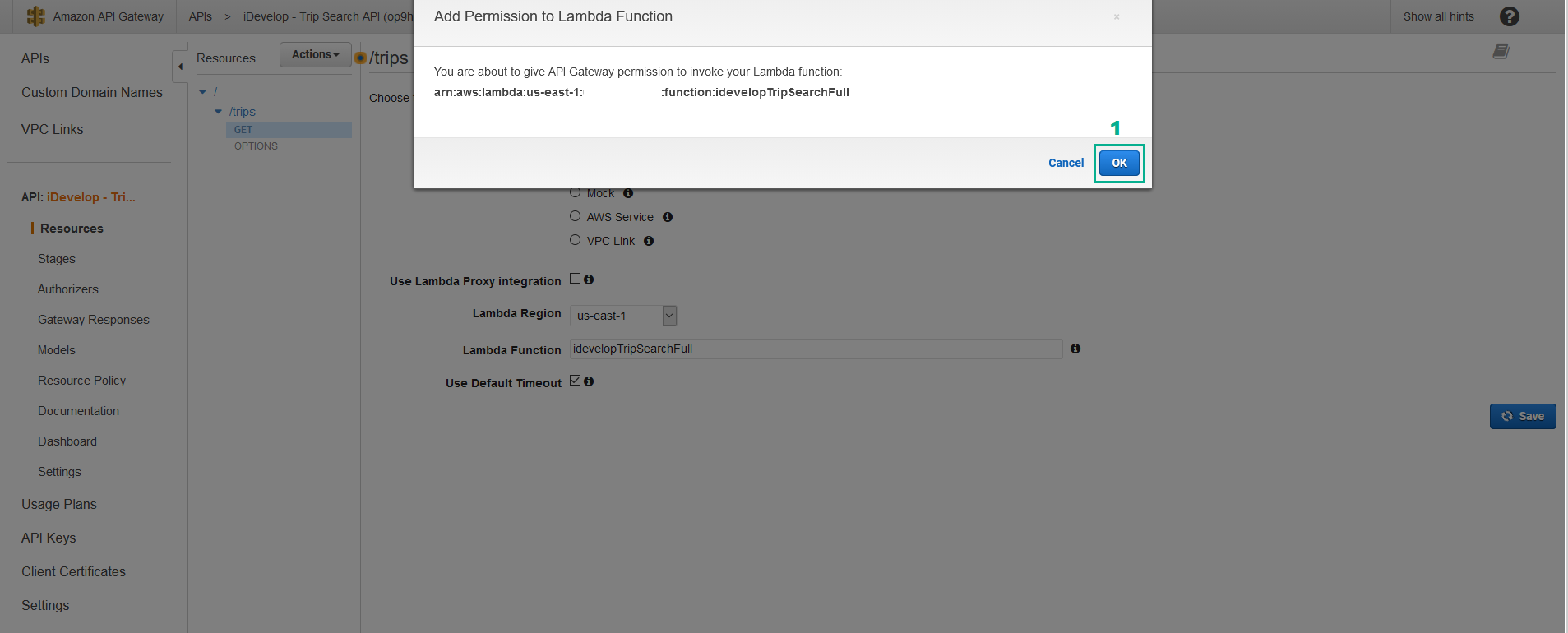
- When the method is created, you will see the Method Execution panel:
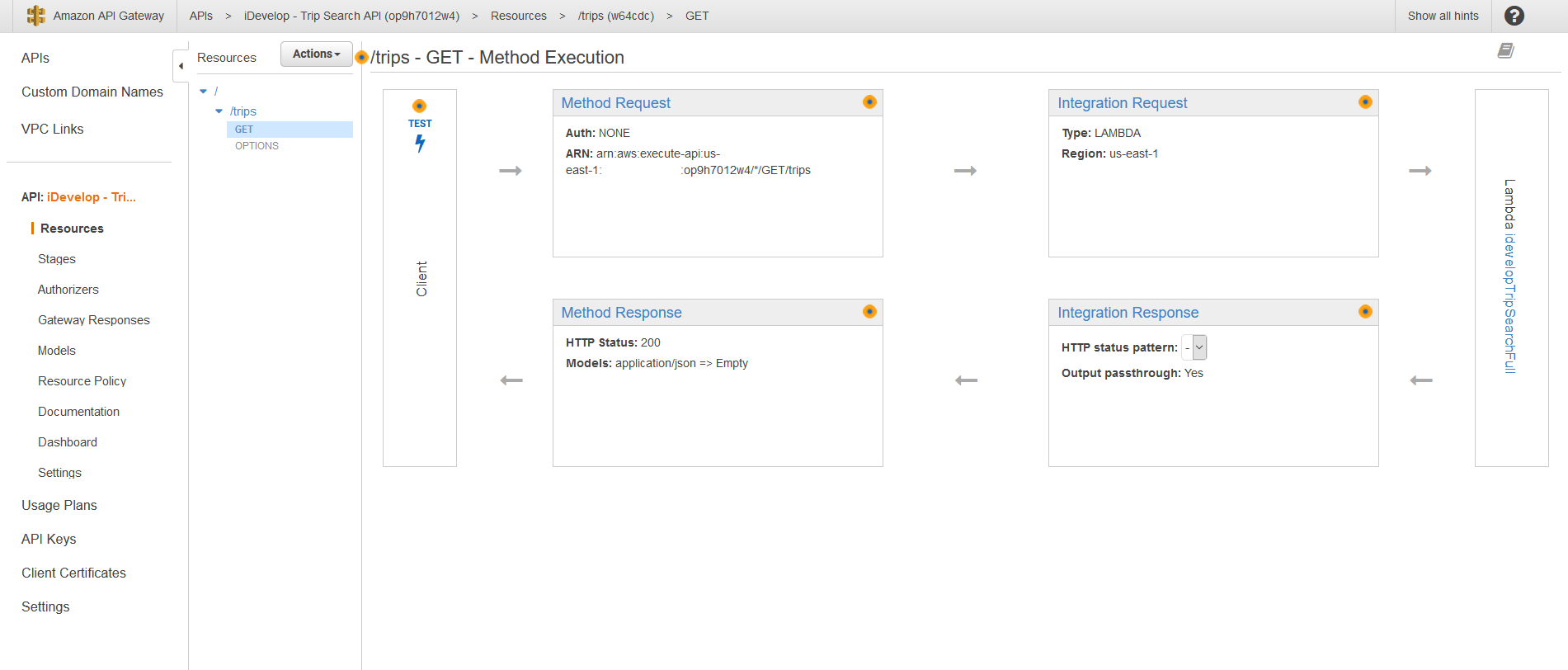
- Click Test
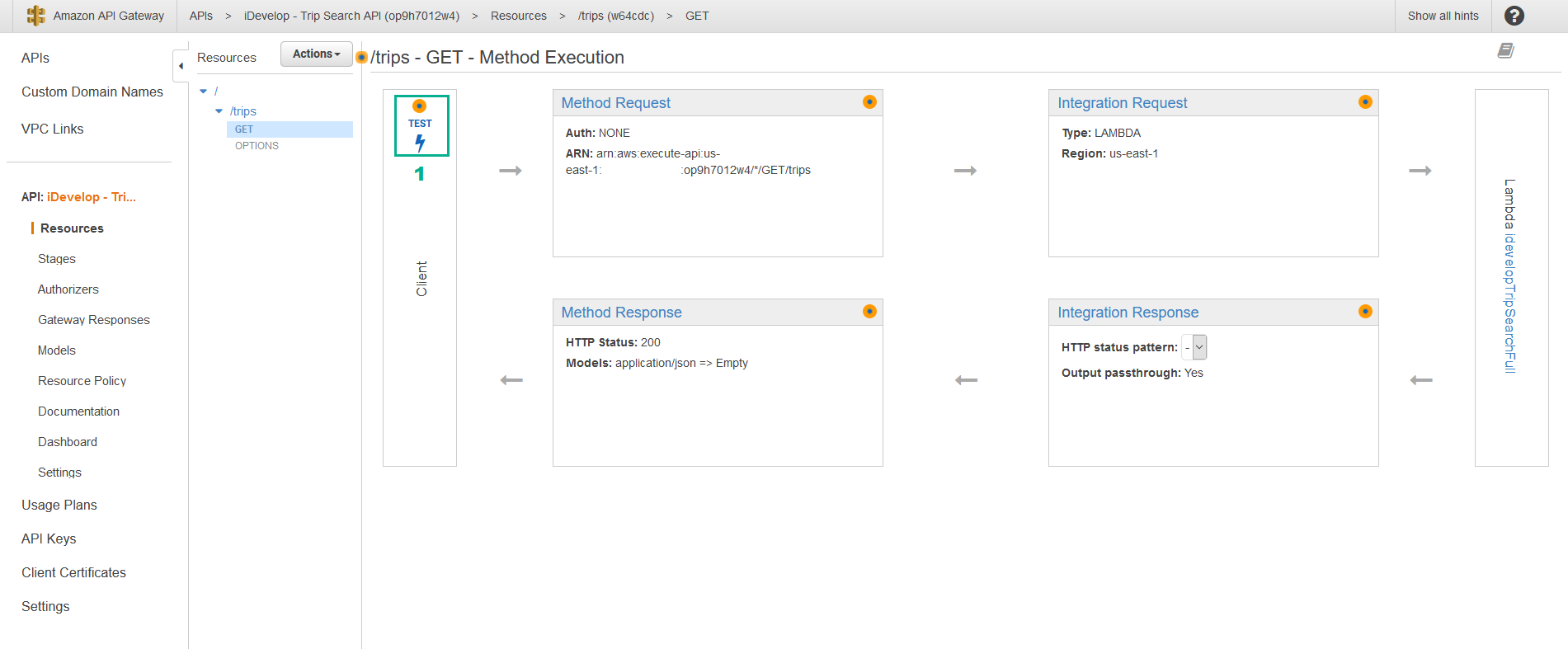
- Click Test
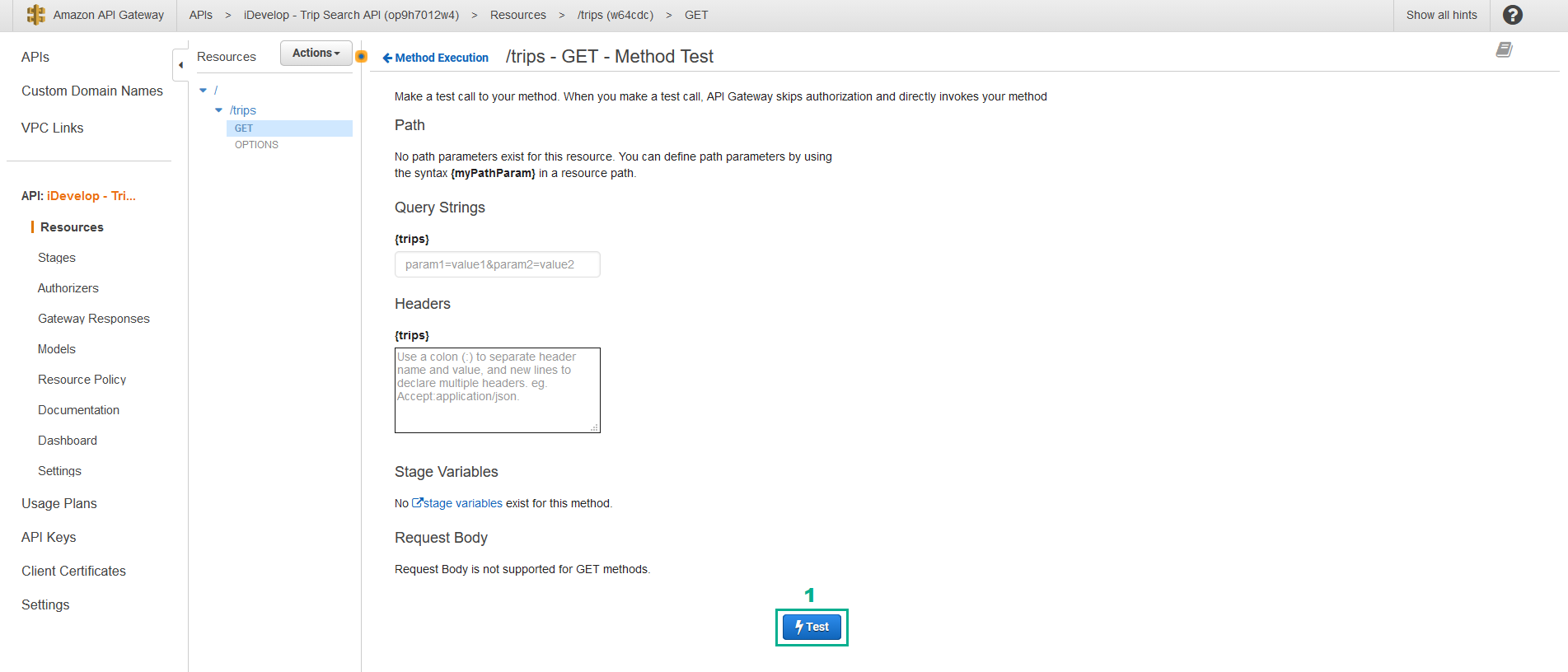
- After a moment or two for the Lambda function to initialise and execute, you should see an output similar to this:
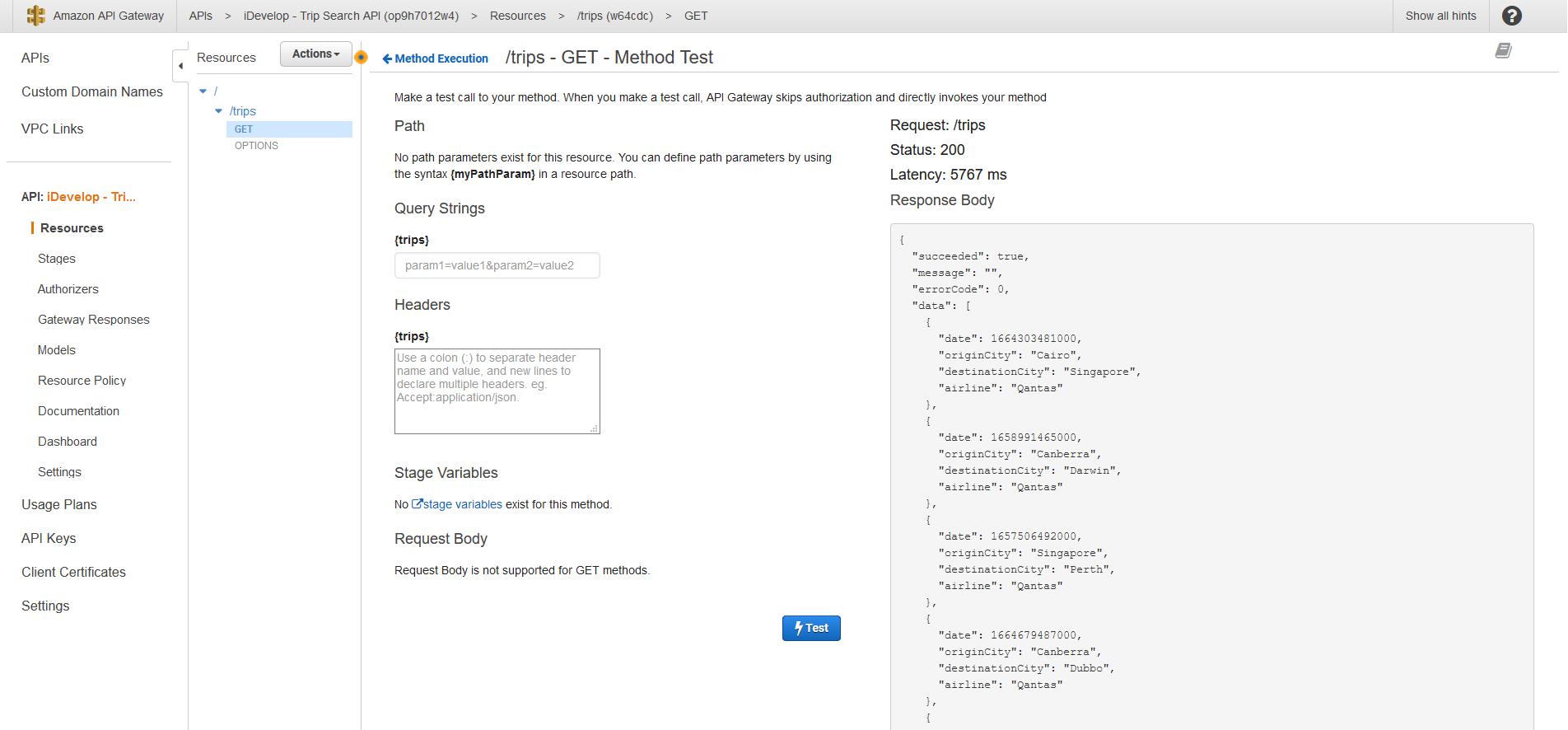
- Click /trips
- Click Actions
- Click Enable CORS
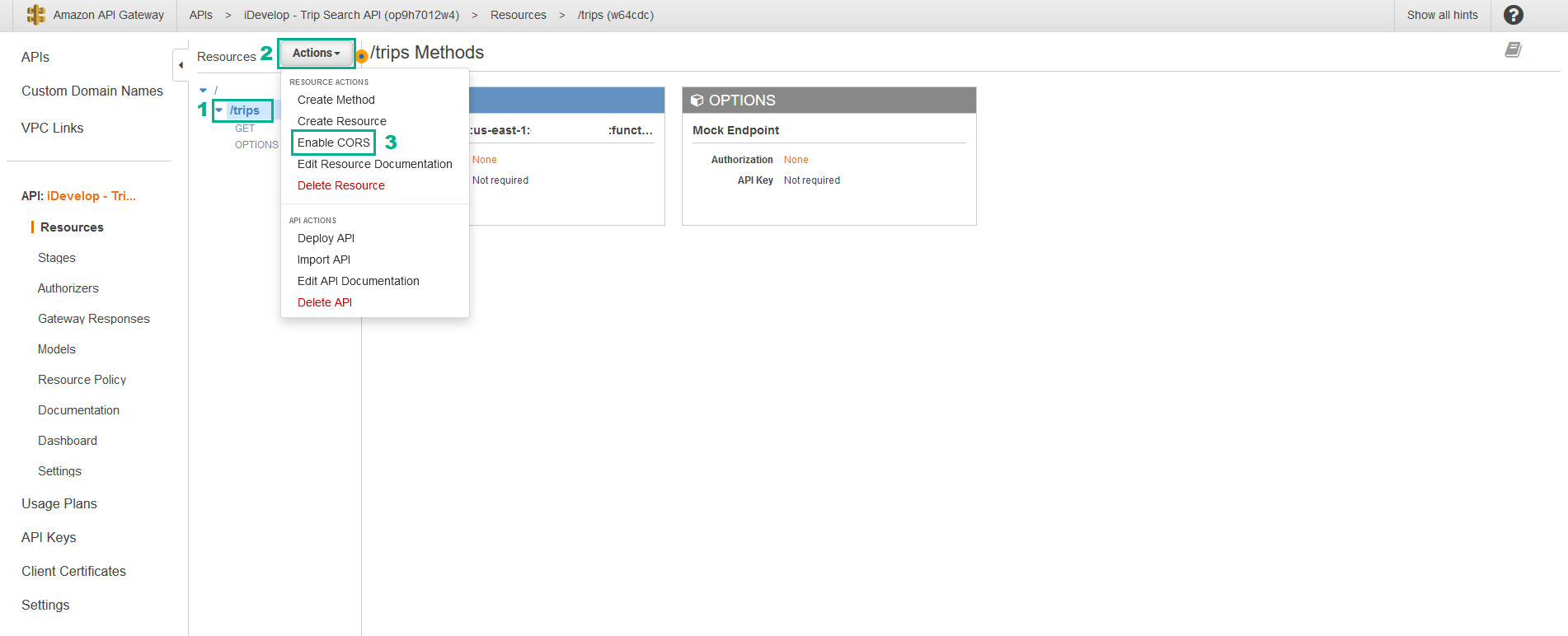
- Click Enable CORS and replace existing CORS headers
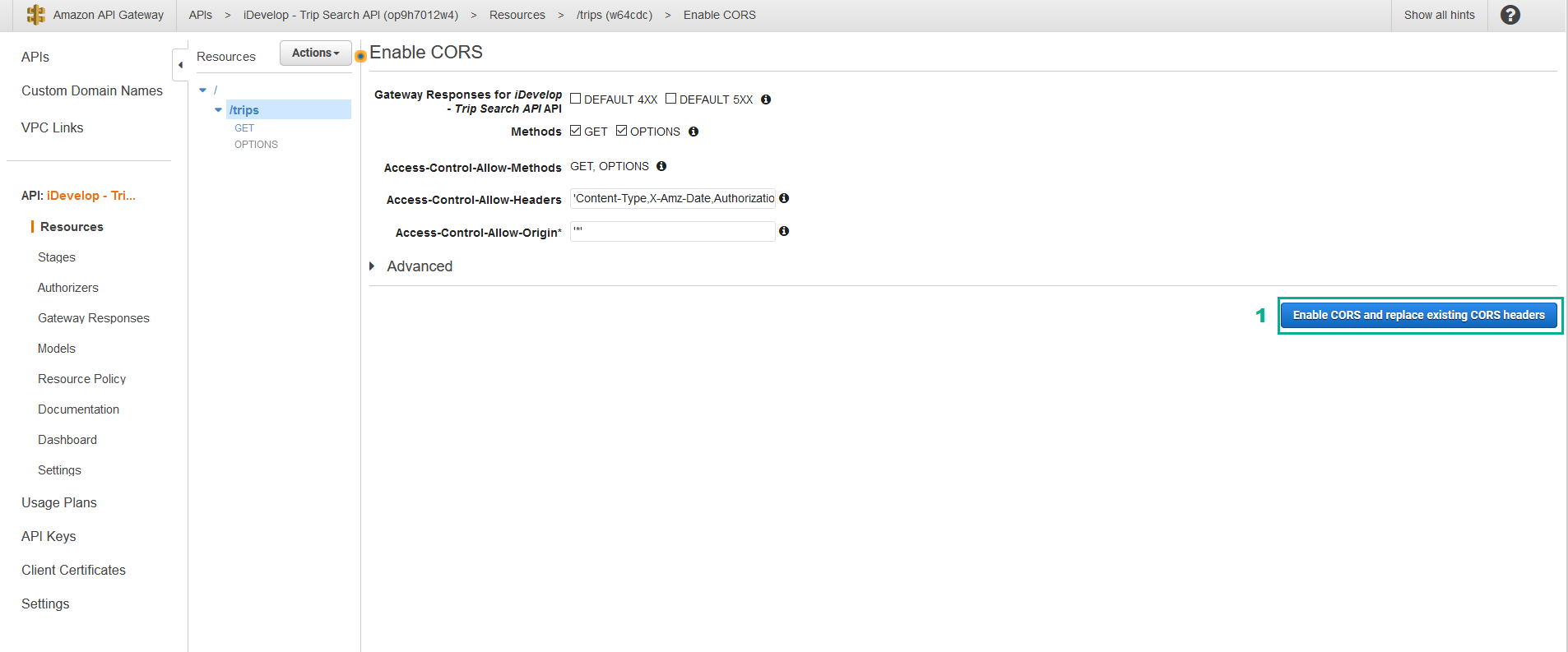
- Click Yes, replace existing values
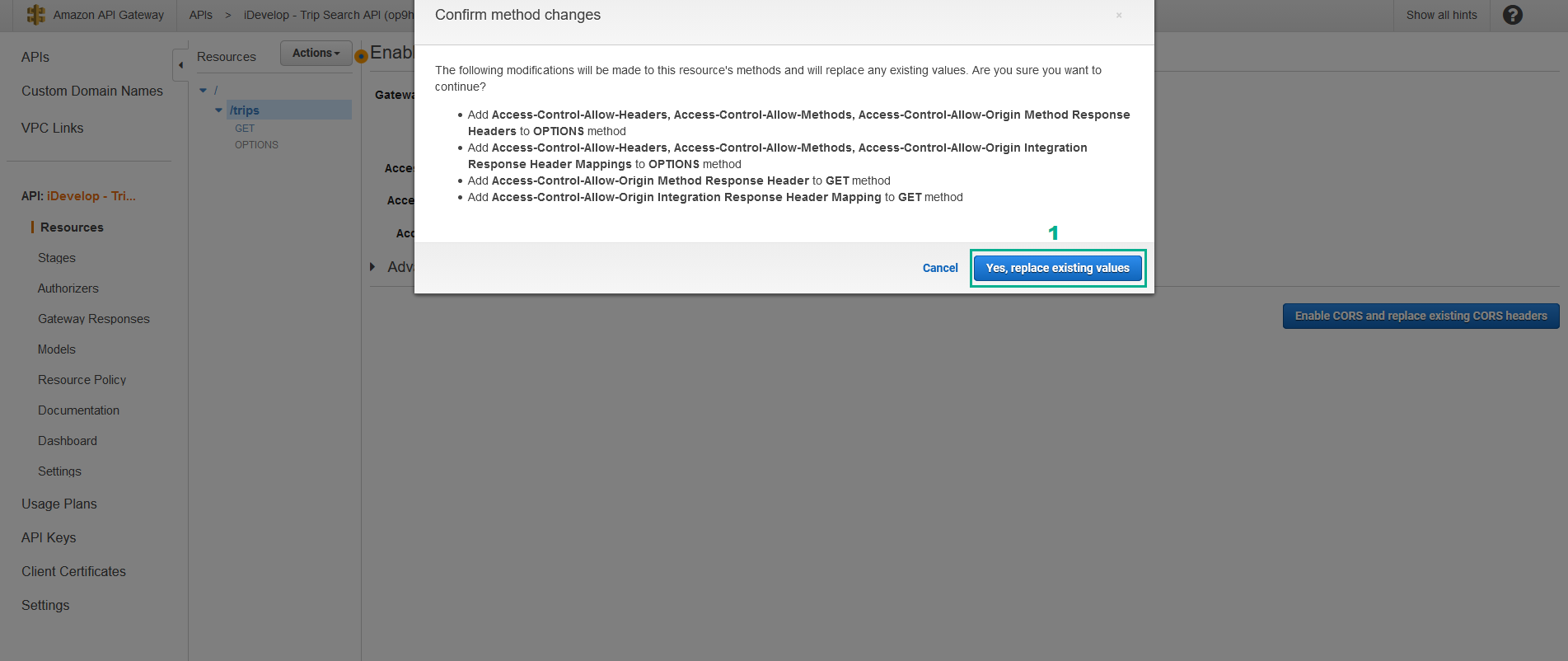
- When each of the listed items have a green tick against them, you can move on to the next section. This will only take a moment.
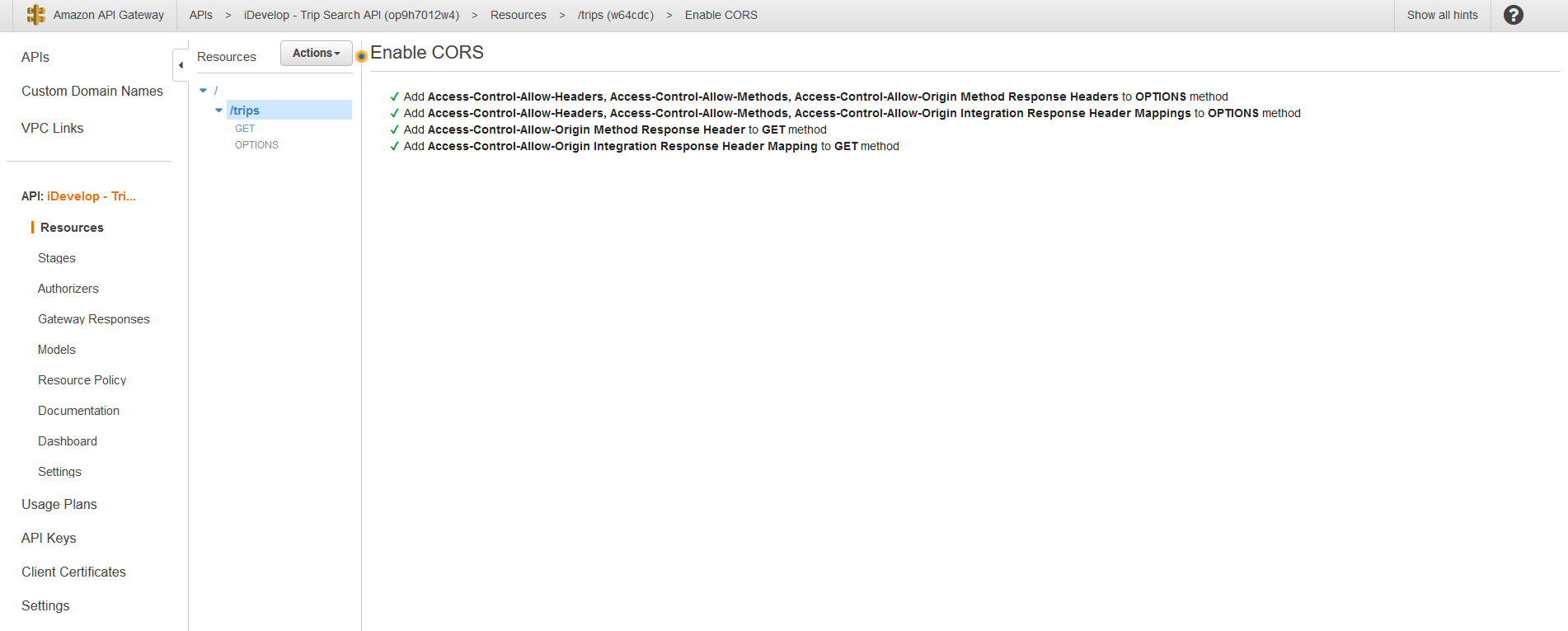
Expose the /tripsfromcity RESTful API endpoint
The first path we exposed was quite simple - /trips gets all the trips in the system. But we know our source code implementation allows us to specify a filter to query for trips that originate from a particular city or have a particular destination, so we want to expose this functionality to our API consumers. First, we will expose the /tripsfromcity path.
- In the Resources section, click /
- Click Actions
- Click Create Resource
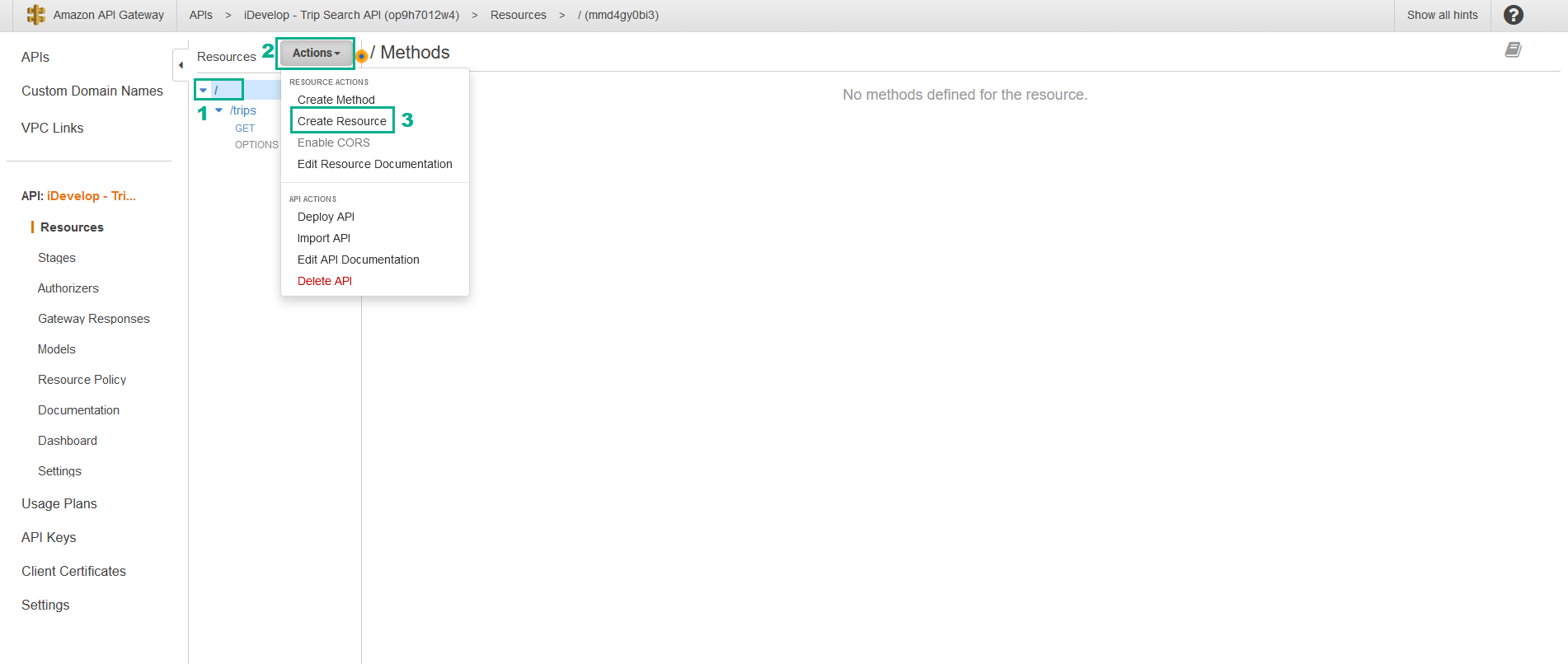
- In the Resource Name section, type
tripsfromcity
- Select Enable API Gateway CORS
- Click Create Resource
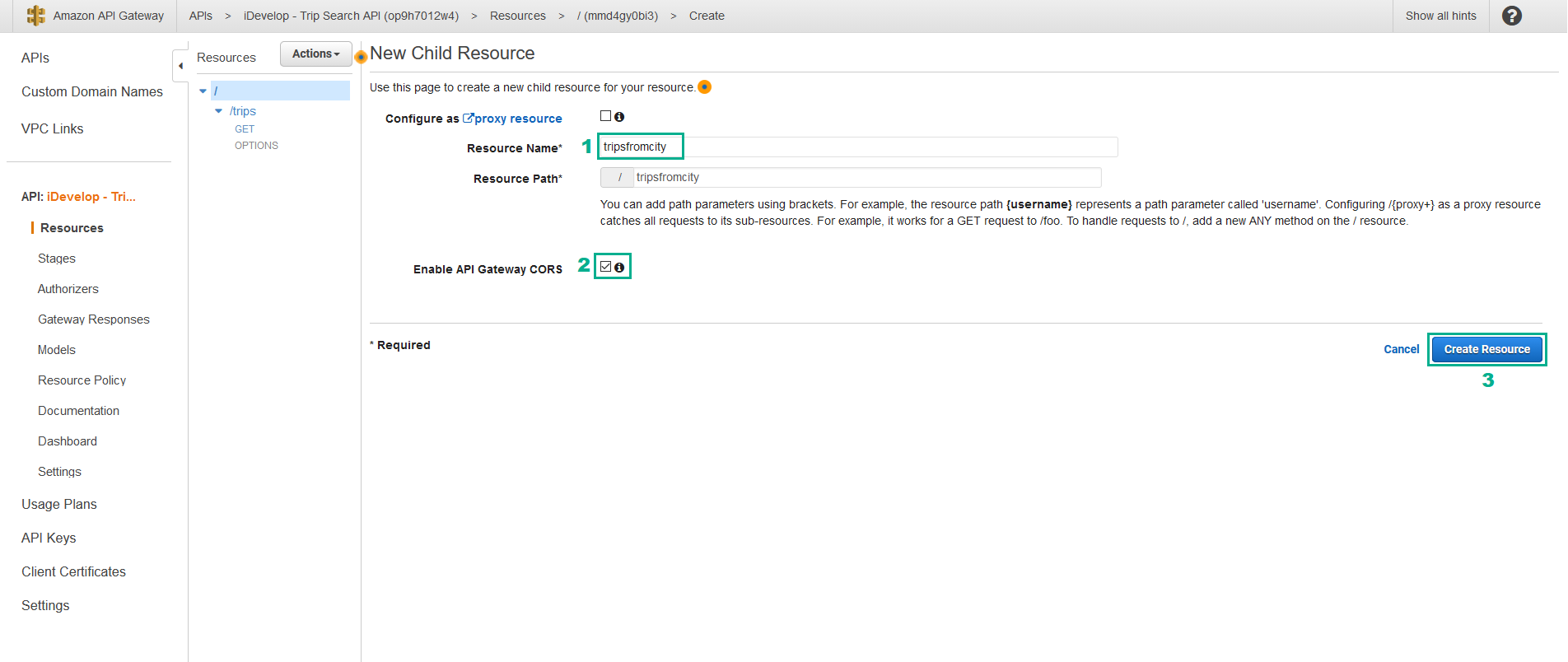
- Our call into the Lambda function requires a city parameter. We will follow the standard pattern for RESTful interfaces, and pass this parameter in as a URL parameter. Select /tripsfromcity
- Click Actions
- Click Create Resource
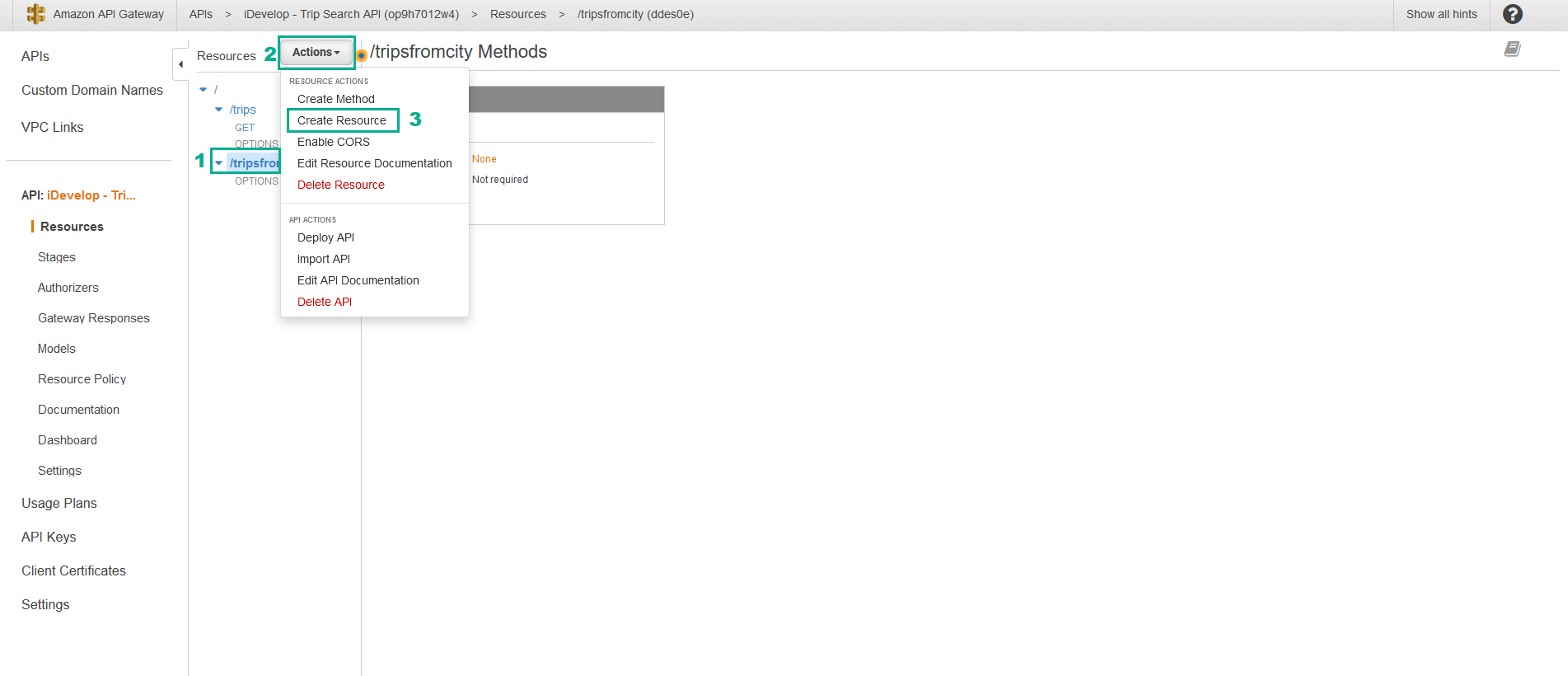
- In the Resource Name section, type
{city}
- In the Resource Path section, delete the default and replace with
{city} - Click Create Resource
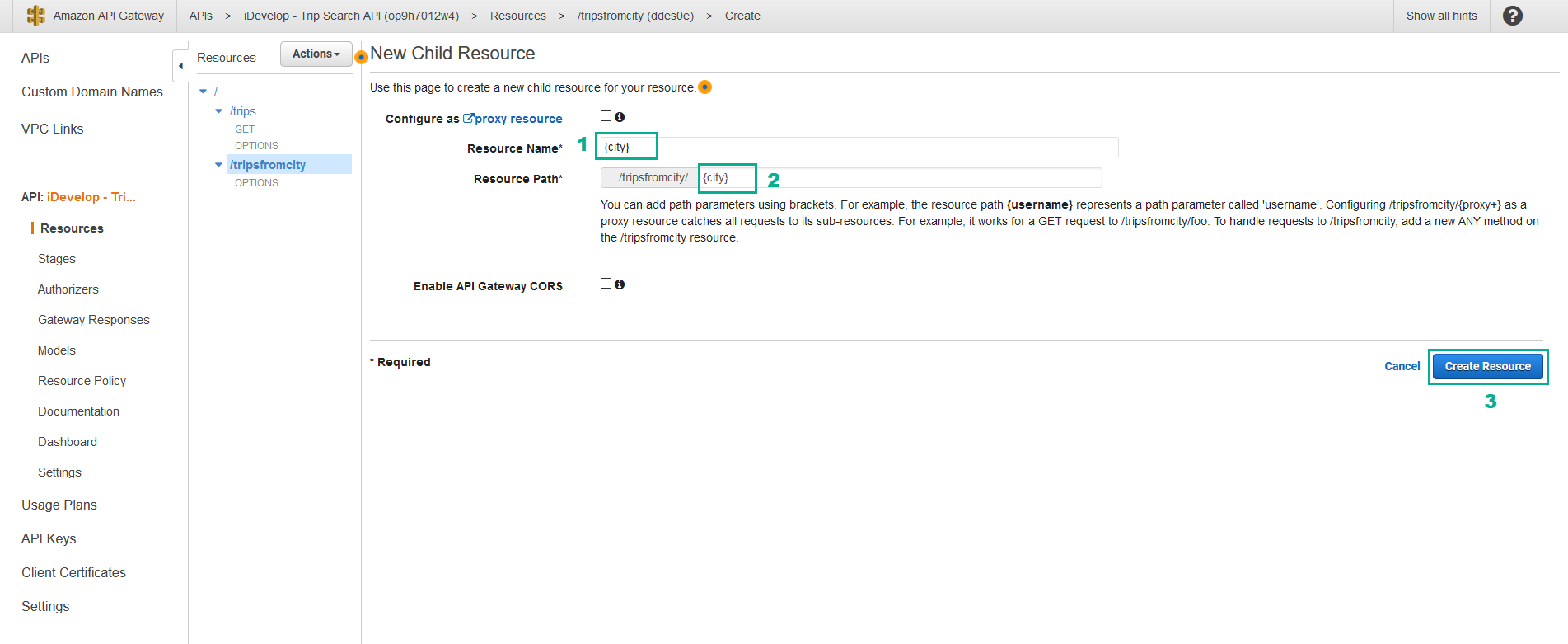
- Click /{city}
- Click Actions
- Click Create Method
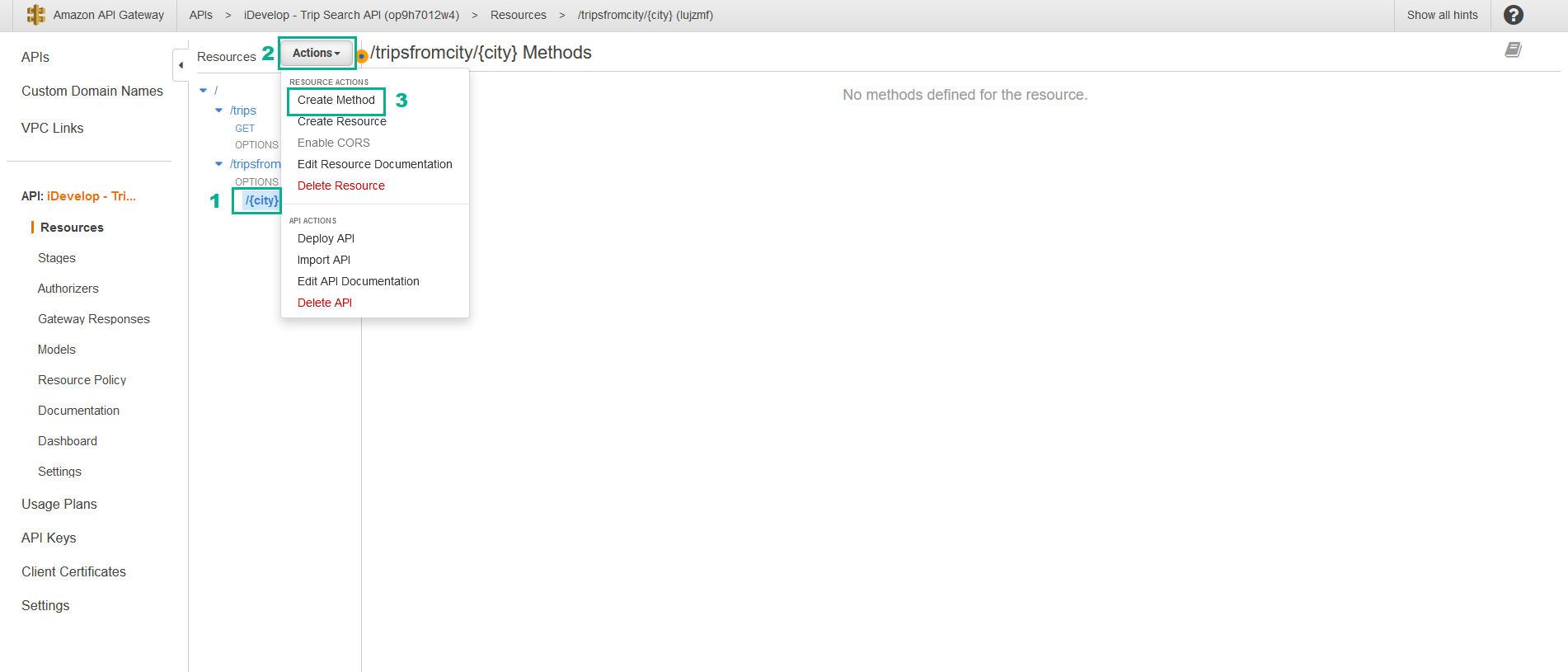
- In the dropdown list that appears, select GET
- Click the grey tick next to the dropdown list to commit the change.
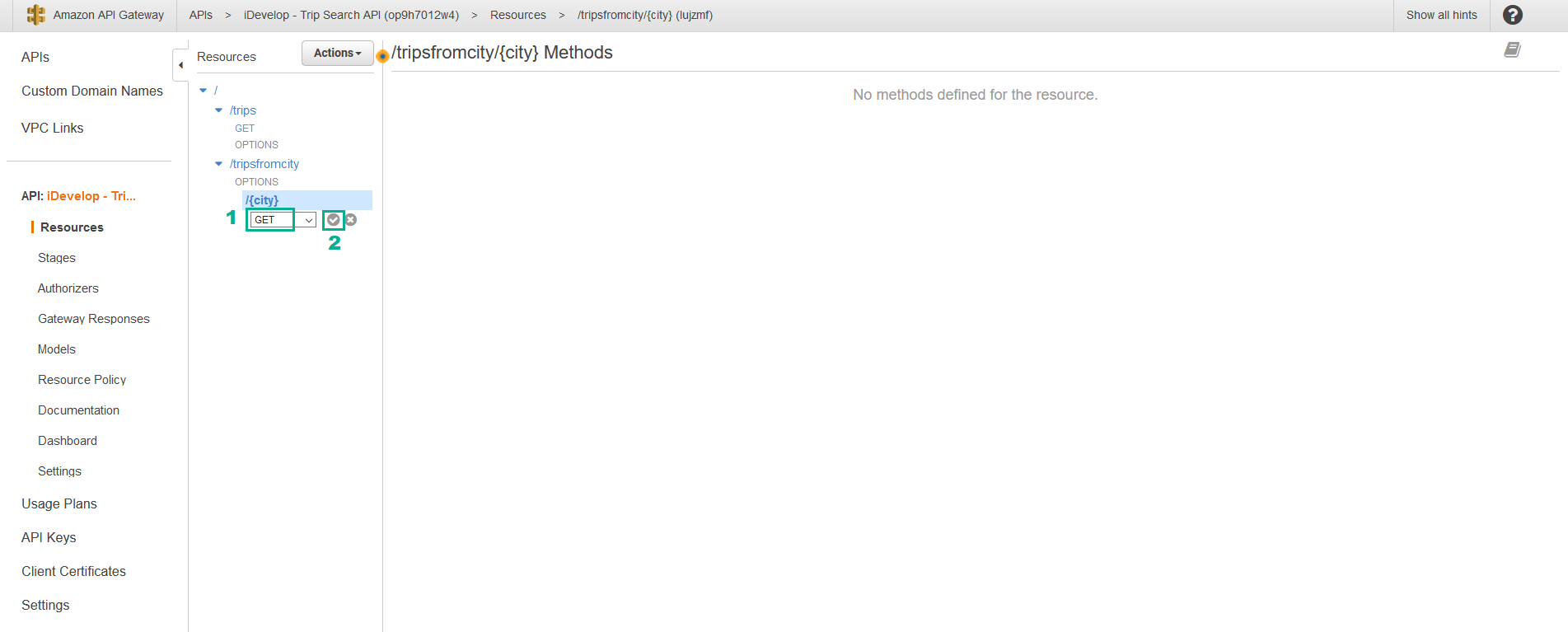
- In the Lambda Region section, select your Region
- In the Lambda Function section, type
idevelopand select idevelopTripSearchFromCity - Click Save
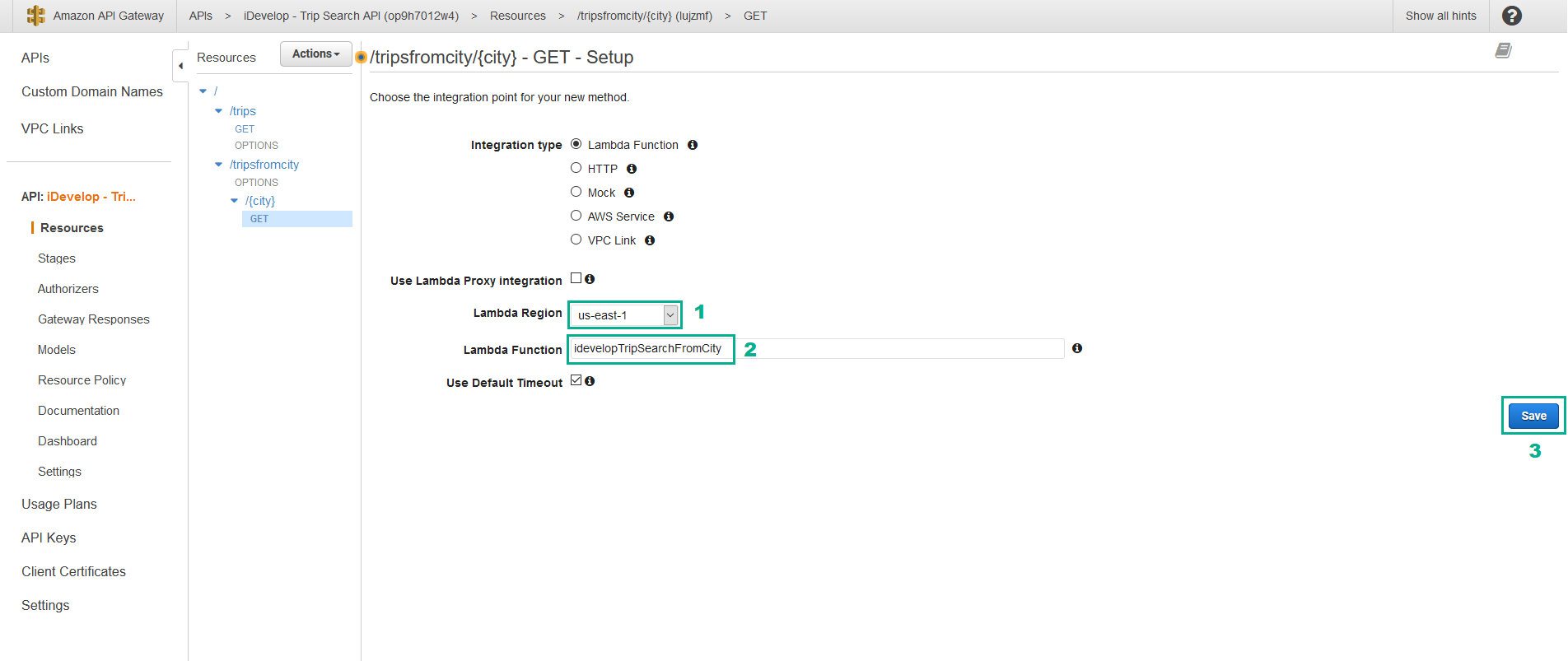
- Click OK
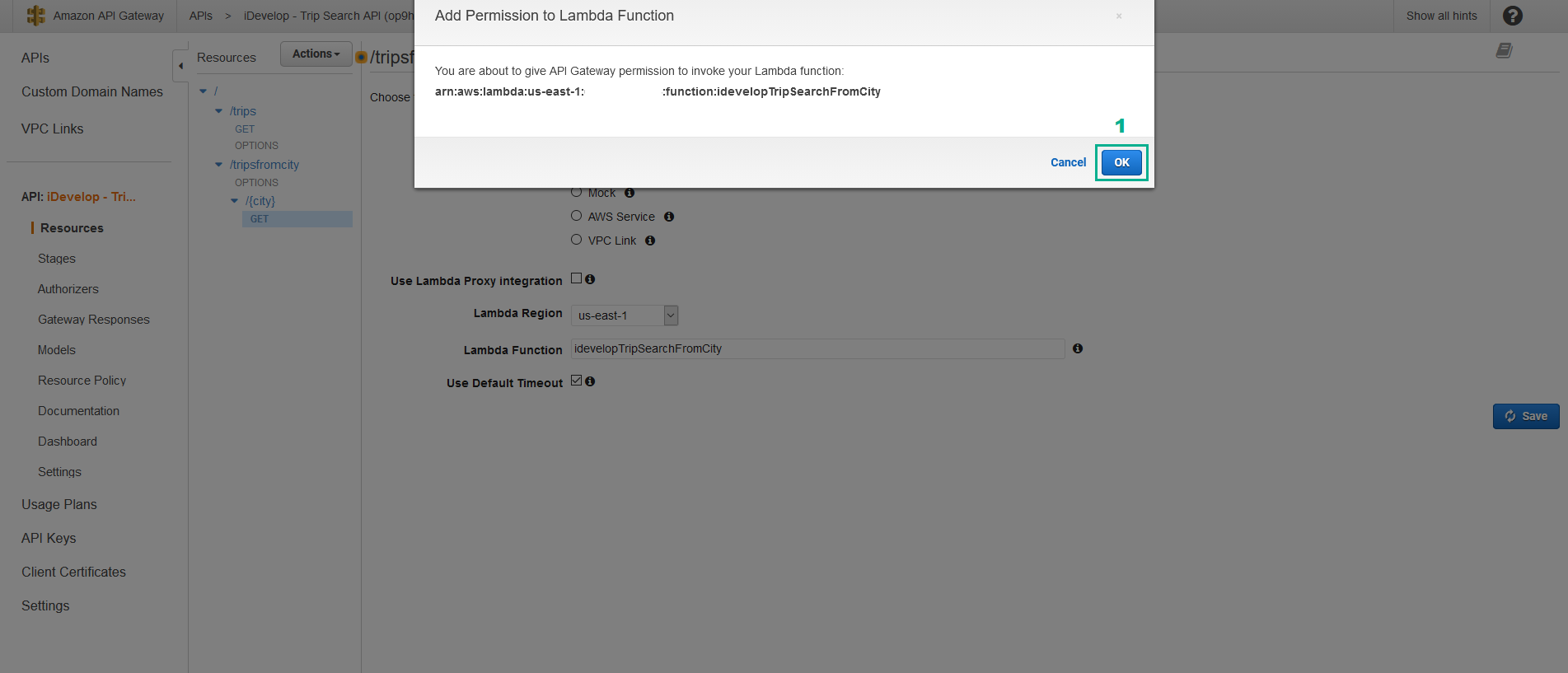
- When the method is created, you will see the Method Execution panel. as before for the /trips resource. We can’t go ahead and test the API call just yet, because we need to transform the request through API Gateway so that the city parameter is passed through to the Lambda function correctly.
The devlounge.lambda.FindTripsFromCityHandler handler expects to see the input data in this JSON format:
{
"payload" :
{
"city": "Melbourne"
}
}
This would cause the Lambda function to search DynamoDB for all trips that originate from Melbourne. We need to add a Body Mapping Template for this method in API Gateway to correctly transform the request into this format.
- Click Integration Request
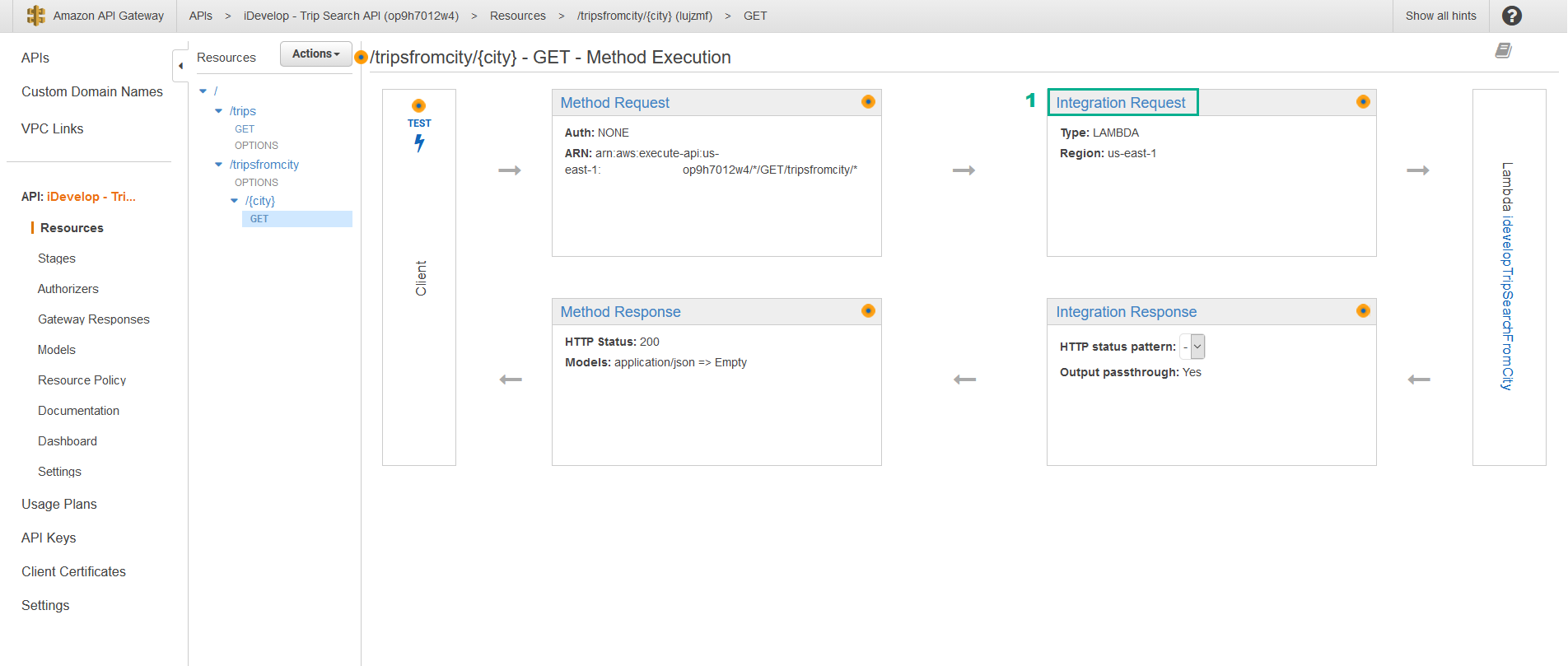
- Click Mapping Templates
- Click When there are no templates defined (recommended)
- Click Add mapping template
- In the Content-Type section , type
application/json - Click the grey tick icon to commit the change.
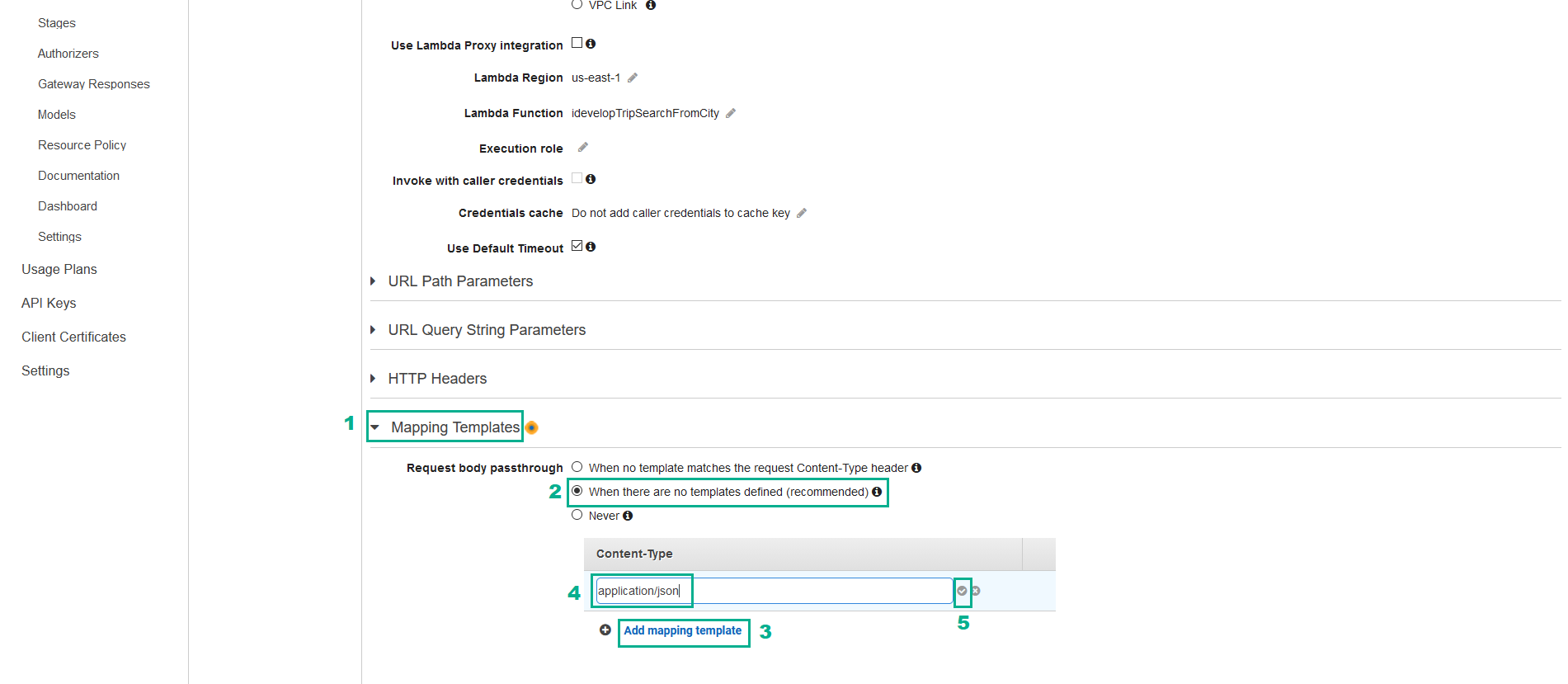
- Scroll further down to show the mapping template entry text field. Paste in the following template:
{
"payload" : {
"city": "$input.params('city')"
}
}
This template will take the parameter {city} from the URL and add it into a JSON payload that is sent to the Lambda function, as a property of the payload object, just as the Lambda function expects.
- Click Save
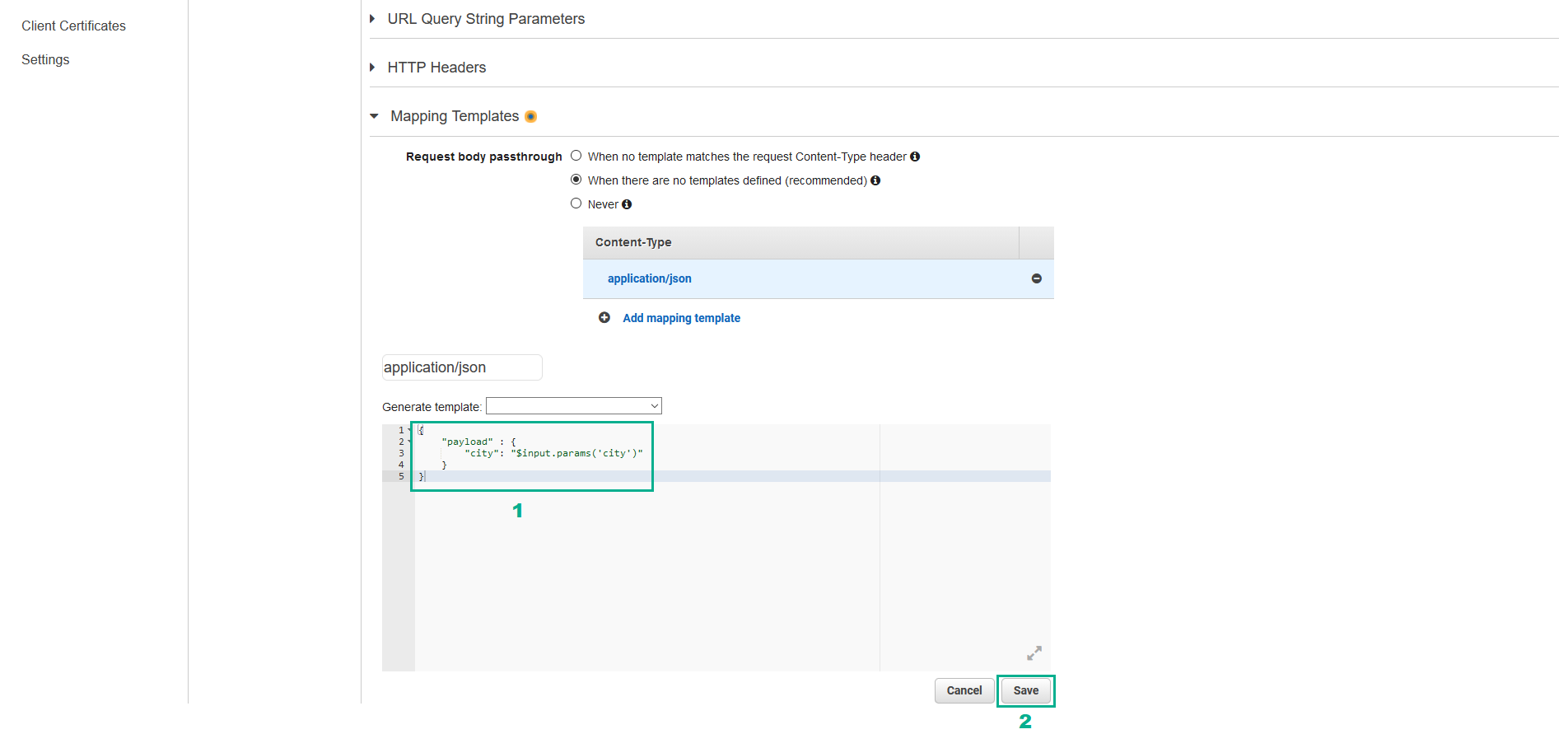
The schema defined here for this Lambda function is completely arbitrary, and in your own application you could use a completely different model. The mapping template gives you the flexibility to transform the inbound data on-the-fly through the API Gateway endpoint.
- Click Method Execution
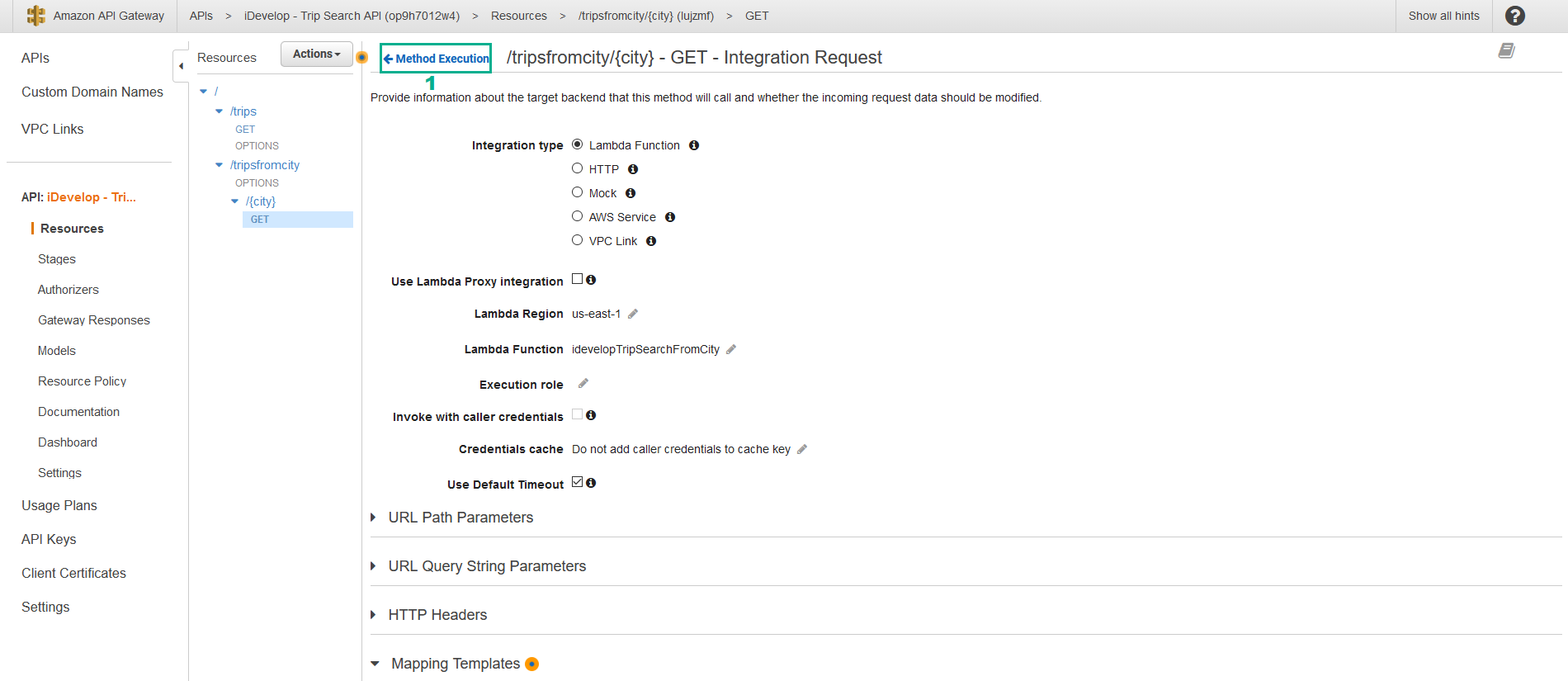
- Click Test
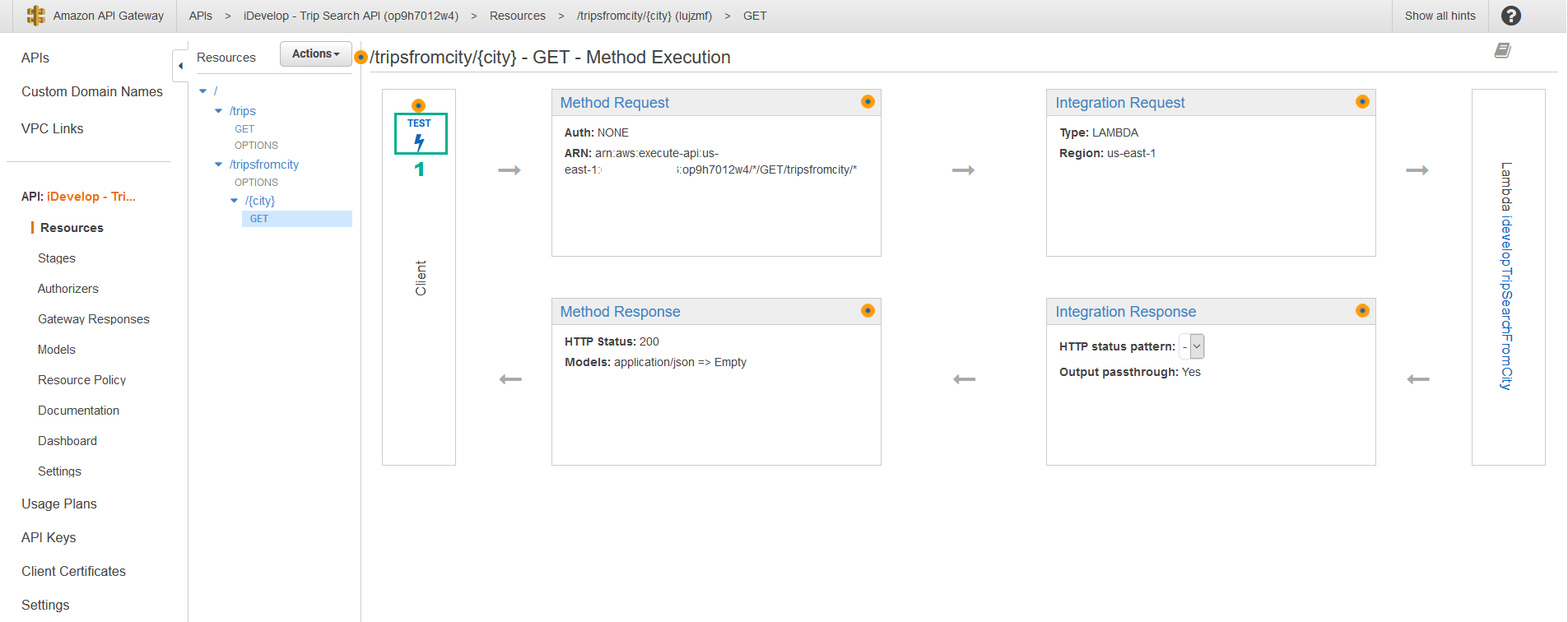
- In the Path section, in {city} field, type
Melbourne
- Click Test
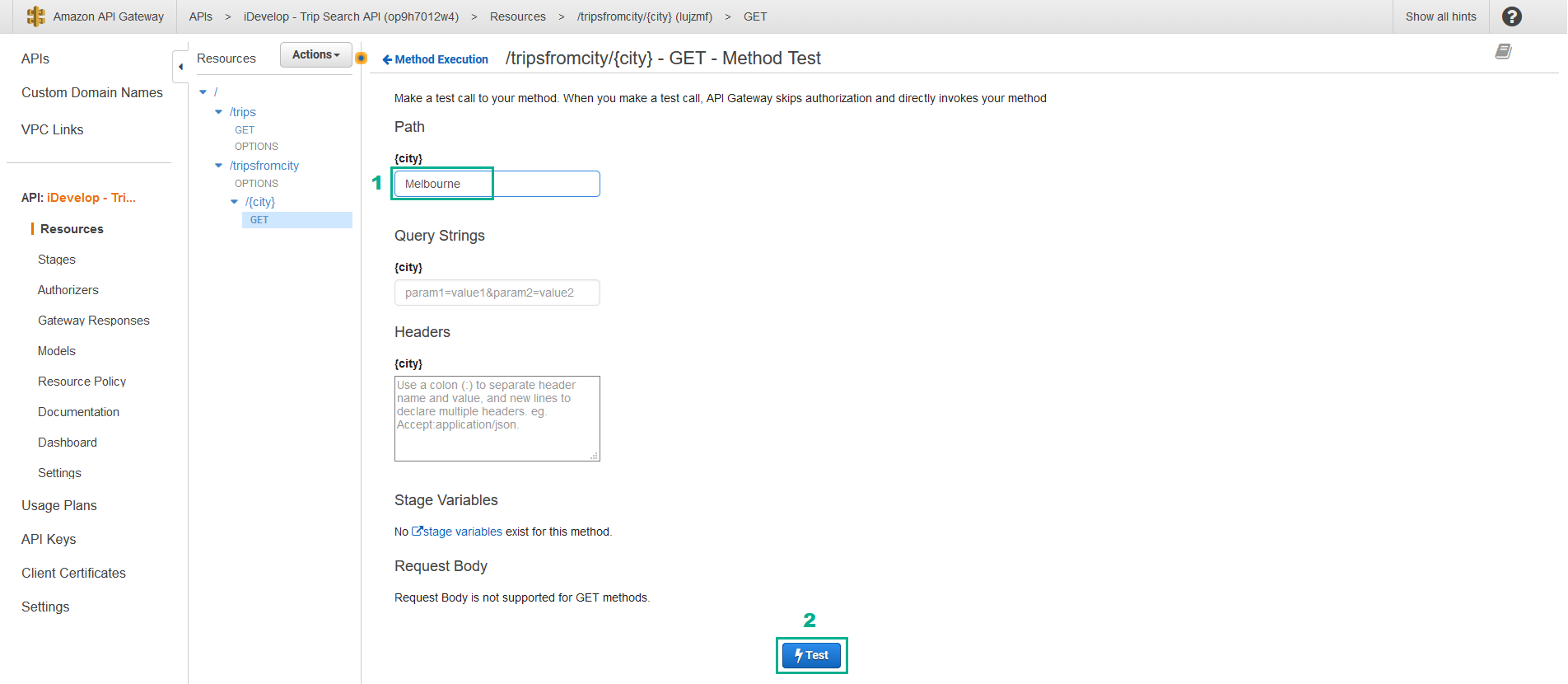
- API Gateway will make the call into the Lambda function, passing the value Melbourne into the Body Mapping Template you have defined, which will insert the search parameter Melbourne into the JSON payload that is sent to the Lambda function. This will cause the function handler to consume the JSON and execute a search in the DynamoDB table, and return the results. You will see a result similar to this:
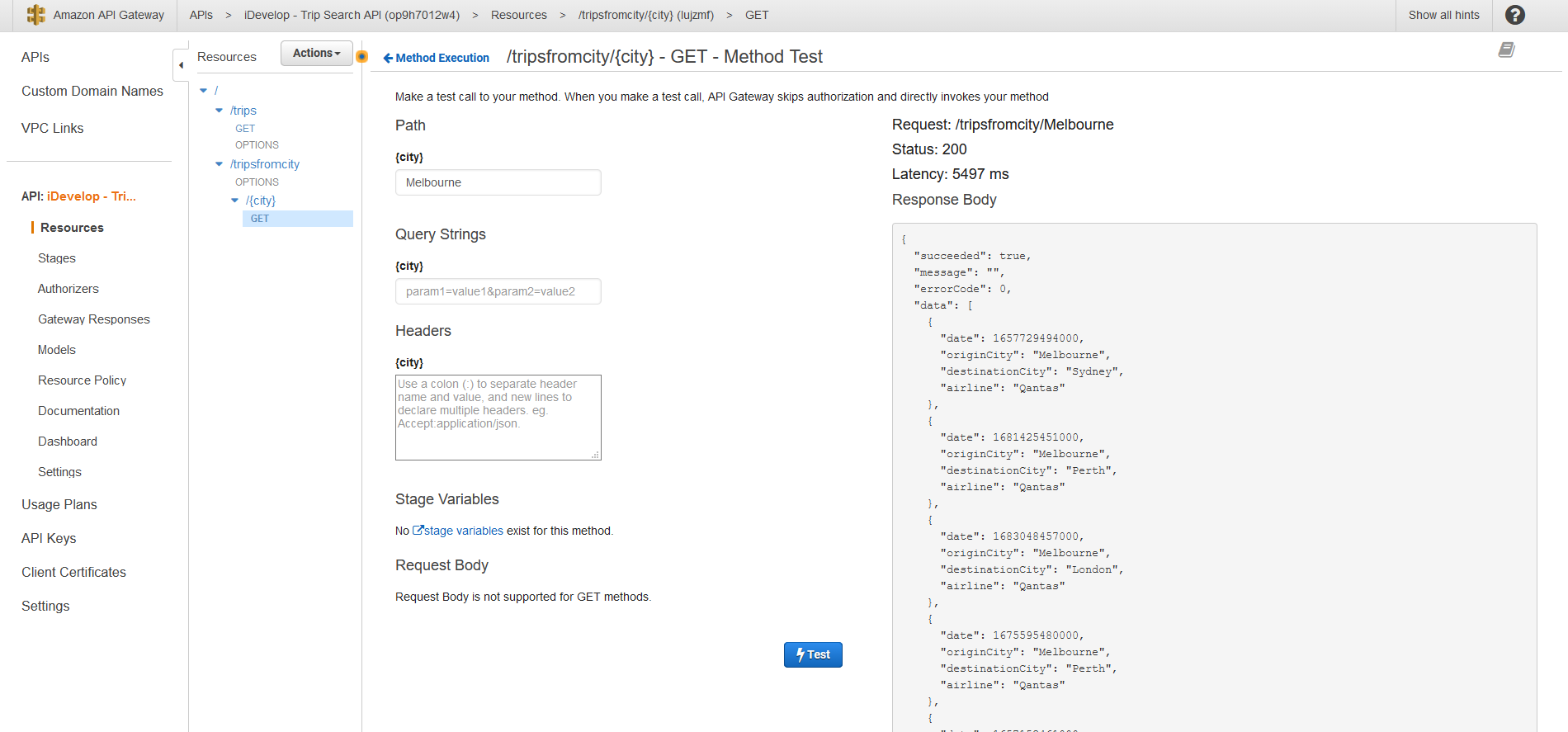
- Select /{city} in /tripsfromcity section
- Click Actions
- Click Enable CORS
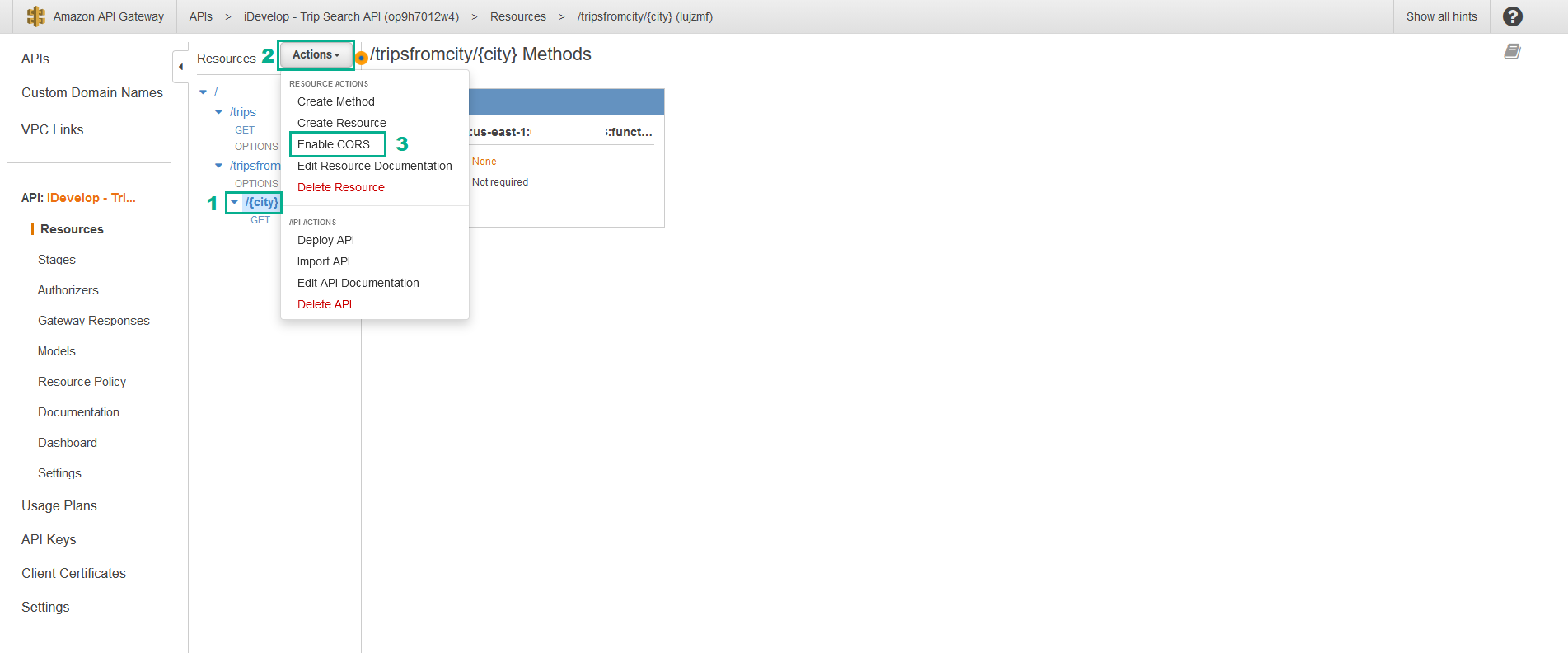
- Click Enable CORS and replace existing CORS headers
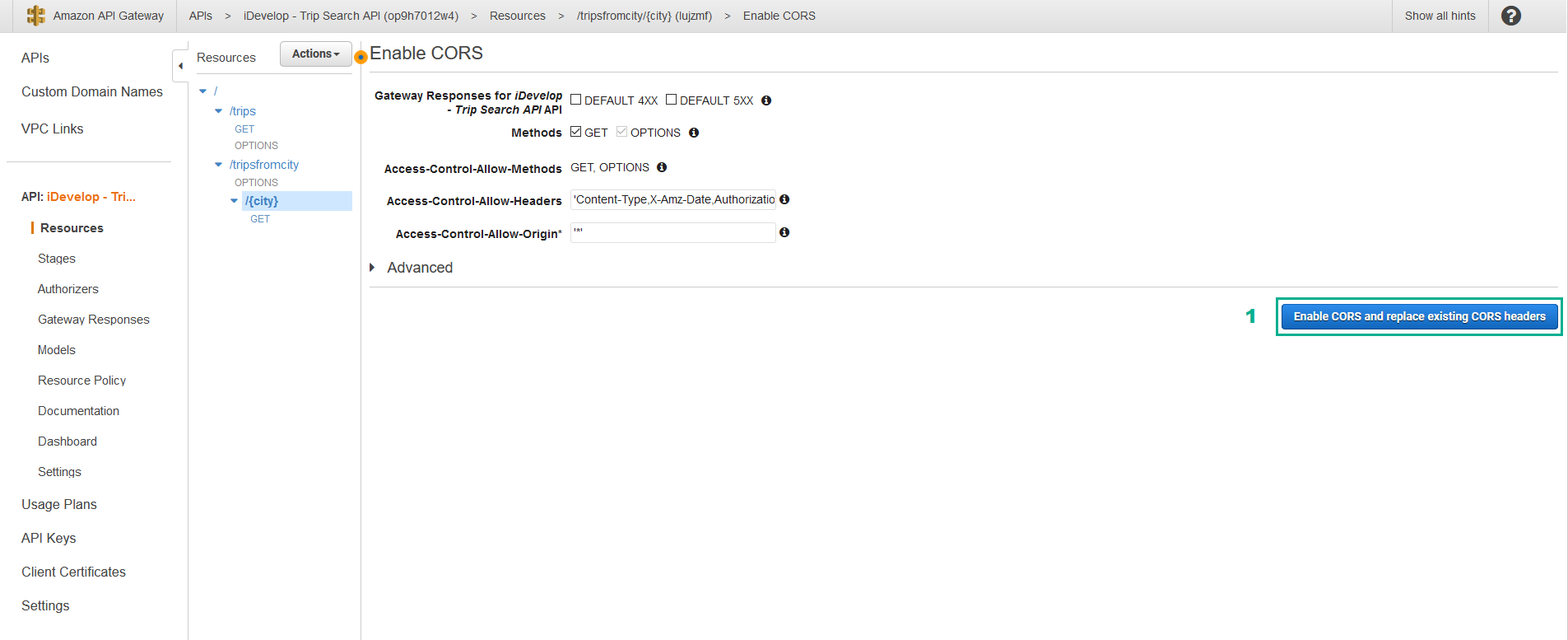
- Click Yes, replace existing values
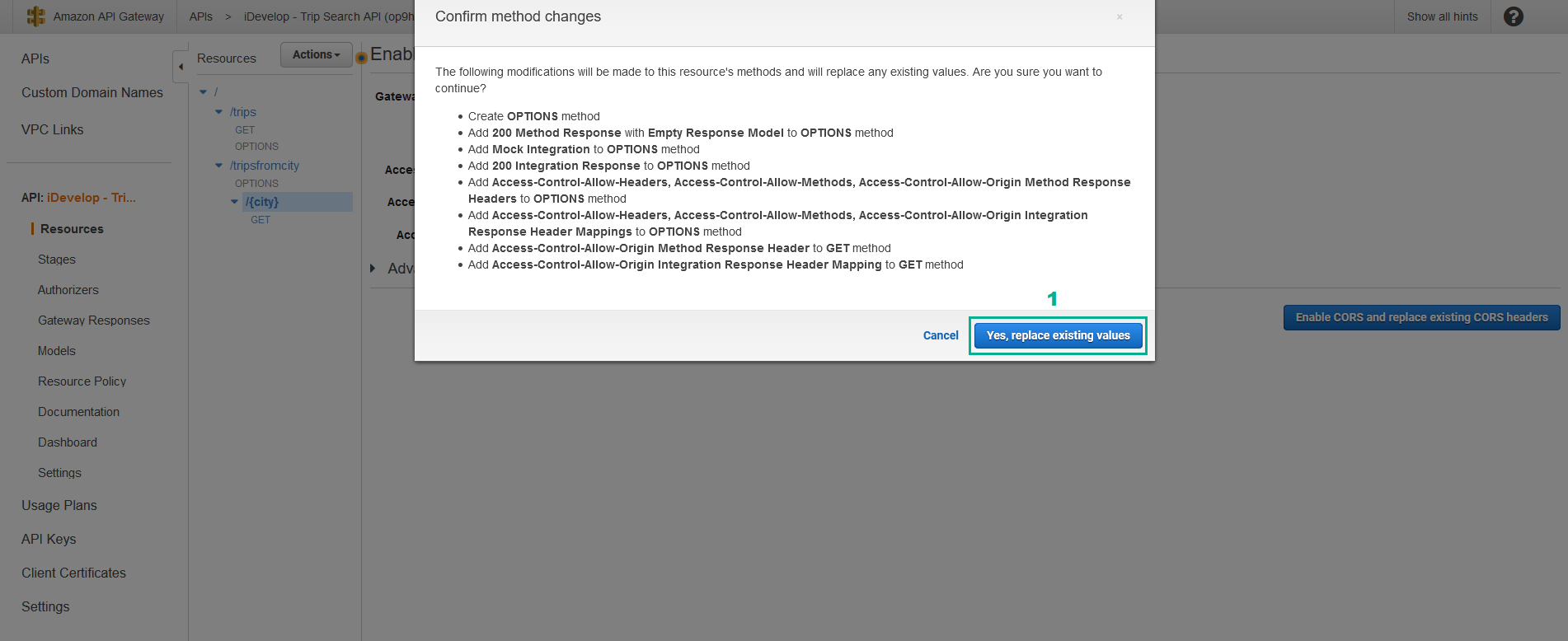
- When each of the listed items have a green tick against them, you can move on to the next section. This will only take a moment.
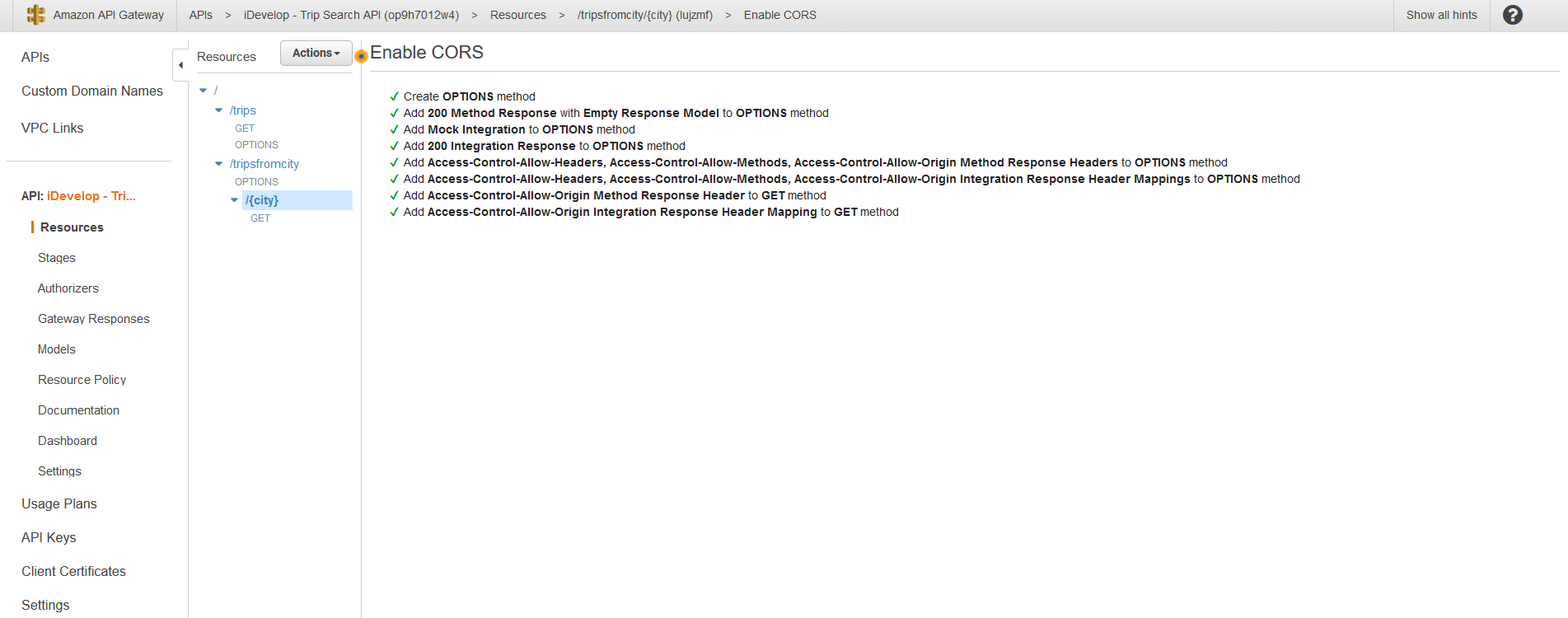
- Click / in Resources section
- Click Actions
- Click Create Resource
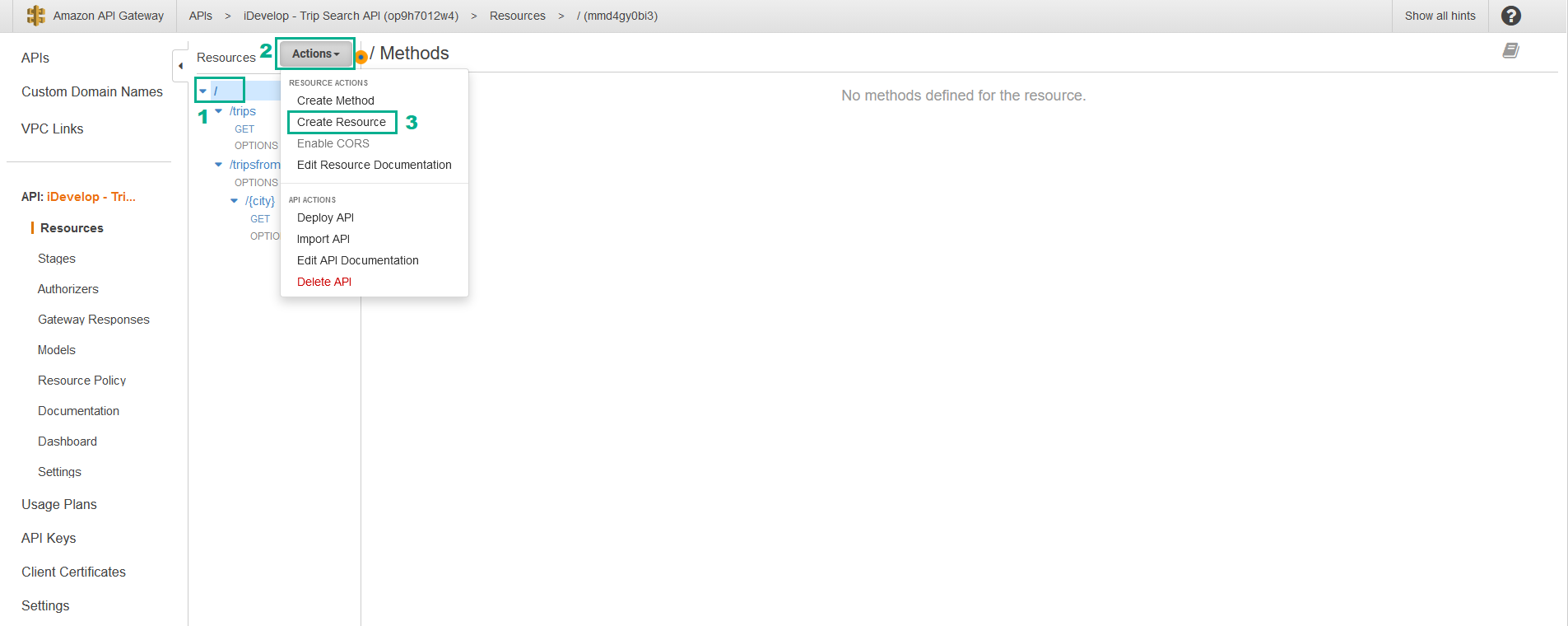
- In the Resource Name section, type
tripstocity
- Select Enable API Gateway CORS
- Click Create Resource
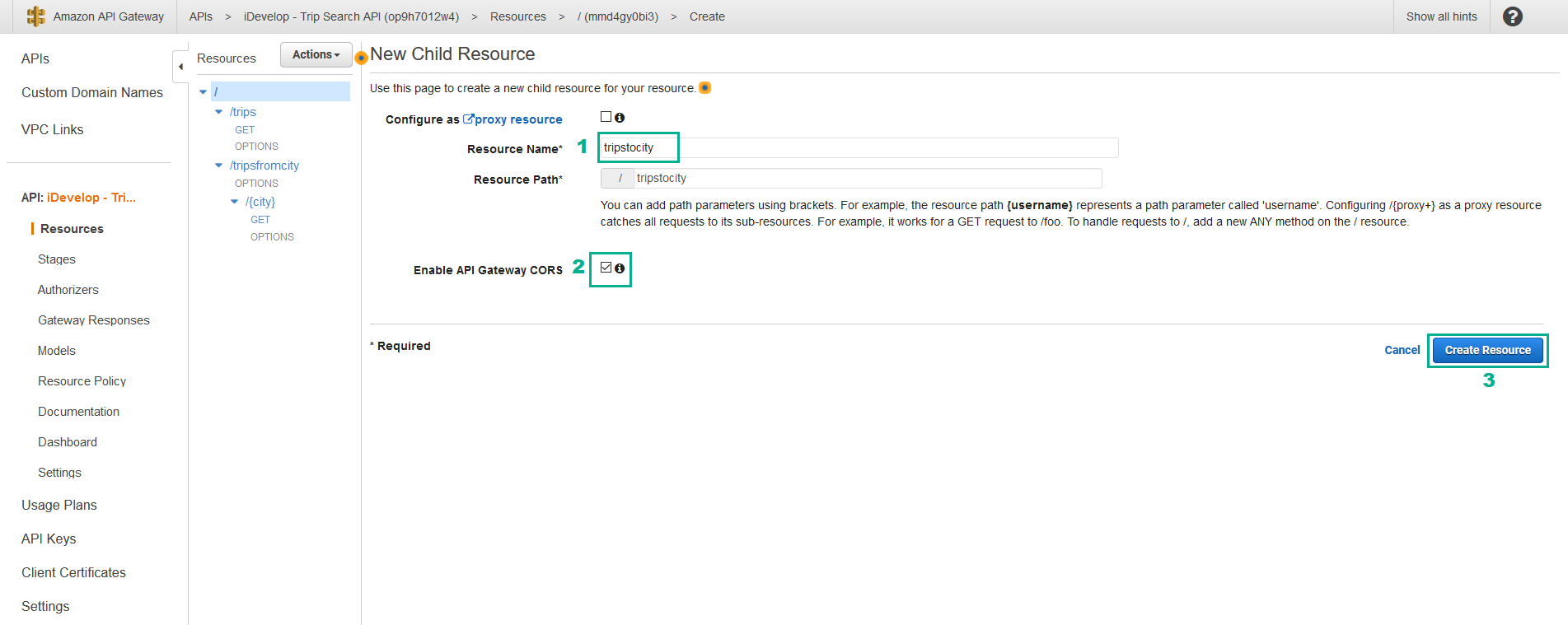
- Our call into the Lambda function requires a city parameter. We will follow the standard pattern for RESTful interfaces, and pass this parameter in as a URL parameter. Click /tripstocity
- Click Actions
- Click Create Resource
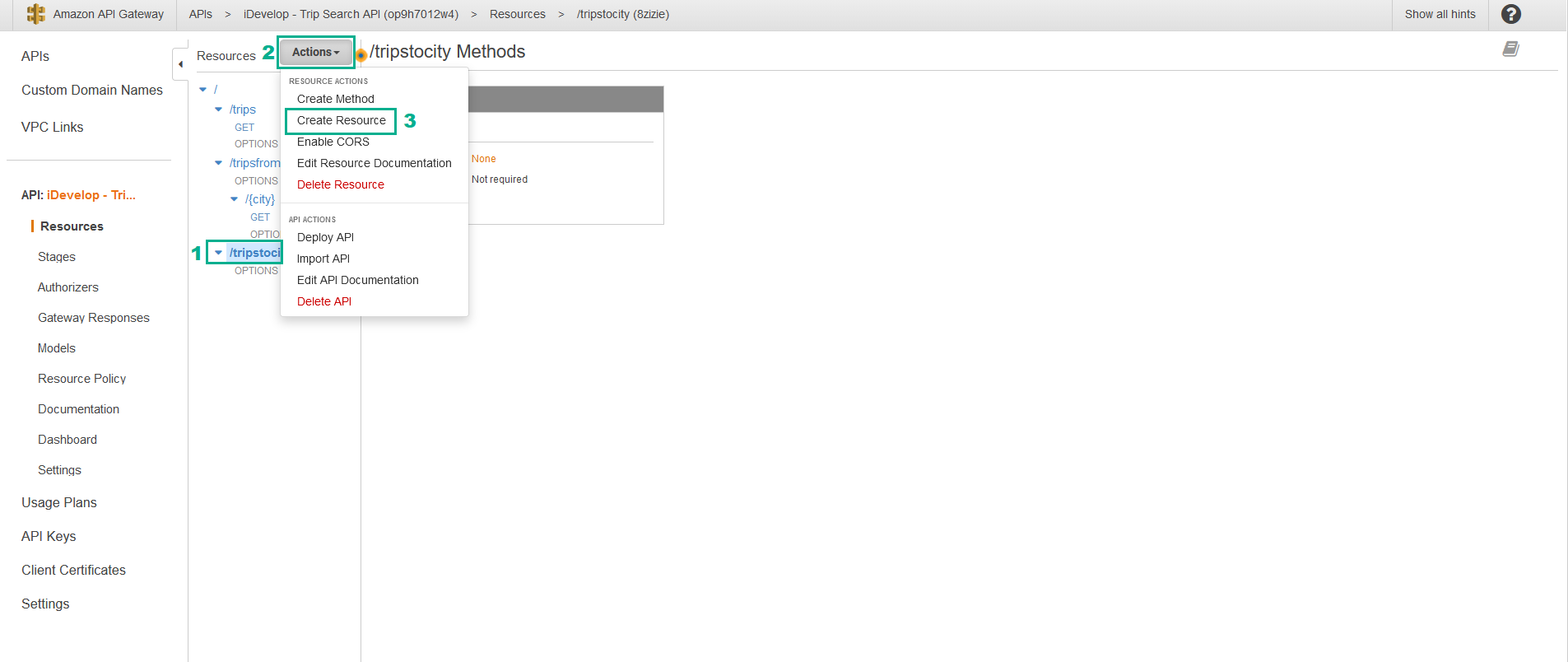
- In the Resource Name section, type
{city}
- In the Resource Path section, delete the default and replace with
{city} - Select Enable API Gateway CORS
- Click Create Resource
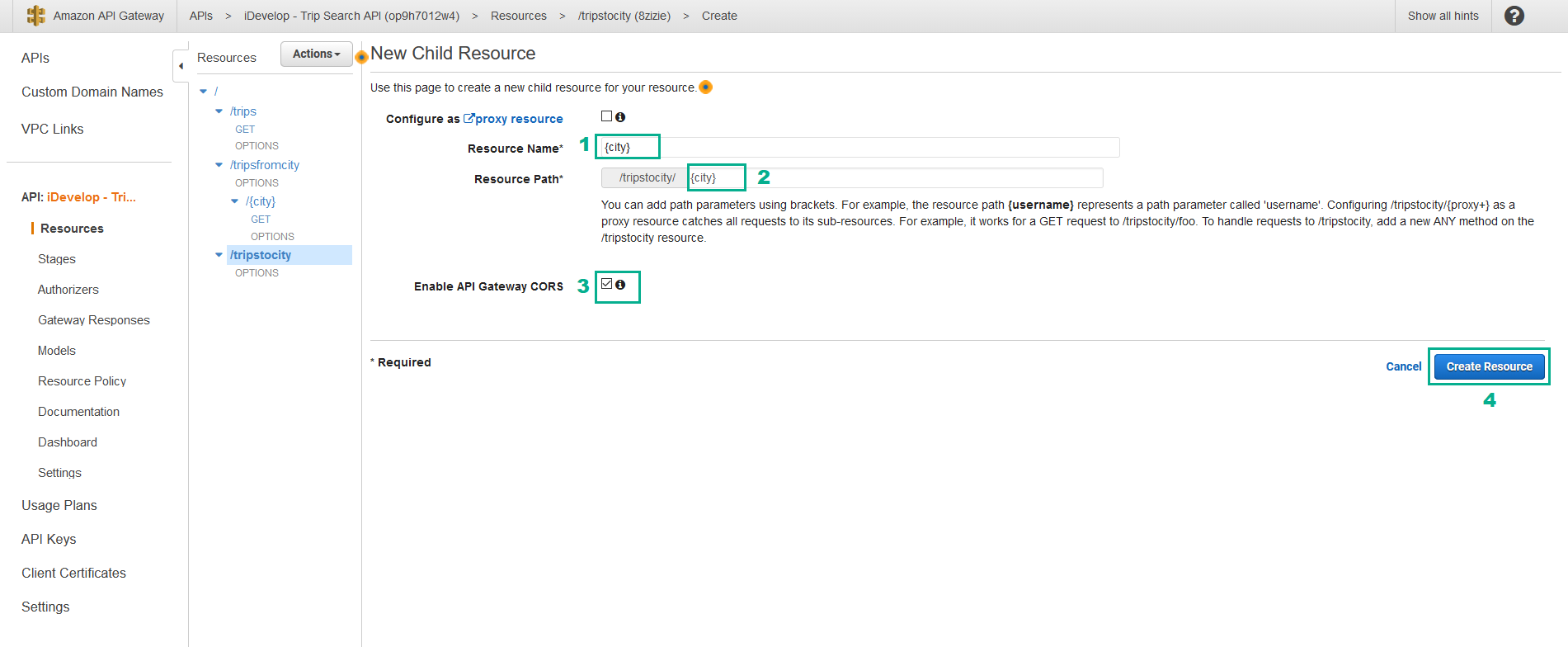
- Click /{city} in the section /tripstocity
- Click Actions
- Click Create Method
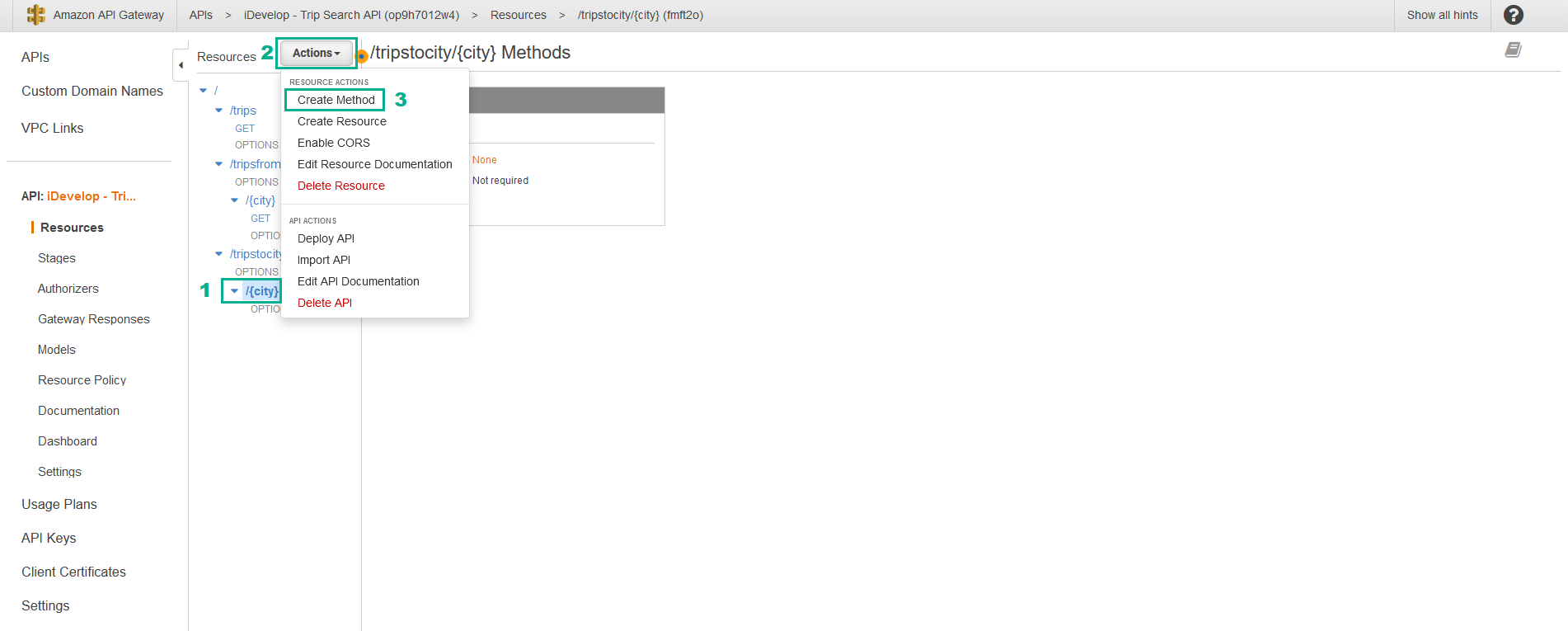
- In the dropdown list that appears, select GET
- Click the grey tick next to the dropdown list to commit the change.
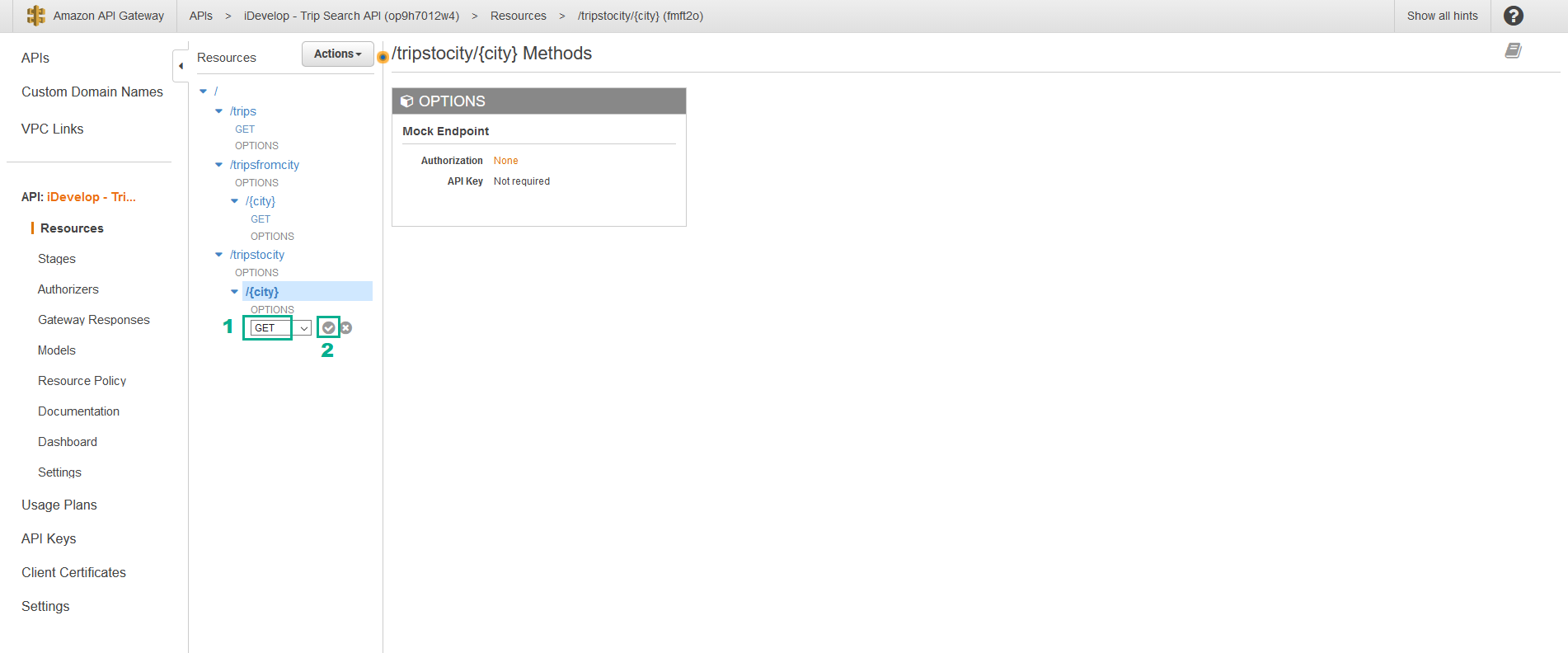
- In the Lambda Region section, select your Region
- In the Lambda Function section, type
idevelopand select idevelopTripSearchToCity - Click Save
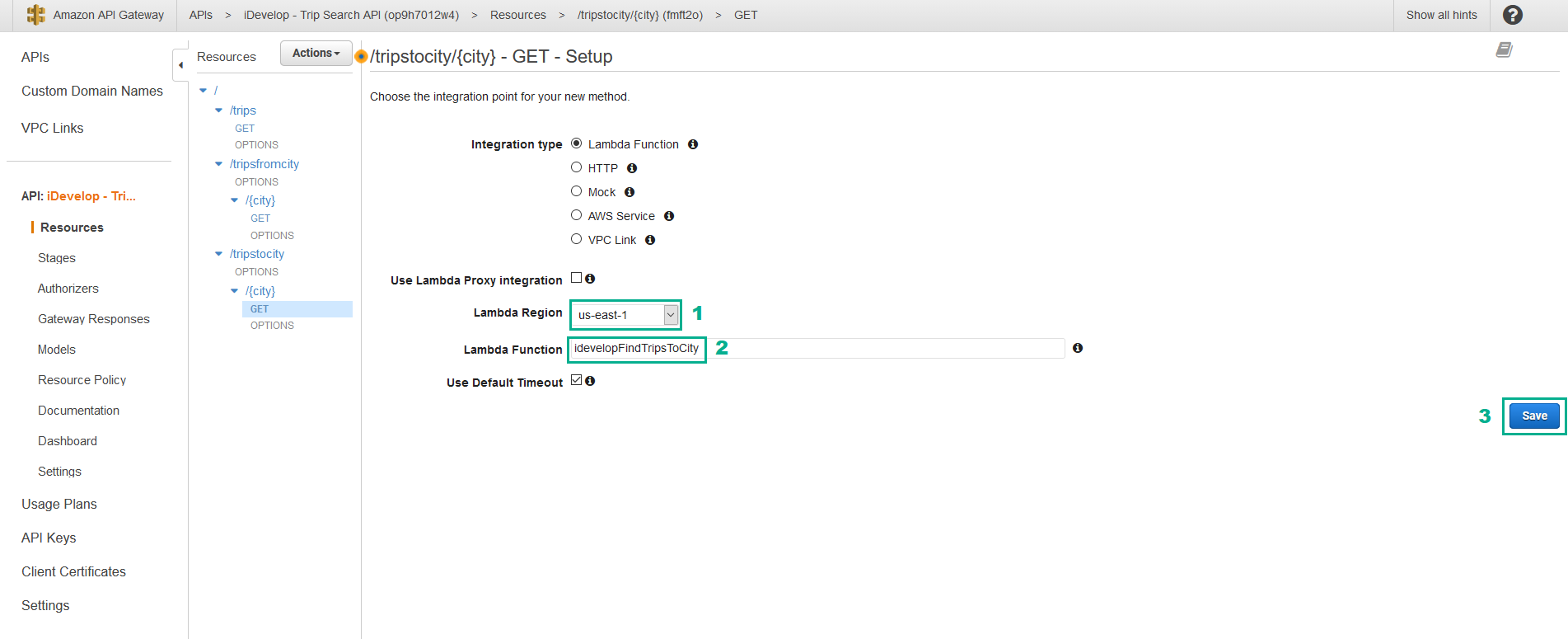
- Click OK
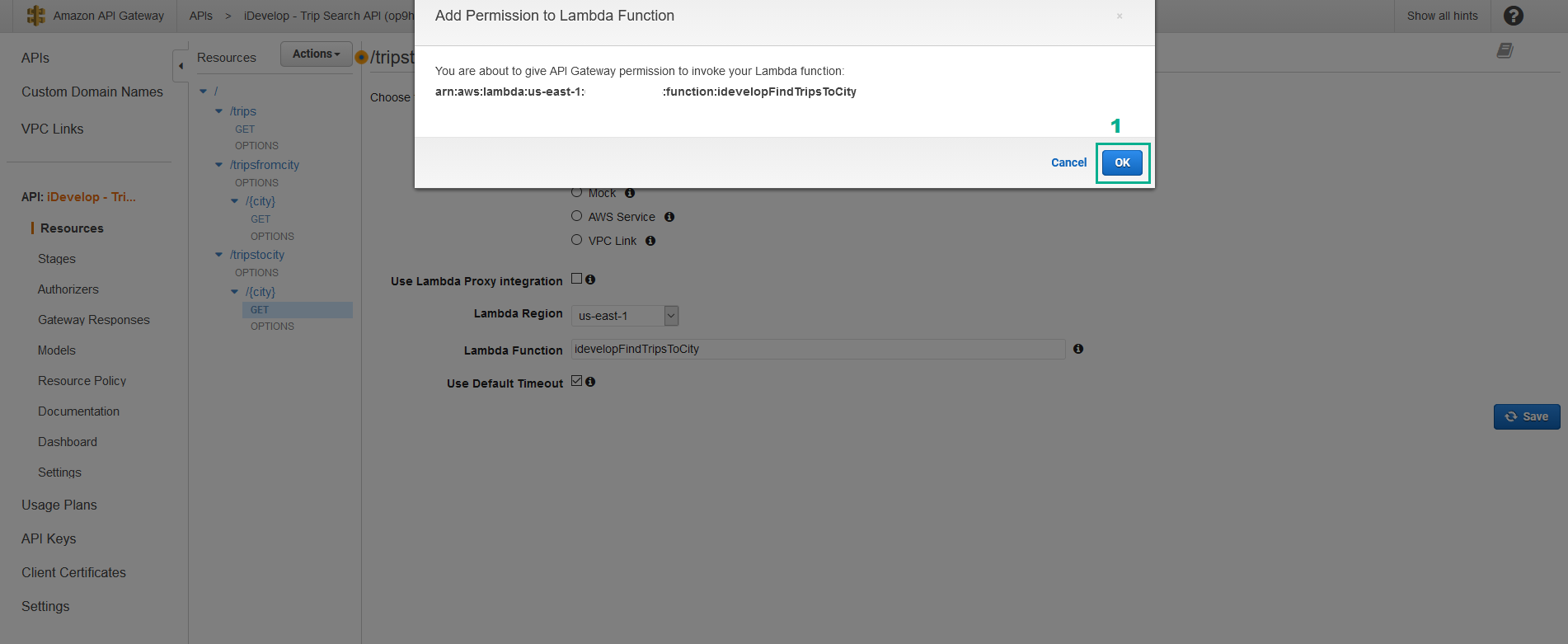
- When the method is created, you will see the Method Execution panel, as before for the /tripsfromcity resource. We again need to transform the request through API Gateway so that the city parameter is passed through to the Lambda function correctly, before we can test this API call.
The devlounge.lambda.FindTripsToCityHandler handler expects to see the input data in this JSON format:
{
"payload" :
{
"city": "Melbourne"
}
}
This would cause the Lambda function to search DynamoDB for all trips that have Melbourne as a destination. We need to add a Mapping Template for this method in API Gateway to correctly transform the request into this format.
- Click Integration Request
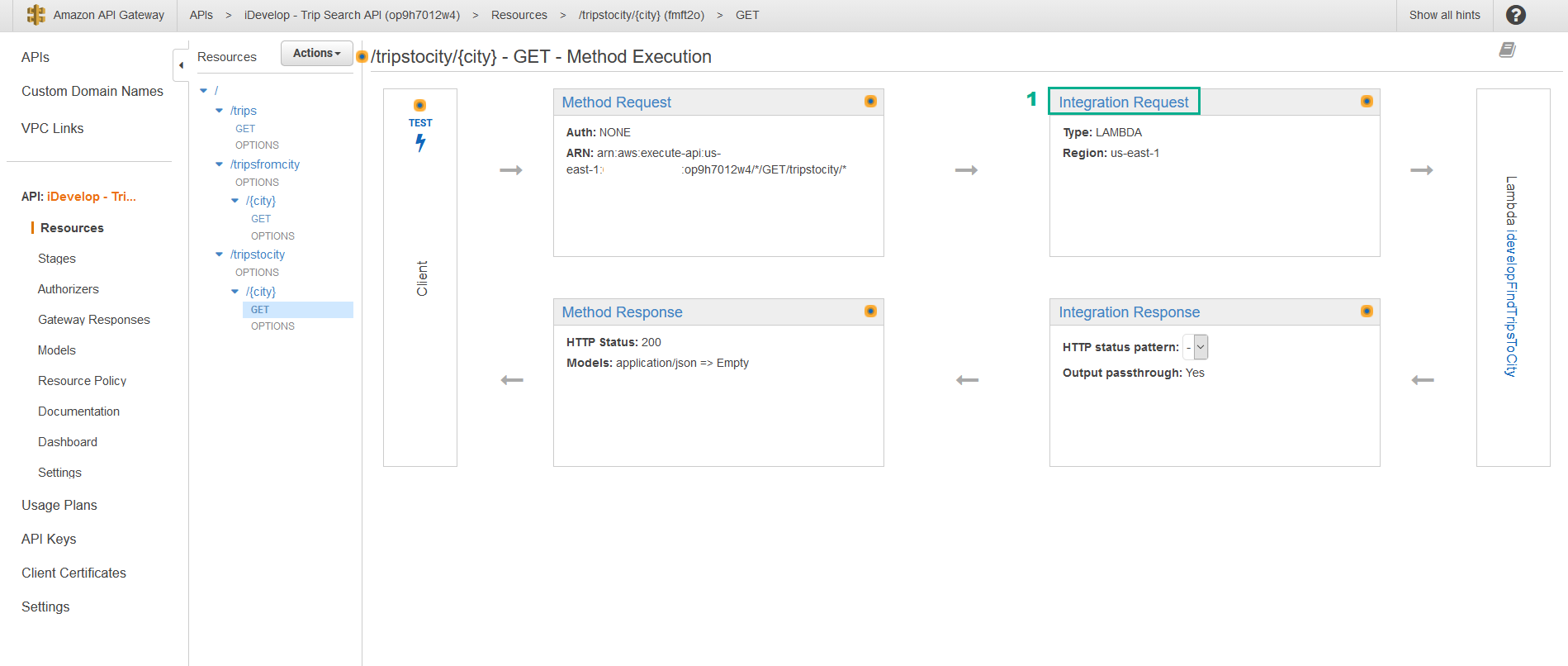
- Click Mapping Templates
- Select When there are no templates defined (recommended)
- Click Add mapping template
- In the Content-Type section, type
application/json - Click the grey tick to commit the change
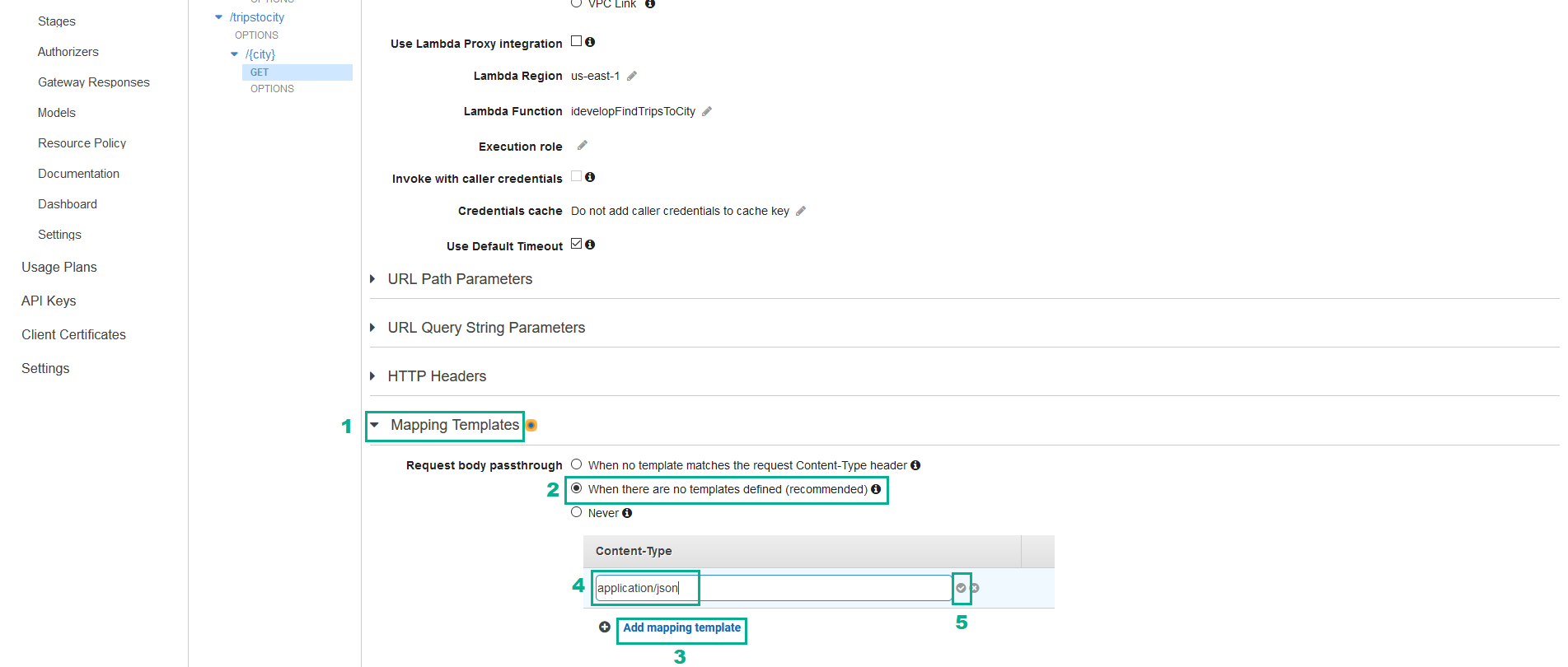
- Scroll further down to show the mapping template entry text field. Paste in the following template:
{
"payload" : {
"city": "$input.params('city')"
}
}
- Click Save
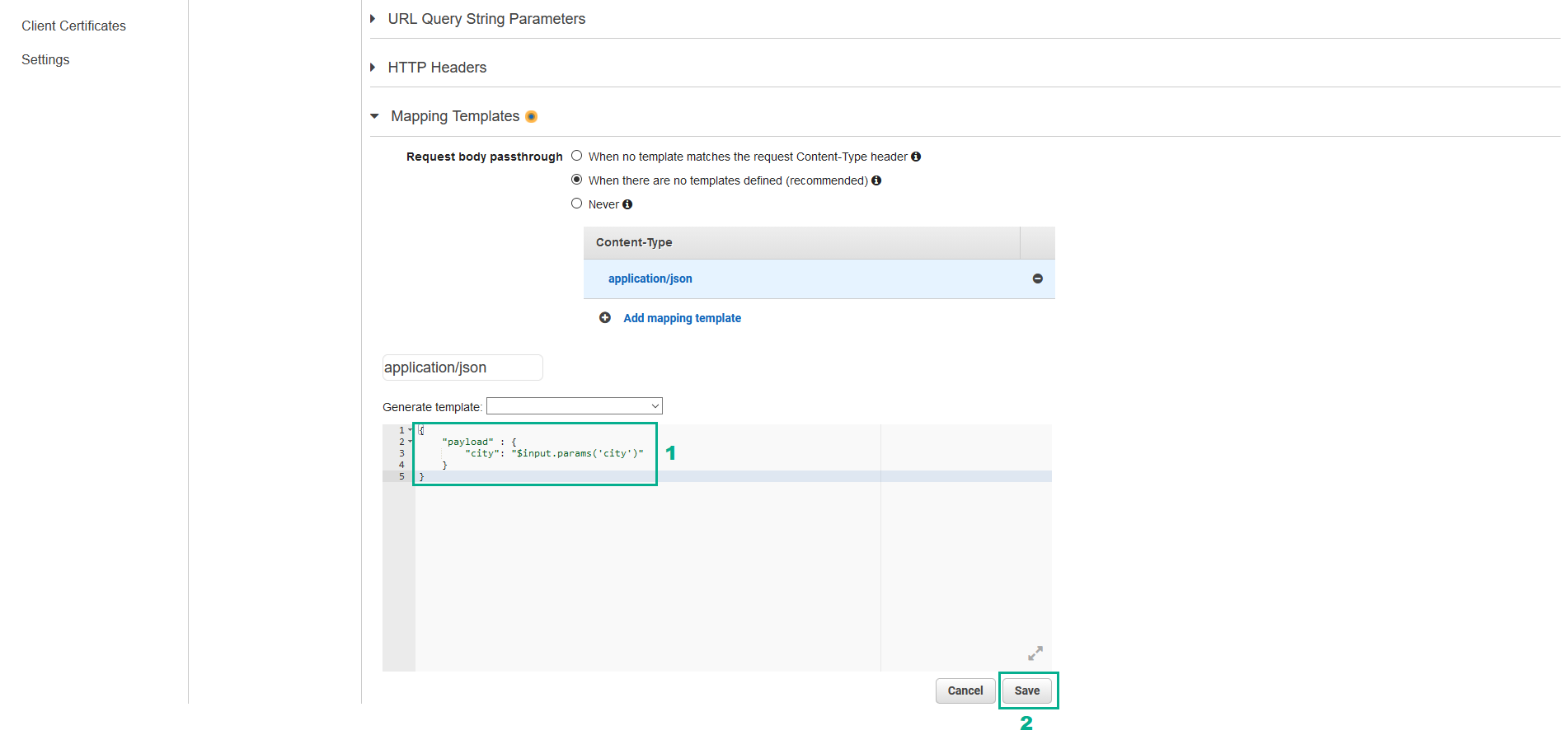
- Click Method Execution
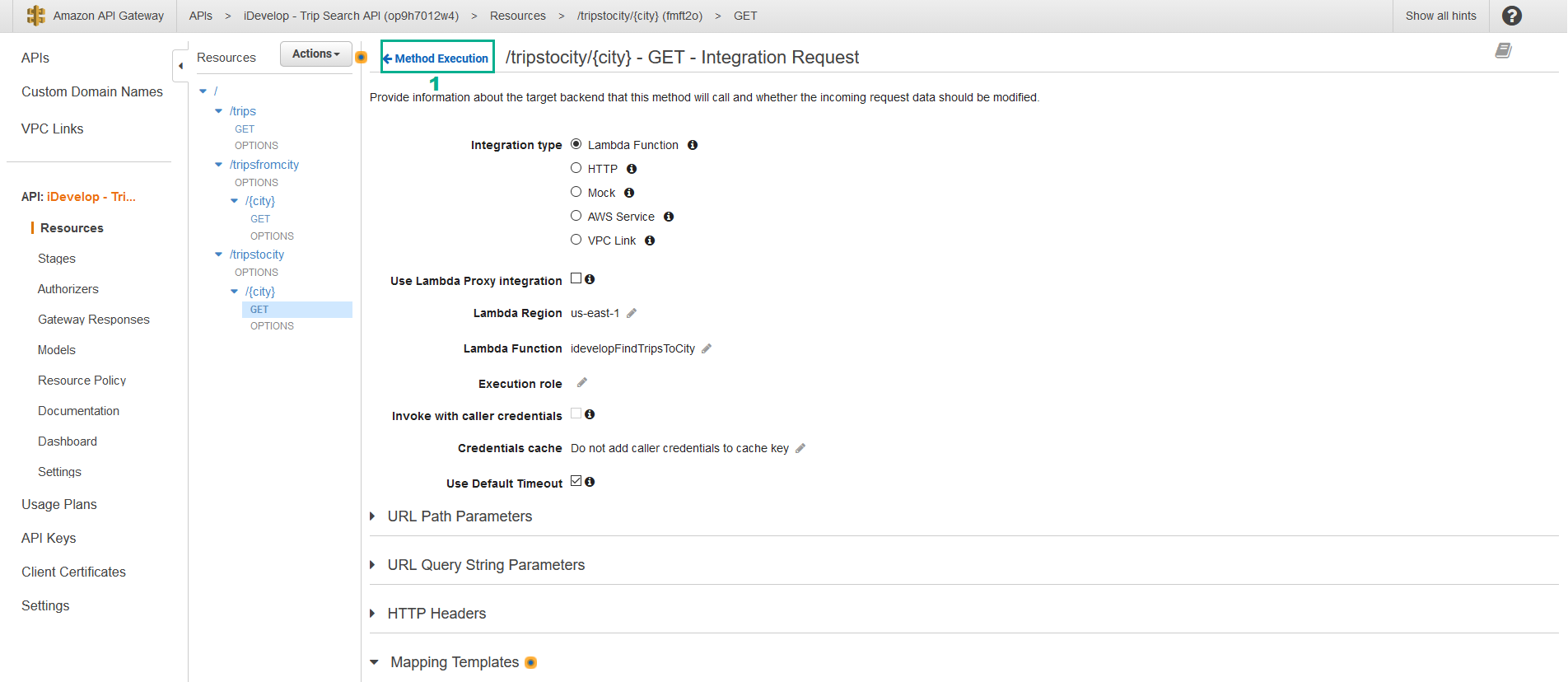
- Click Test
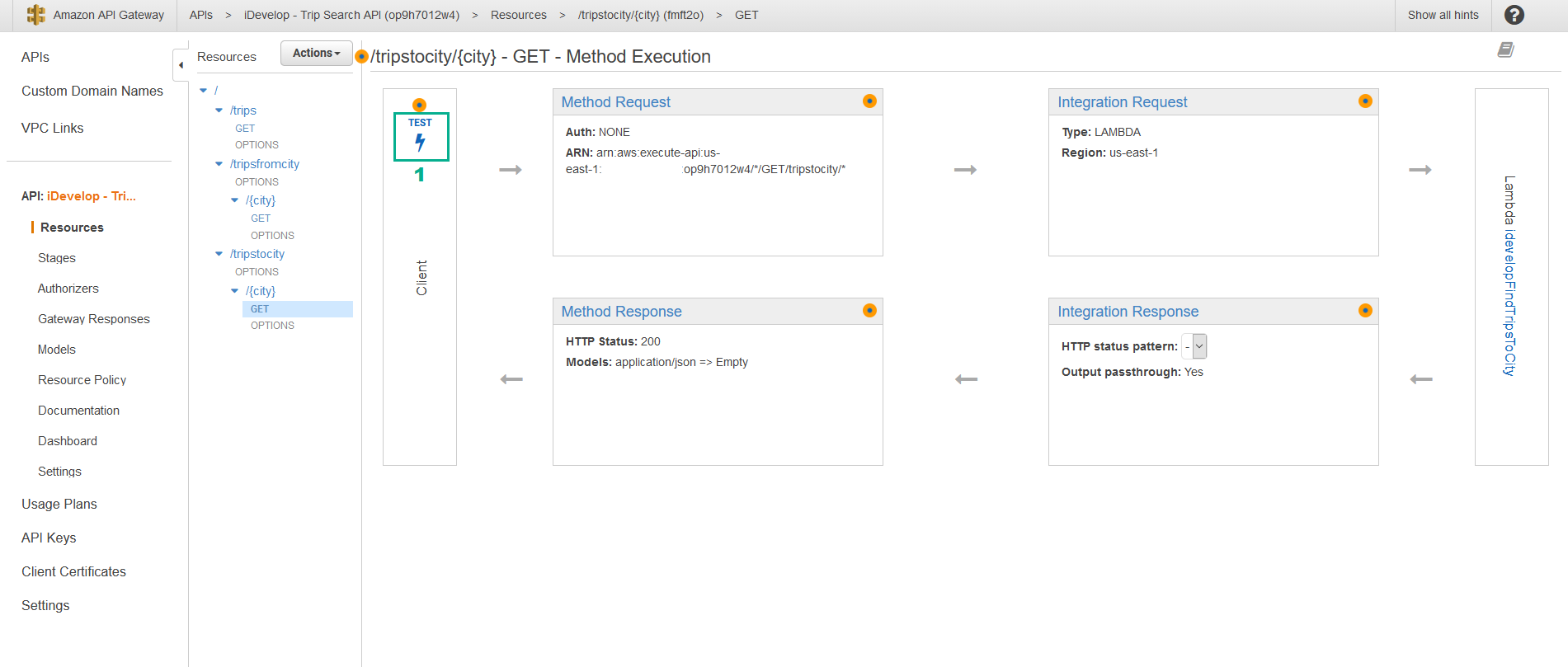
- In the Path section, in the {city} field, type
Melbourne
- Click Test
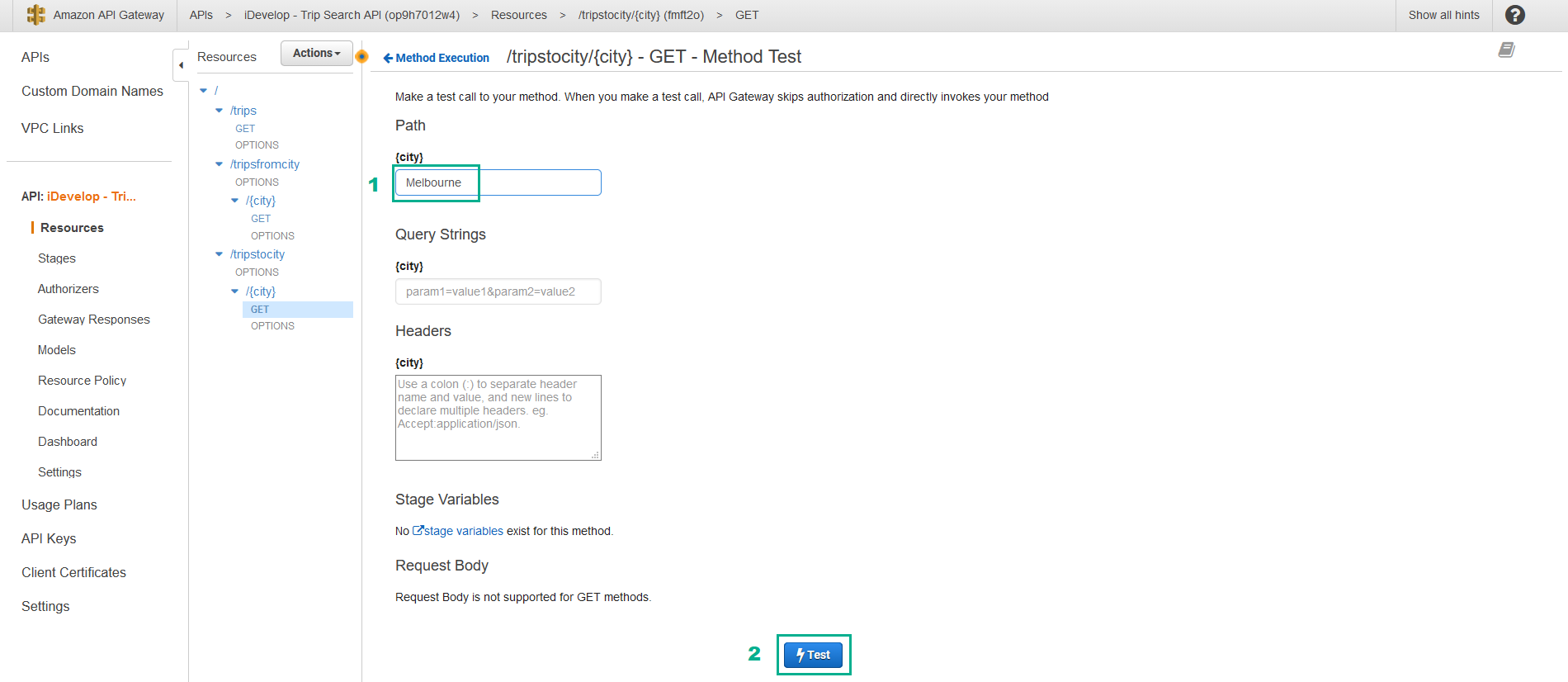
- API Gateway will make the call into the Lambda function, passing the value Melbourne into the Body Mapping Template you have defined, which will insert the search parameter Melbourne into the JSON payload that is sent to the Lambda function. This will cause the function handler to consume the JSON and execute a search in the DynamoDB table, and return the results. You will see a result similar to this:
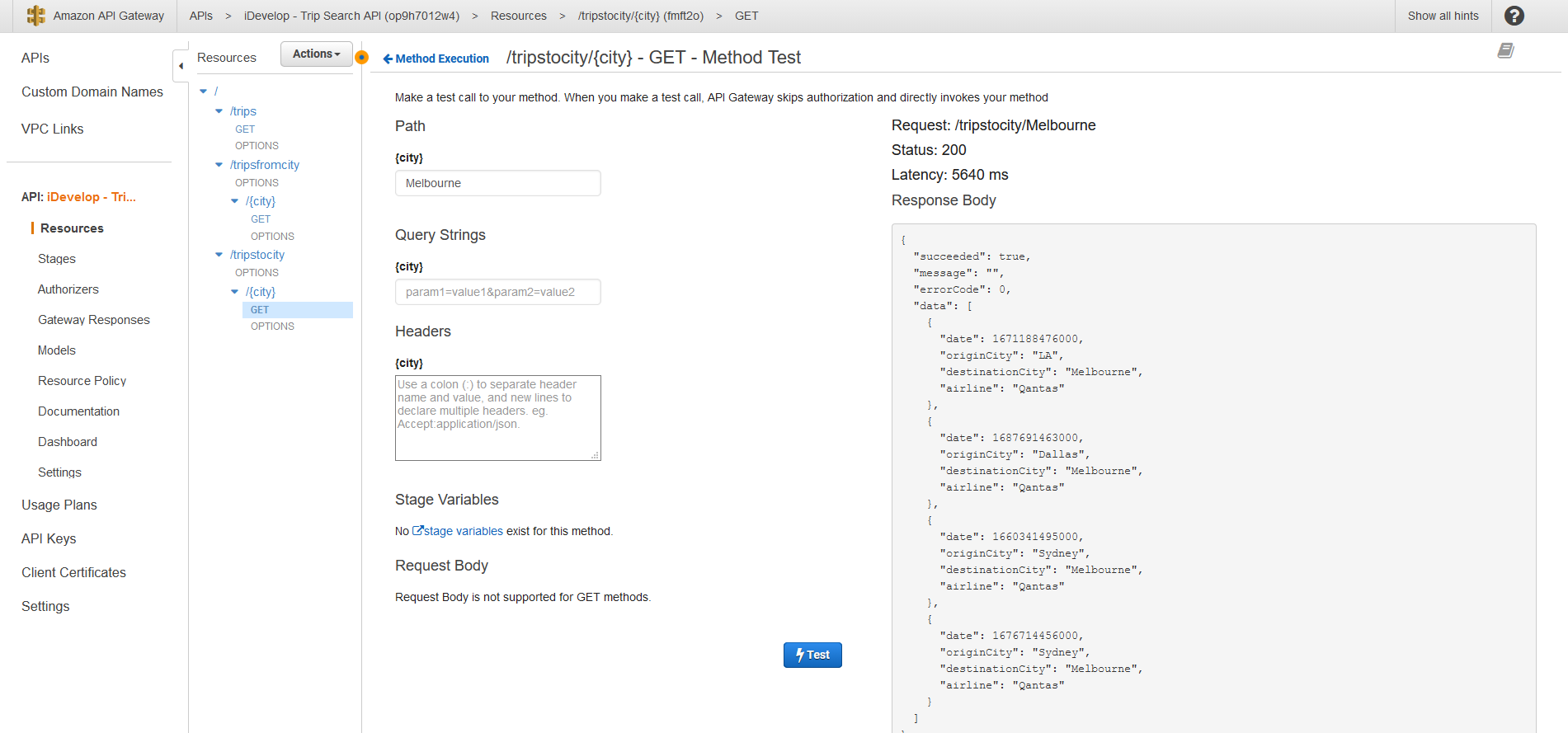
- Click /{city} in /tripstocity section
- Click Actions
- Click Enable CORS
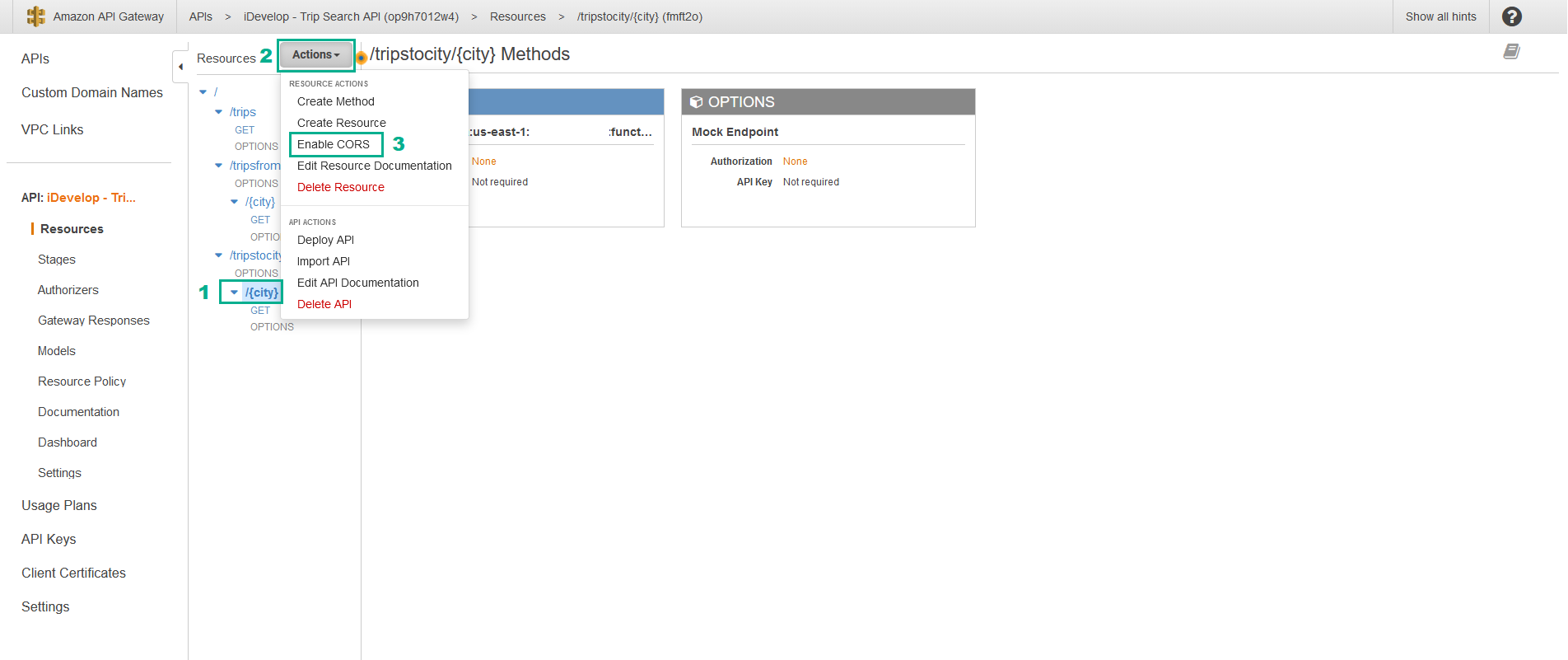
- Click Enable CORS and replace existing CORS headers
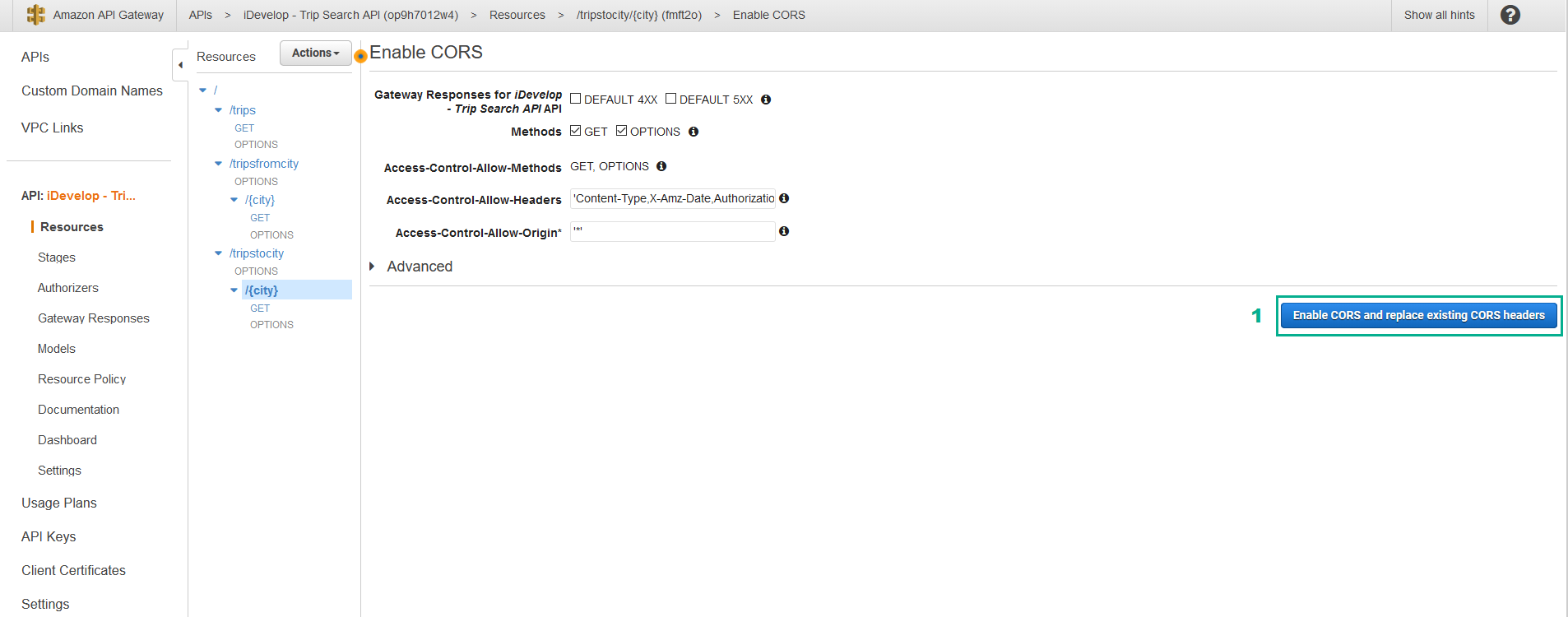
- Click Yes, replace existing values
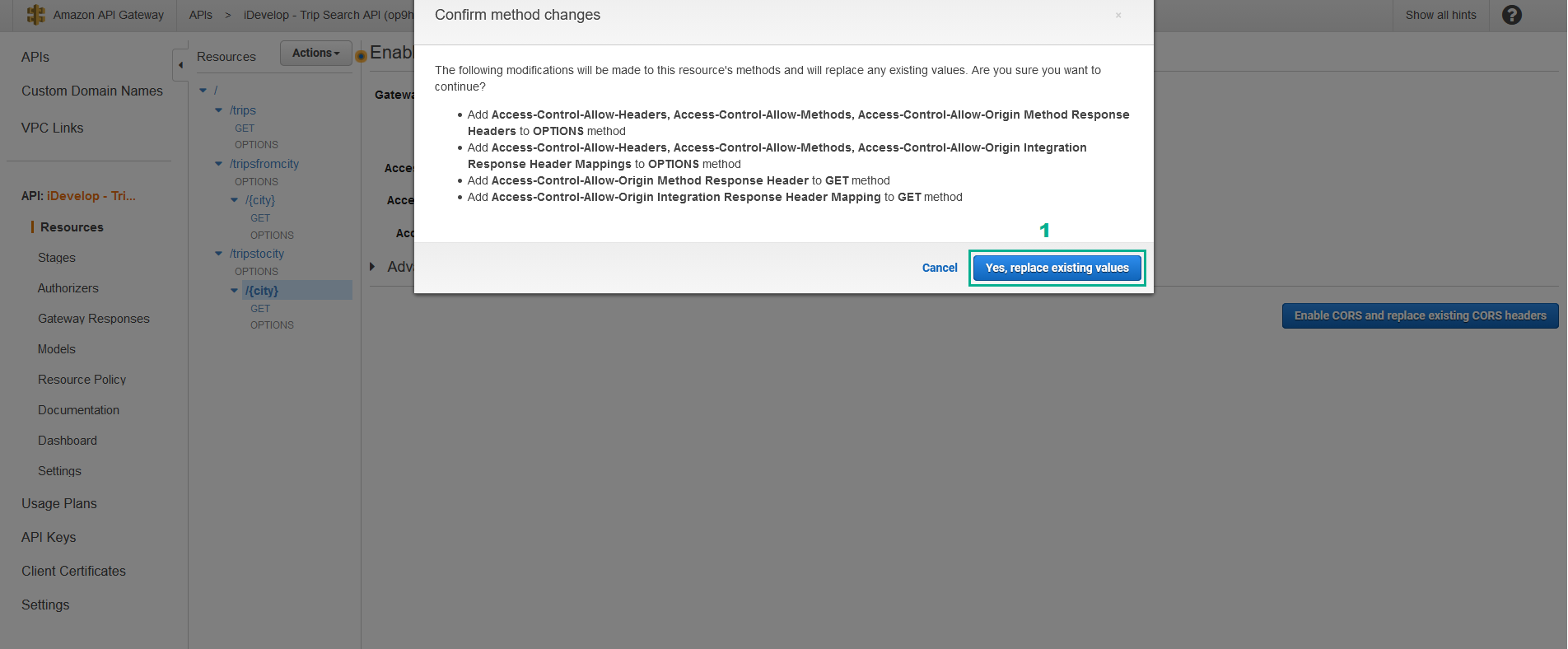
- When each of the listed items have a green tick against them, you can move on to the next section. This will only take a moment.
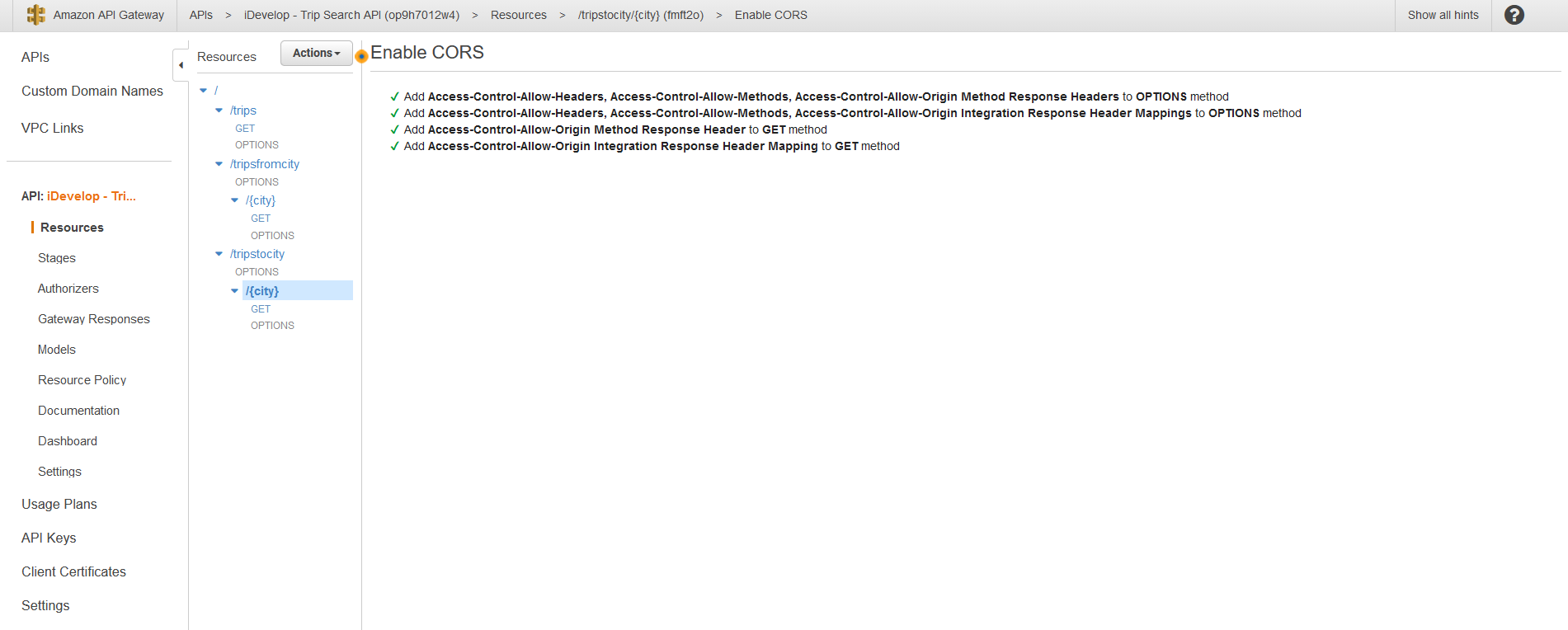
- If you have completed the steps above as described, you will have a resources tree that looks like this:
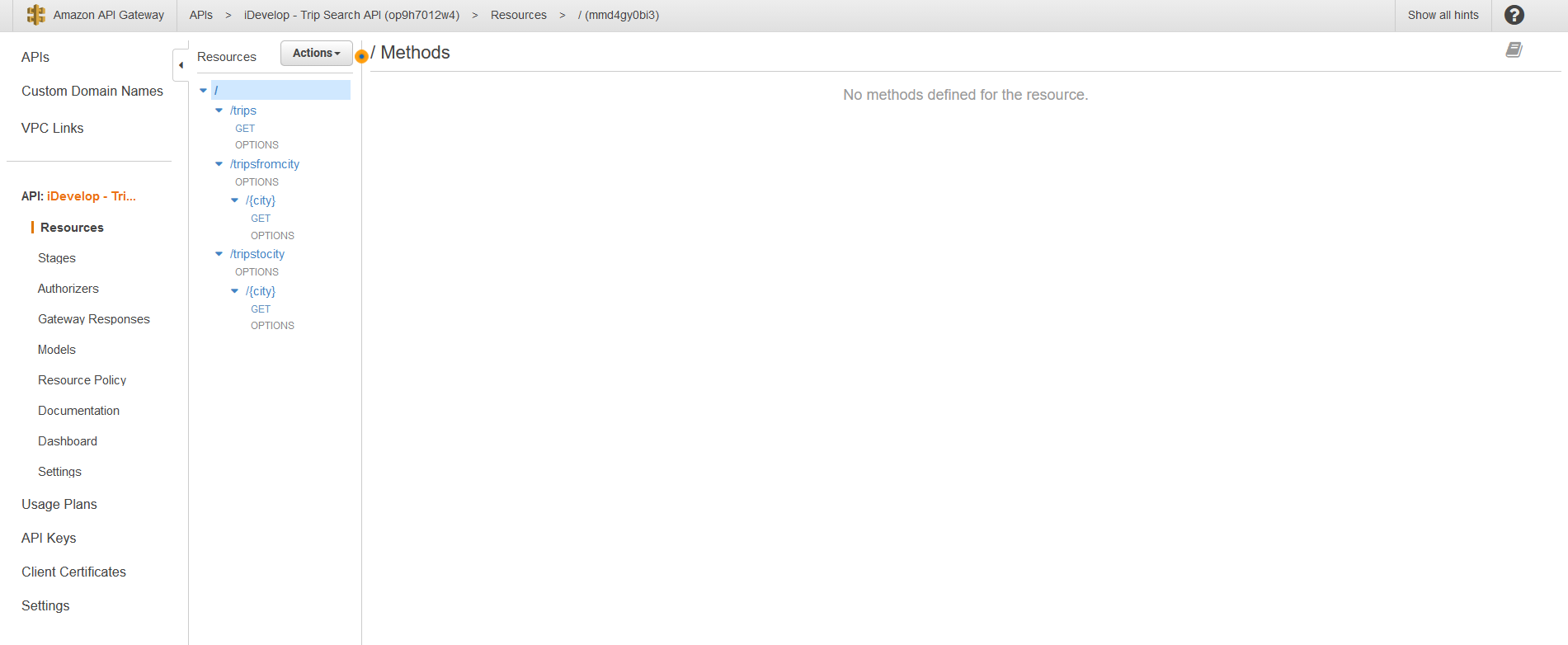
Deploy the API and test
- Now that you have confirmed that the microservices are functioning correctly, you are ready to deploy the API and test it from the publicly available endpoint. In the Resources section, click /
- Click Actions
- Click Deploy API
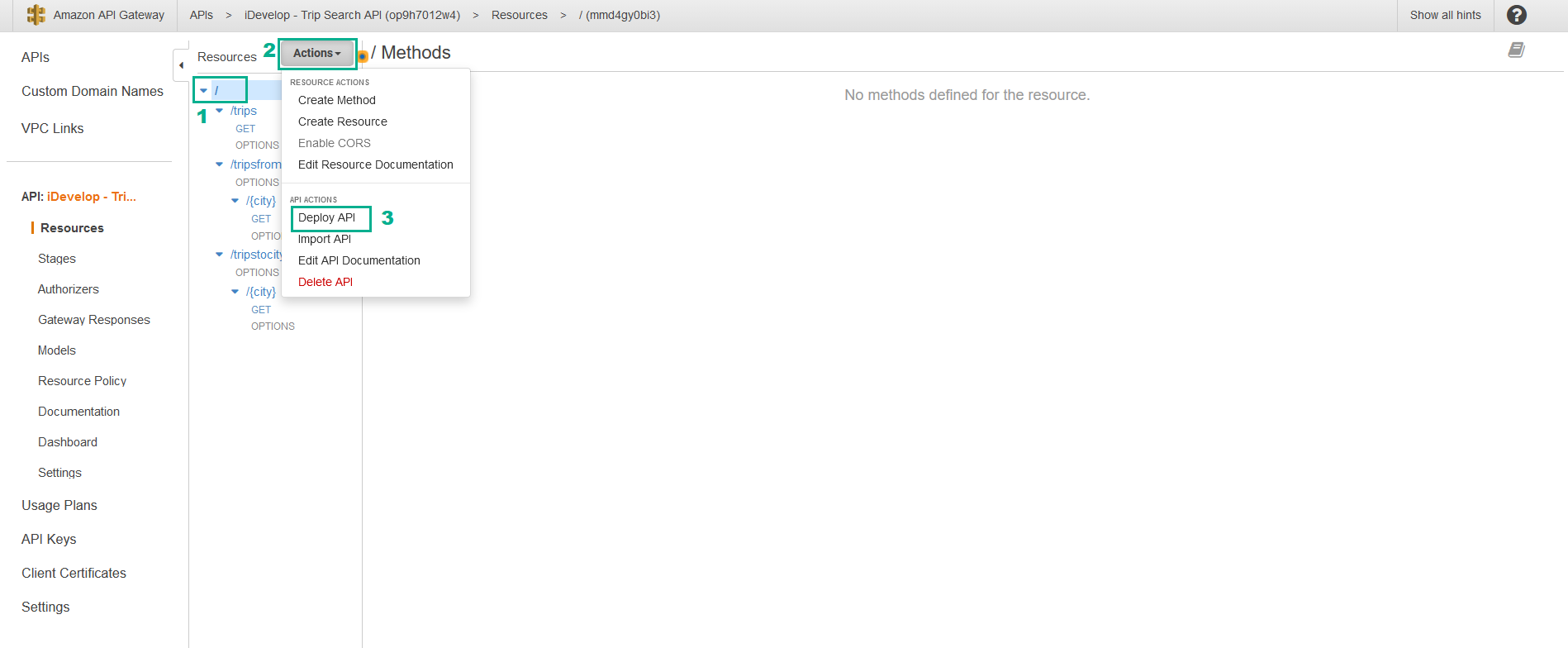
- In the Deployment stage section, select [New Stage] to create a new deployment stage.
- In the Stage name section, type
prod - In the Stage description section, type
Trips API - In the Deployment description section, type
Initial deployment - Click Deploy
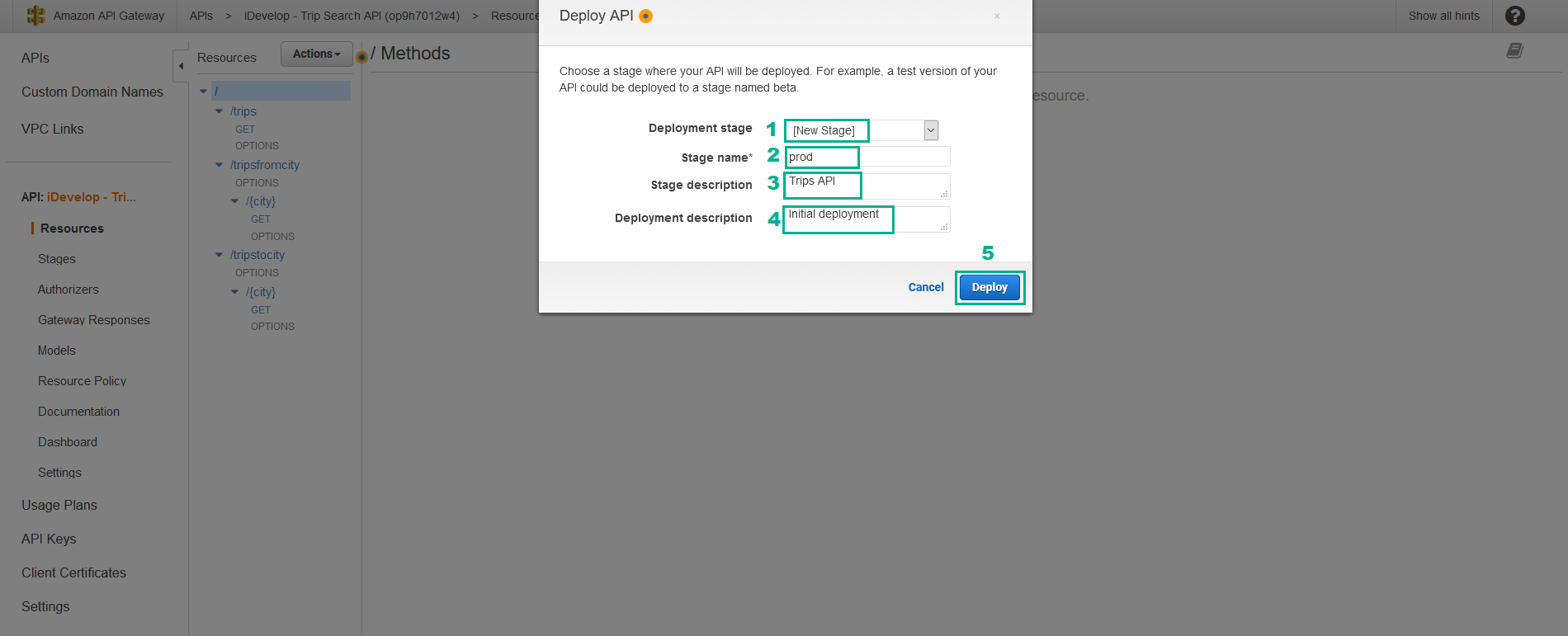
- The new stage prod will be created and you will see the prod Stage Editor
- Click Invoke URL
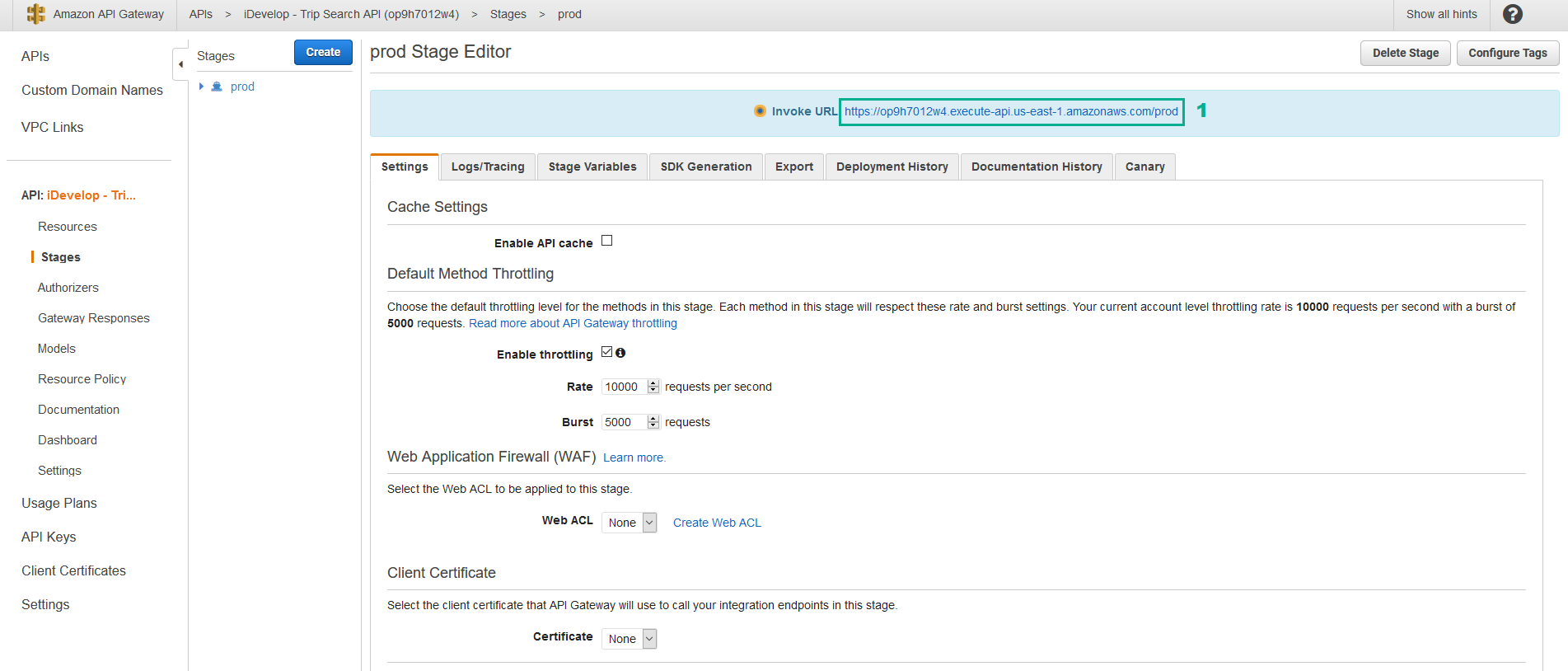
- A new window will open and hit the stage endpoint. You will see an error message stating {“message”:“Missing Authentication Token”}. This is because there is no handler for the root of the stage - you have only defined resources/methods beneath the /trips, /tripsfromcity and /tripstocitypaths.
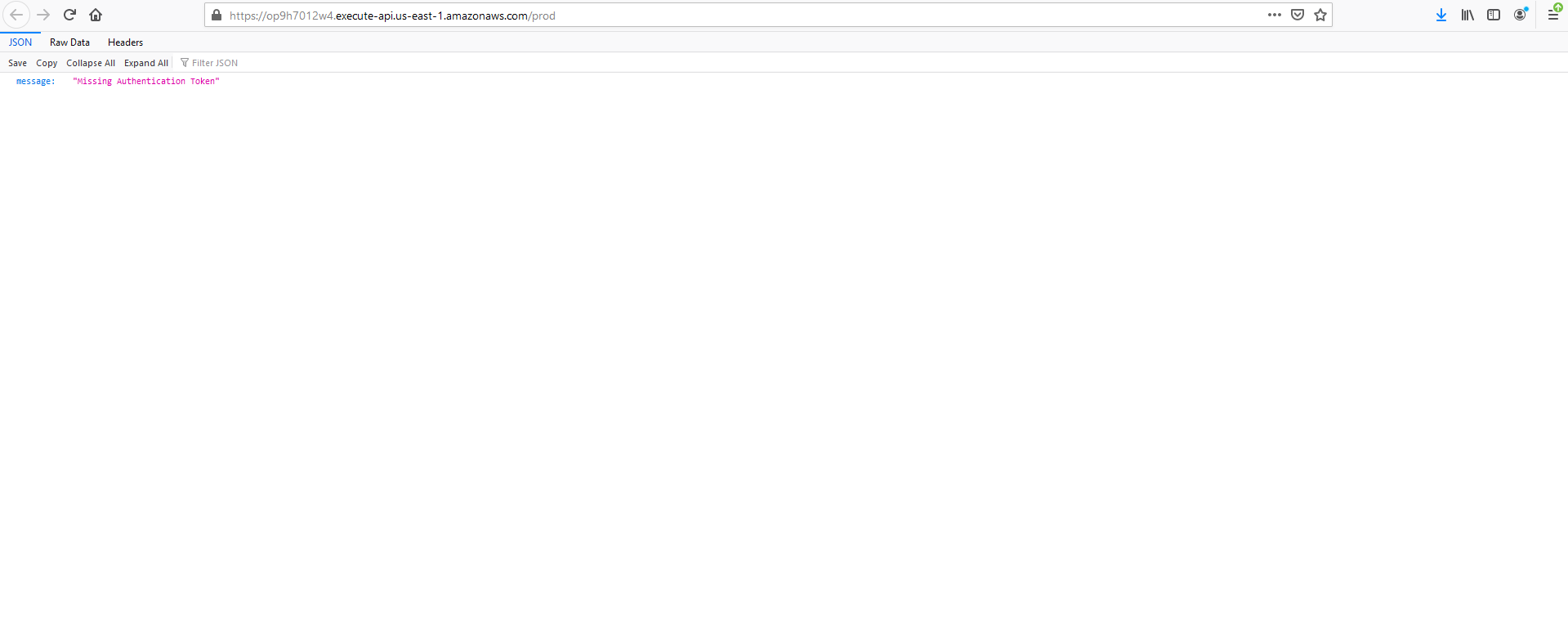
- Edit the URL in the URL bar of the browser and append /trips then press Enter. The page will refresh, and then display all of the available trips as JSON. The output will be similar to this:
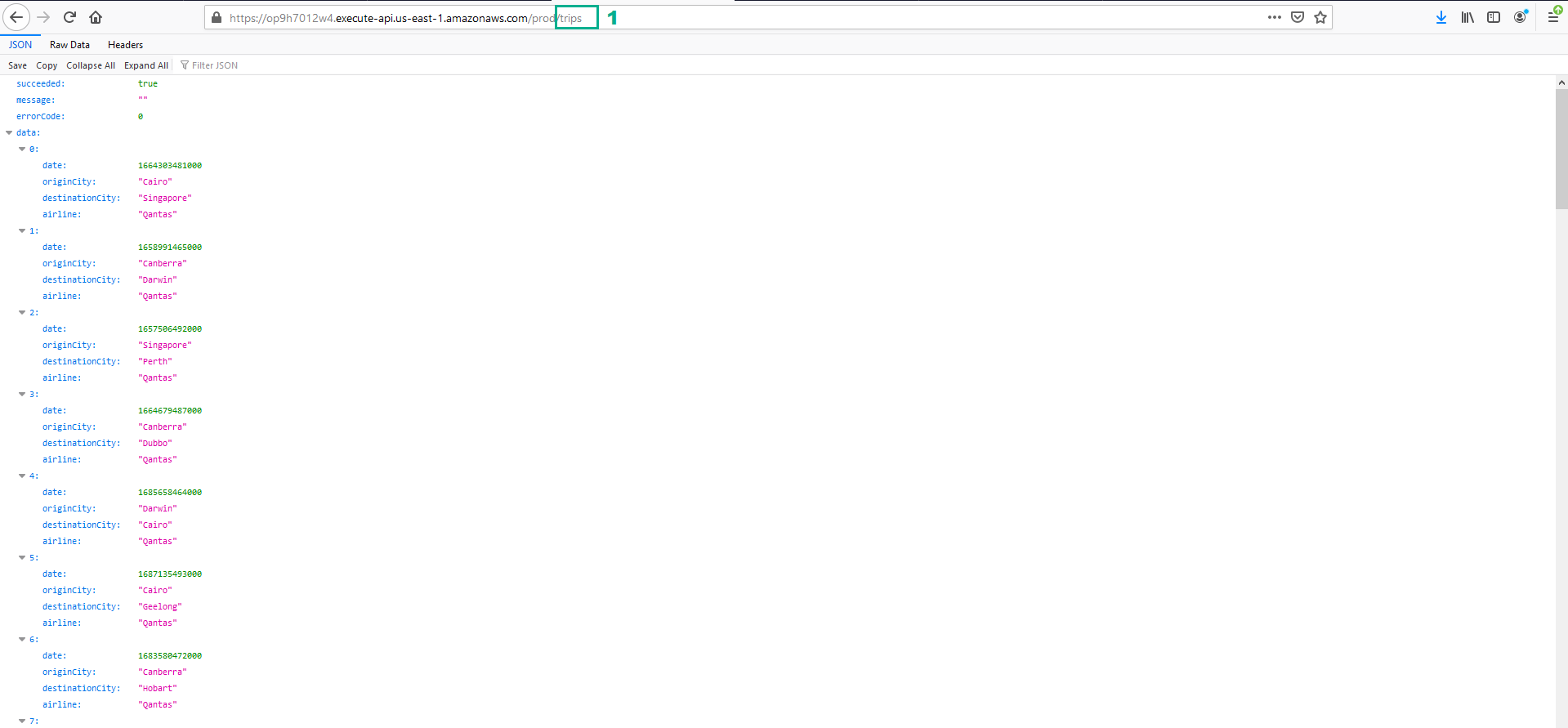
- Test the /tripsfromcity method, use
/tripsfromcity/Melbourneto search for all trips that leave from Melbourne.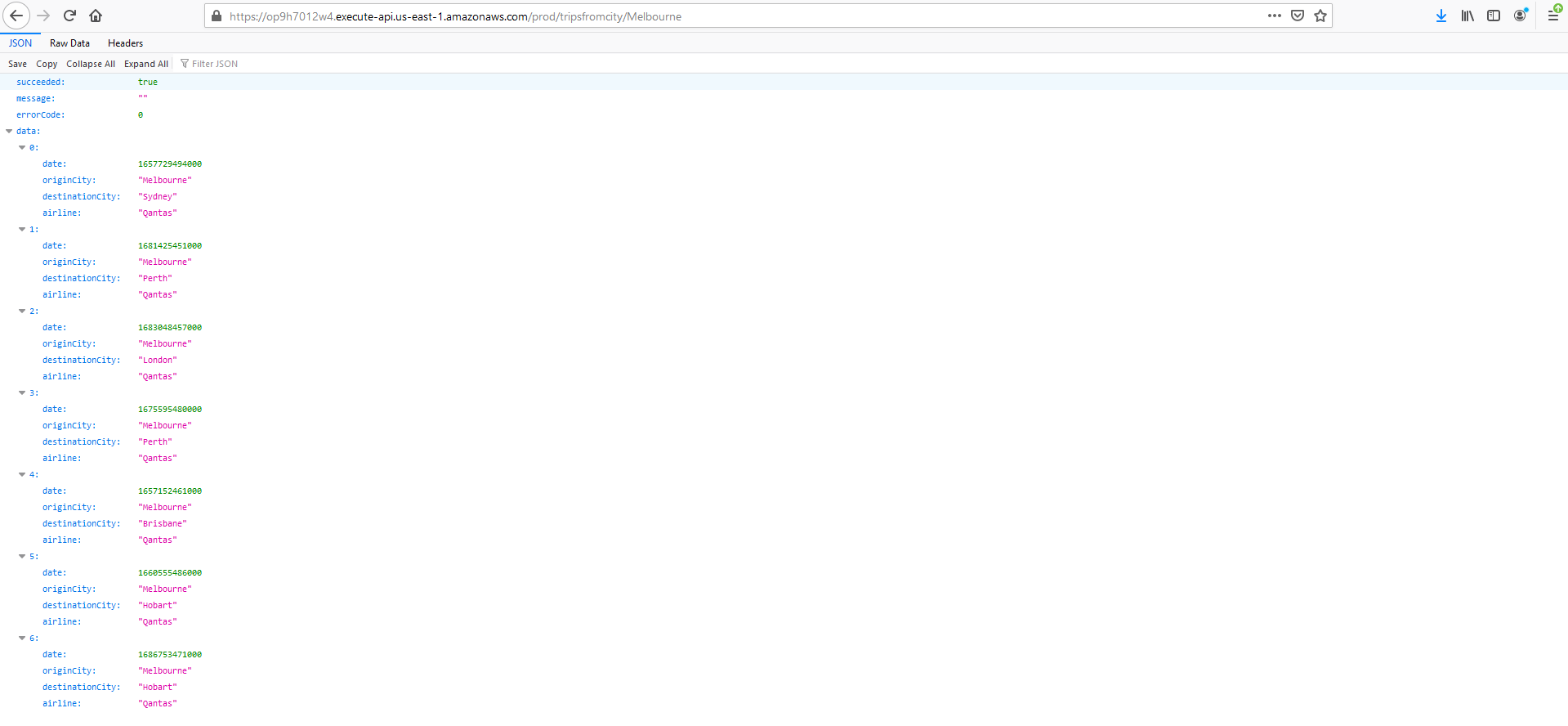
- Test the /tripstocity method, use
/tripstocity/Melbourneto search for all trips that go to Melbourne.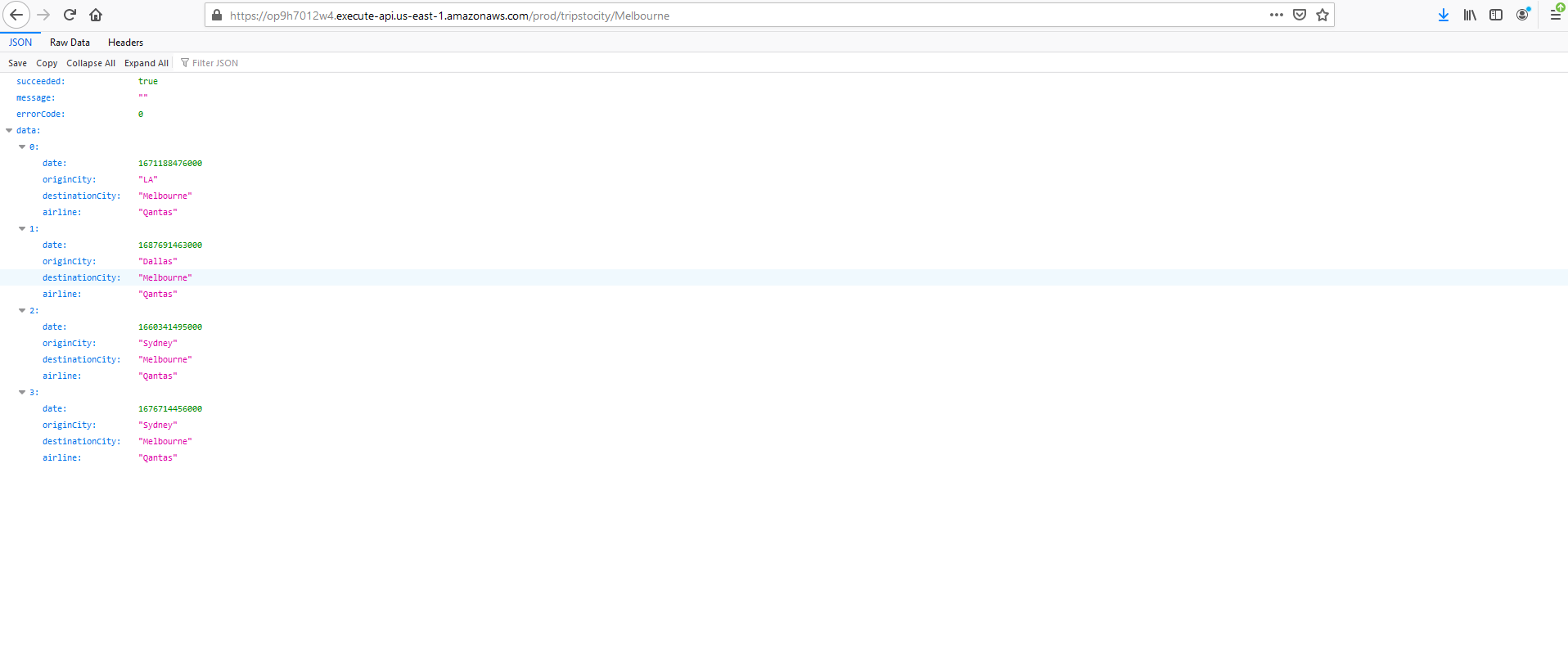
NIf the data looks right, and there are no errors, you are ready to move on to the next exercise.
Use CloudFormation/SAM via the AWS CLI to deploy the HotelSearch microservice
In the previous steps, you manually deployed and configured the TripSearch microservice, including the Lambda functions and API Gateway resources. You will have noticed that there are quite a few steps required, and doing this manually is time consuming and prone to errors. In this step, you will use the AWS CLI and CloudFormation/SAM to deploy the HotelSearch microservice, instead of manually deploying the resources.
By using CloudFormation/SAM, many of the manual steps will be taken care of for you, streamlining the deployment process. You will still have to manually trigger the process, but the actual deployment will be automated.
The HotelSpecials microservice needs to access a MySQL database to retrieve the hotel specials data. The lab environment has automatically deployed and seeded a database for you, and the connection details are provided in Cloudformation Outputs tab with instructions below on where to update the placeholder in the template you will use to deploy the microservice. The MySQL instance has been deployed using Amazon RDS and is not publicly-accessible since it is launched in a private subnet. Therefore, for the Lambda function to be able to connect to the database, the Lambda function will also need to be deployed into a private subnet by enabling VPC Integration. The template.yml file provided has all the required setup to do this, you just need to update the placeholders as per the below instructions.
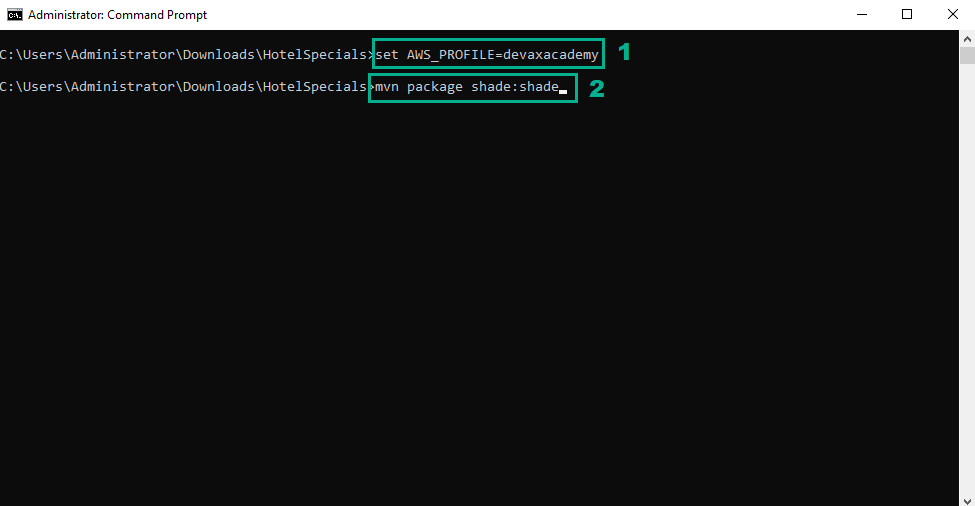 67. When the target JAR is built, whick is in the target folder of the project and whose name is hotelspecials-1.0.0.jar
67. When the target JAR is built, whick is in the target folder of the project and whose name is hotelspecials-1.0.0.jar
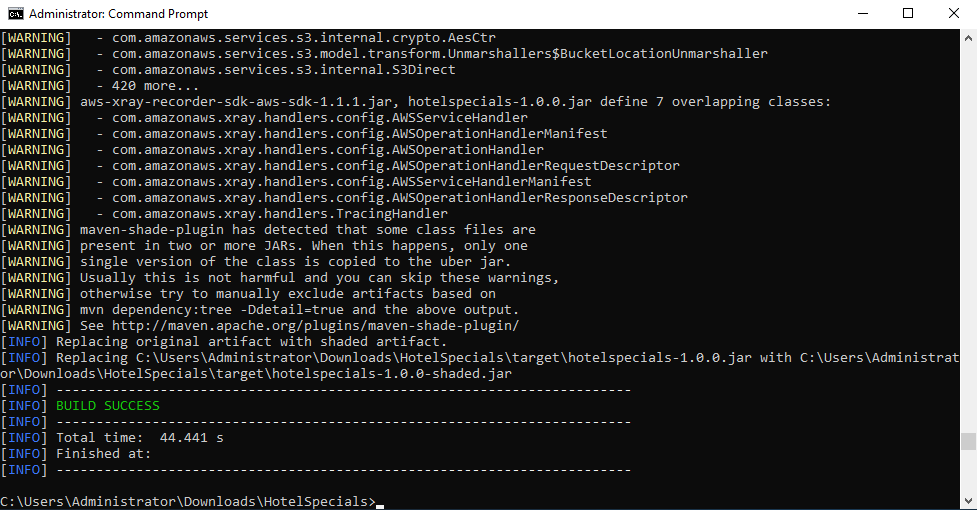 68. Go to
68. Go to 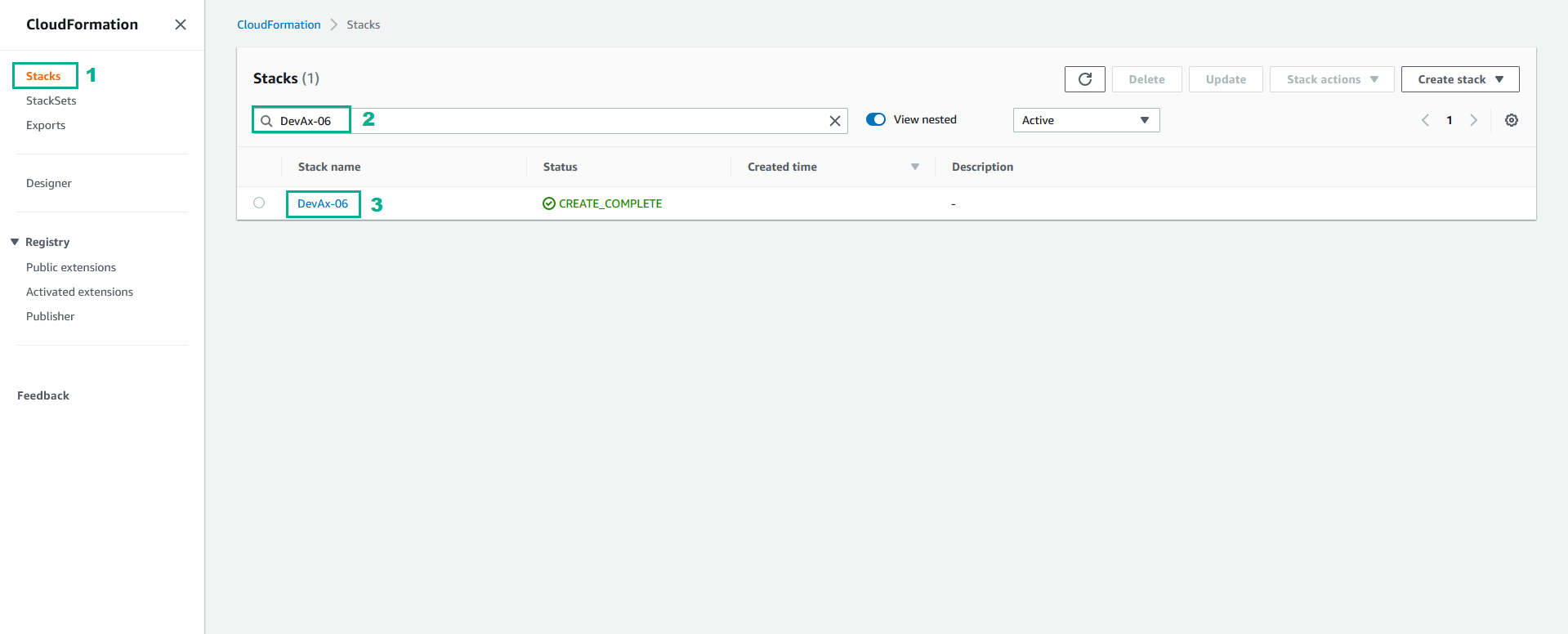
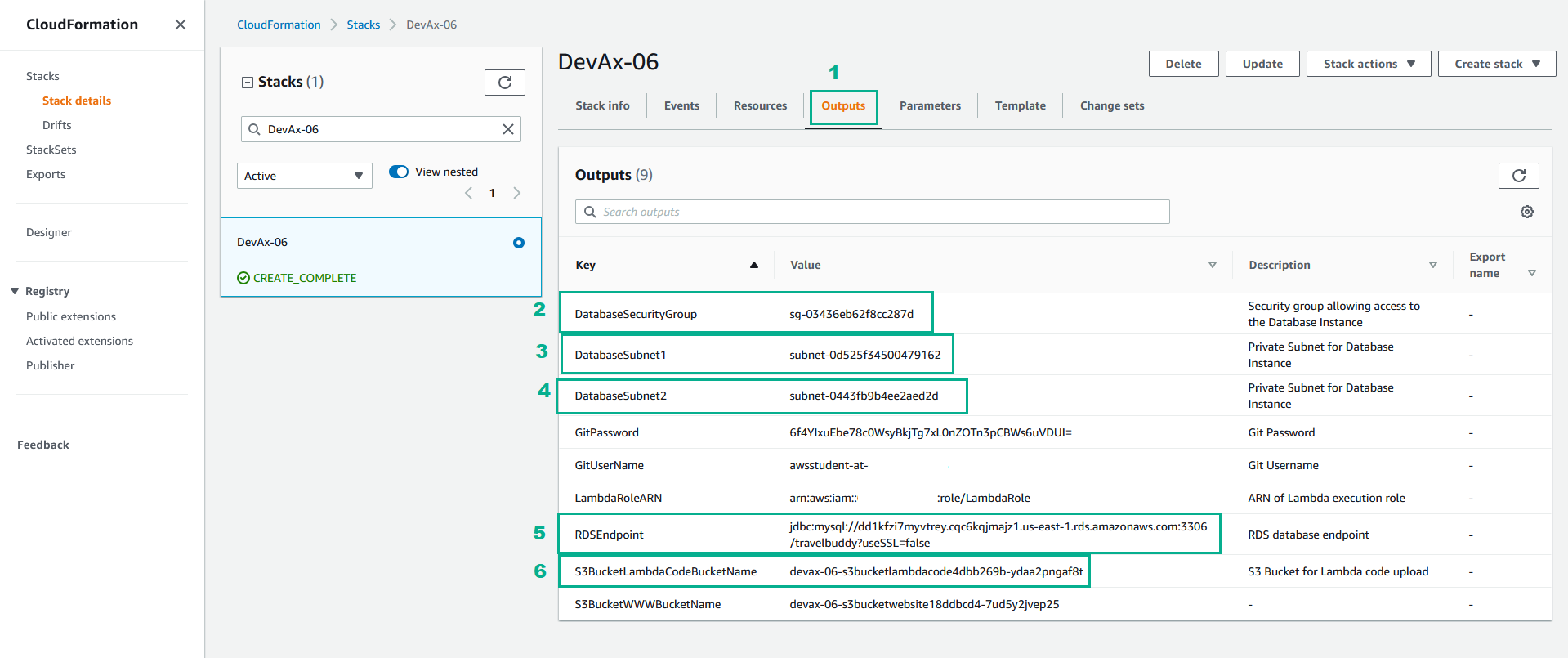
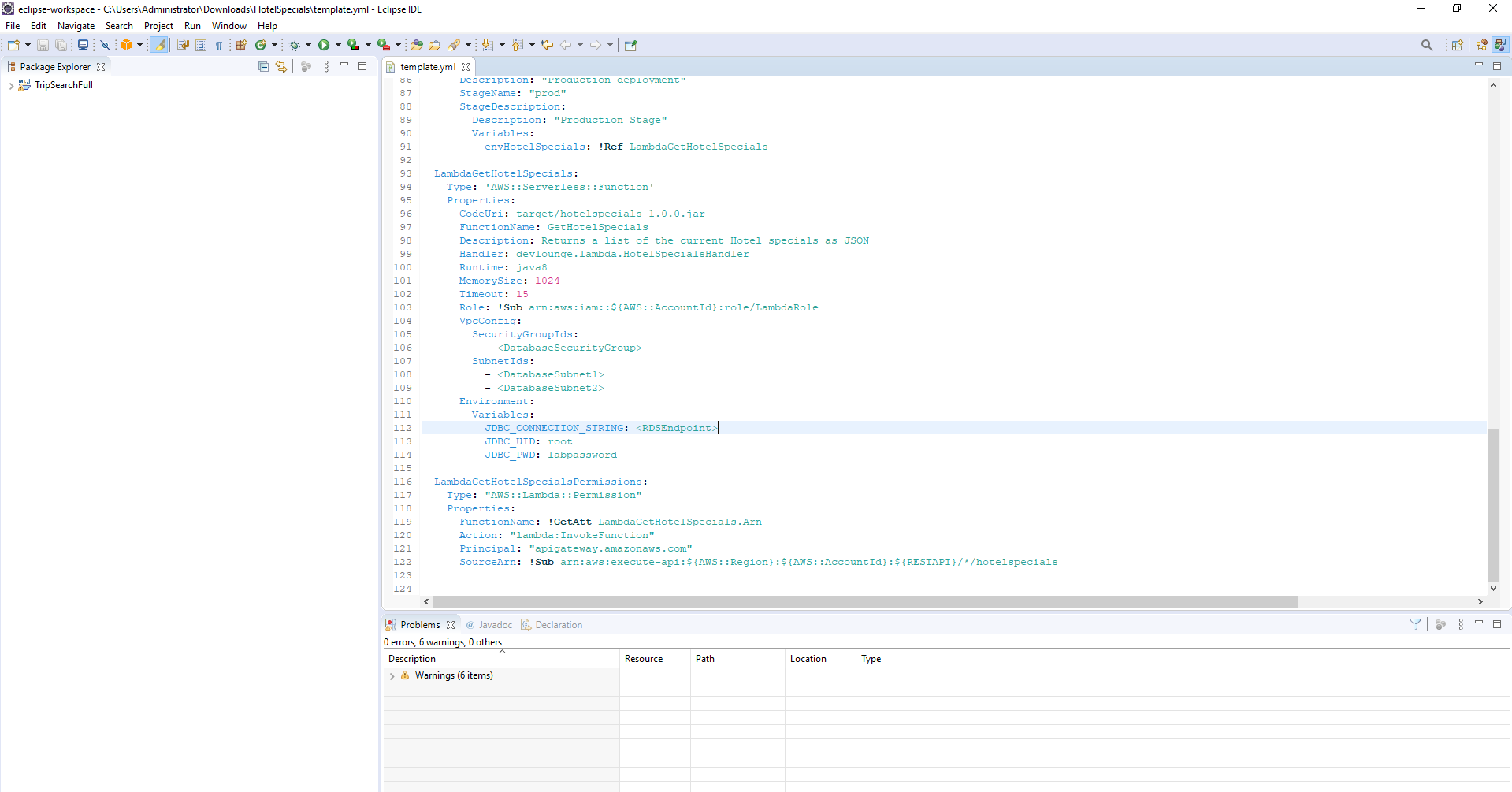
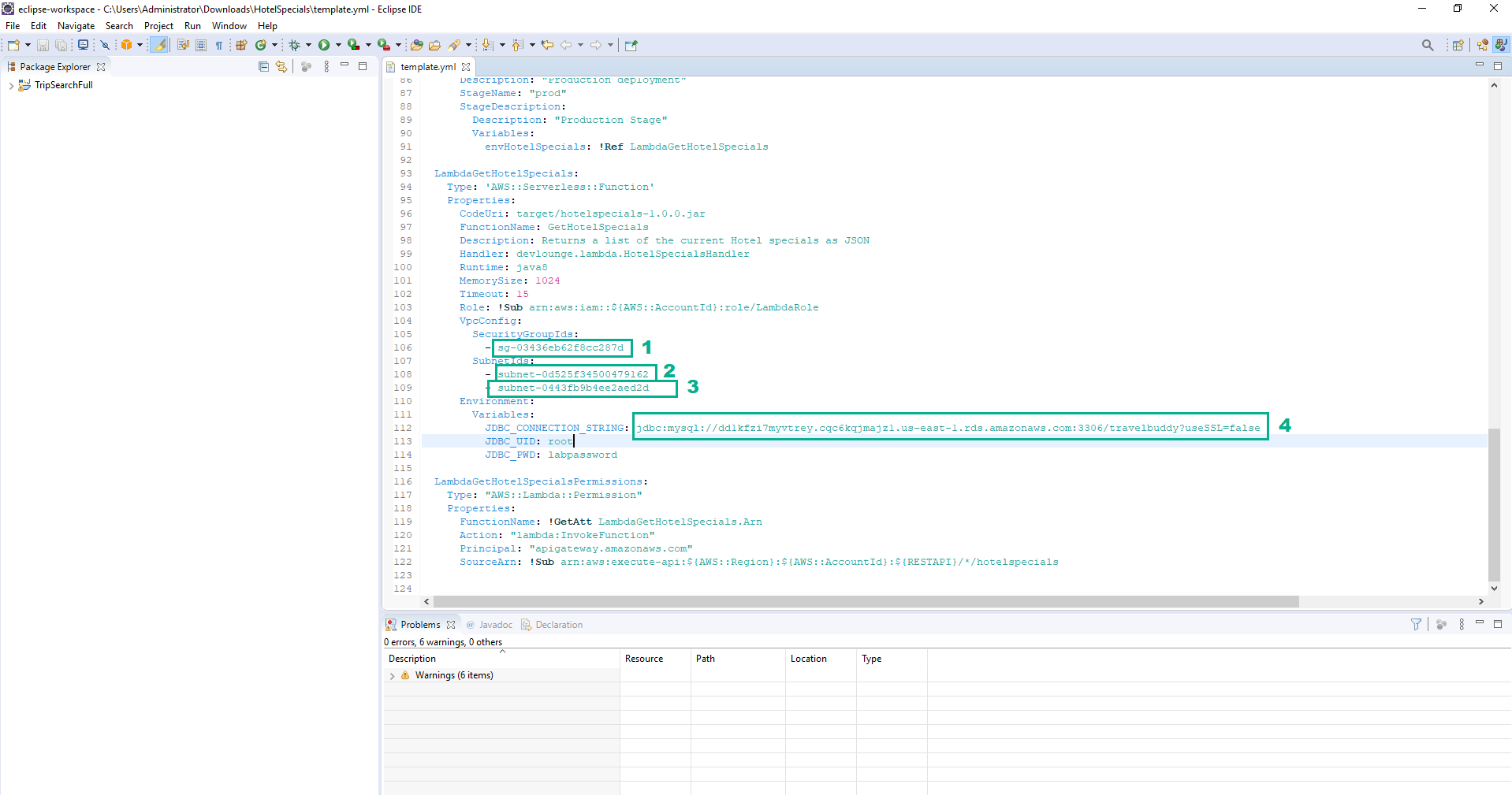
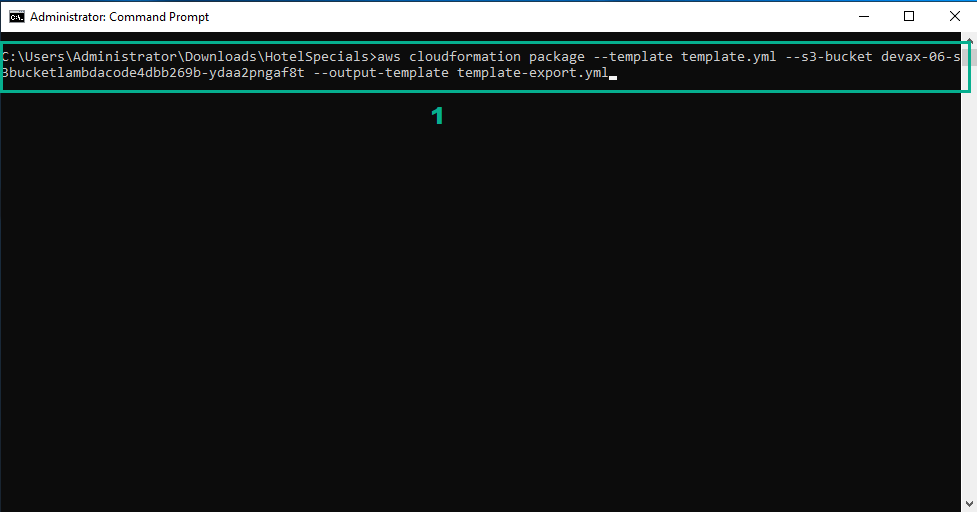
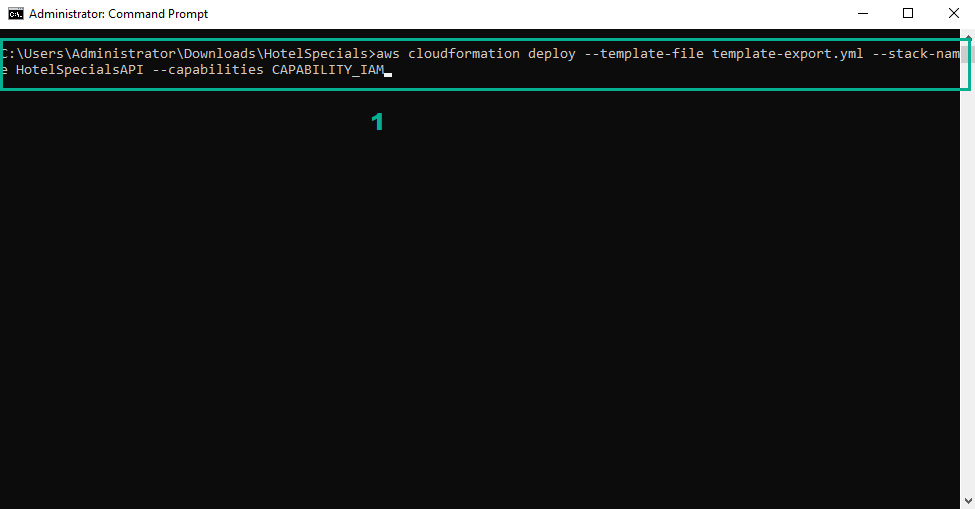 74. Go to
74. Go to 